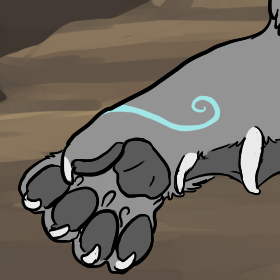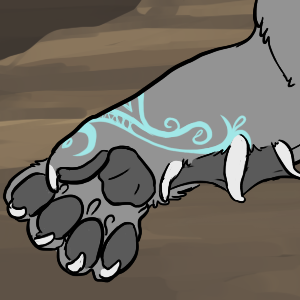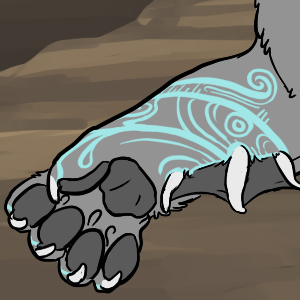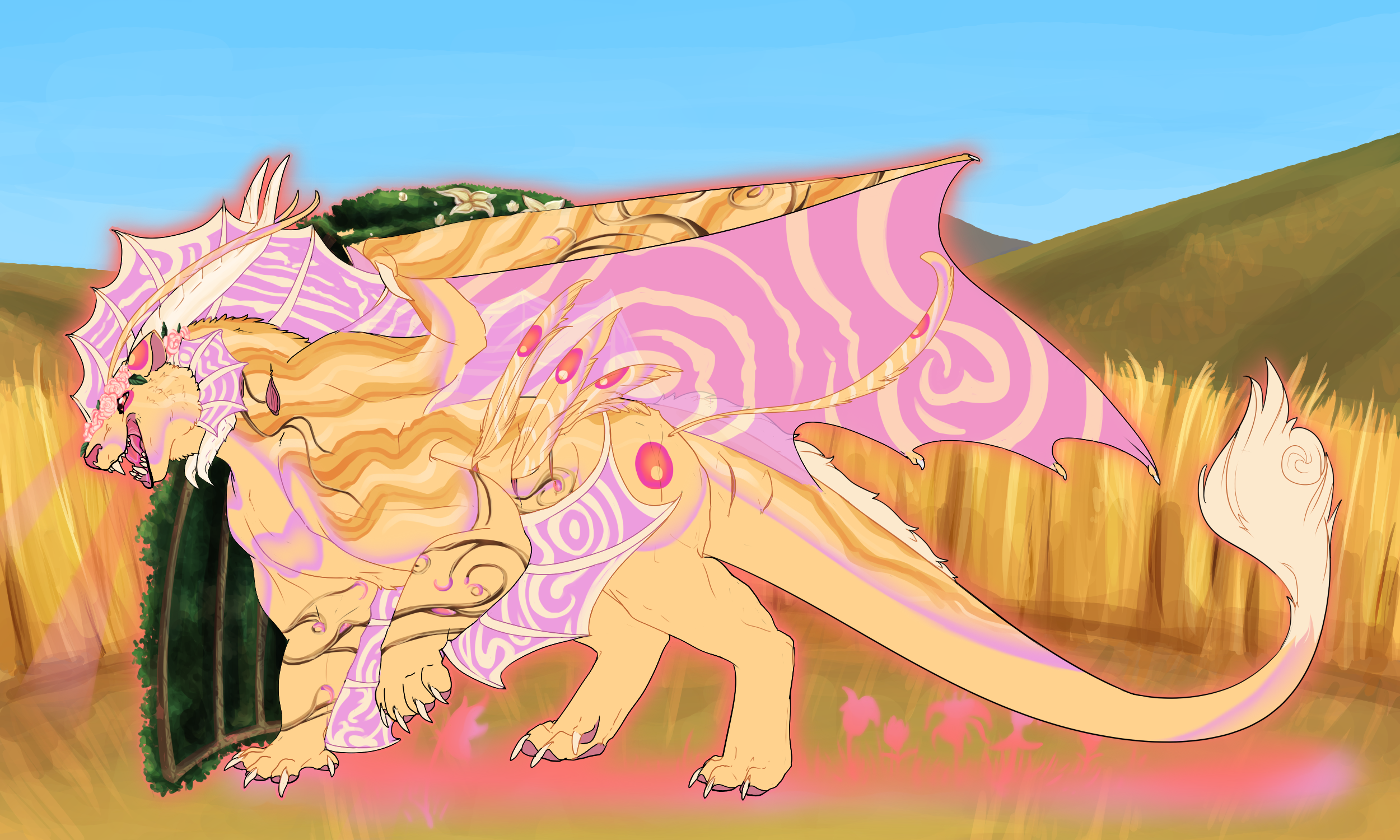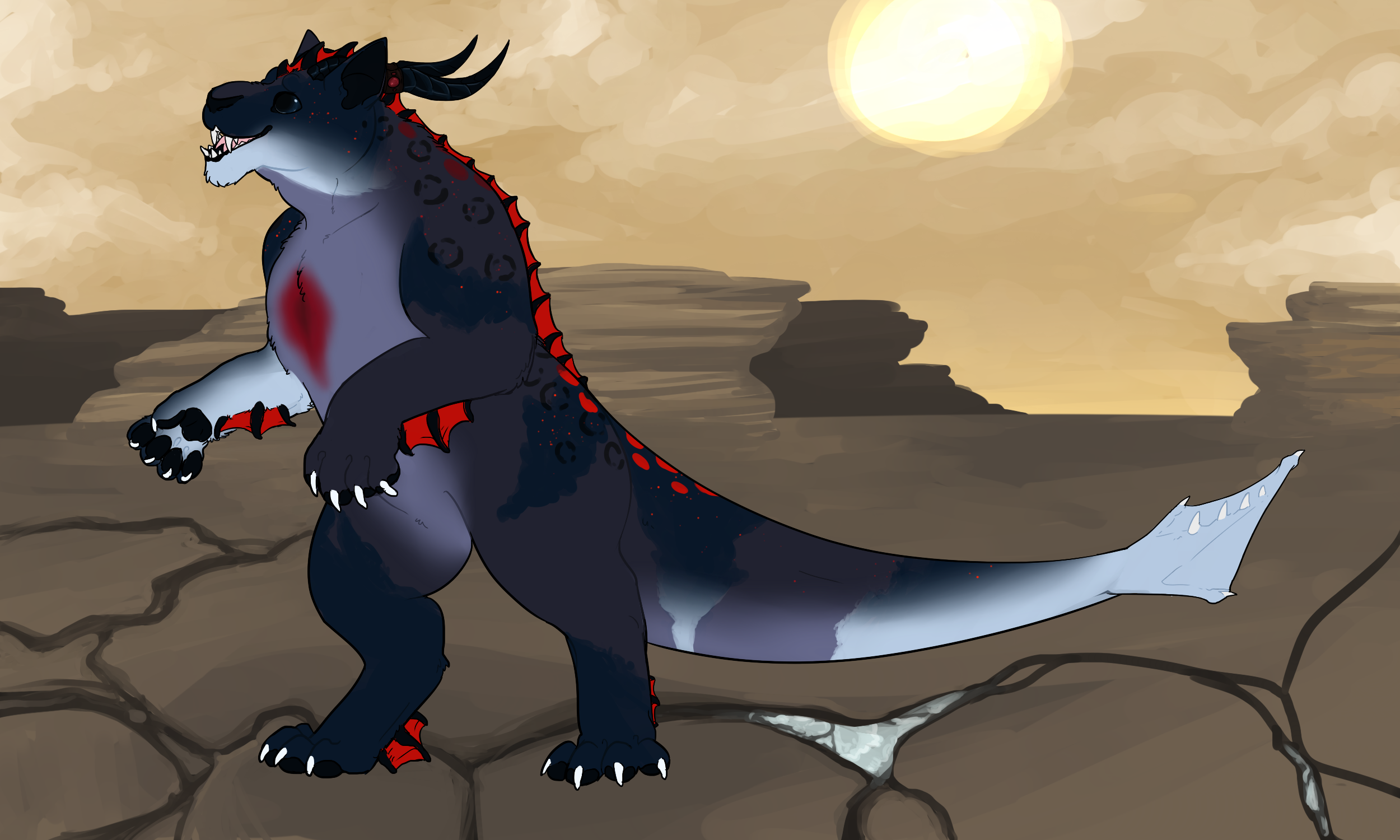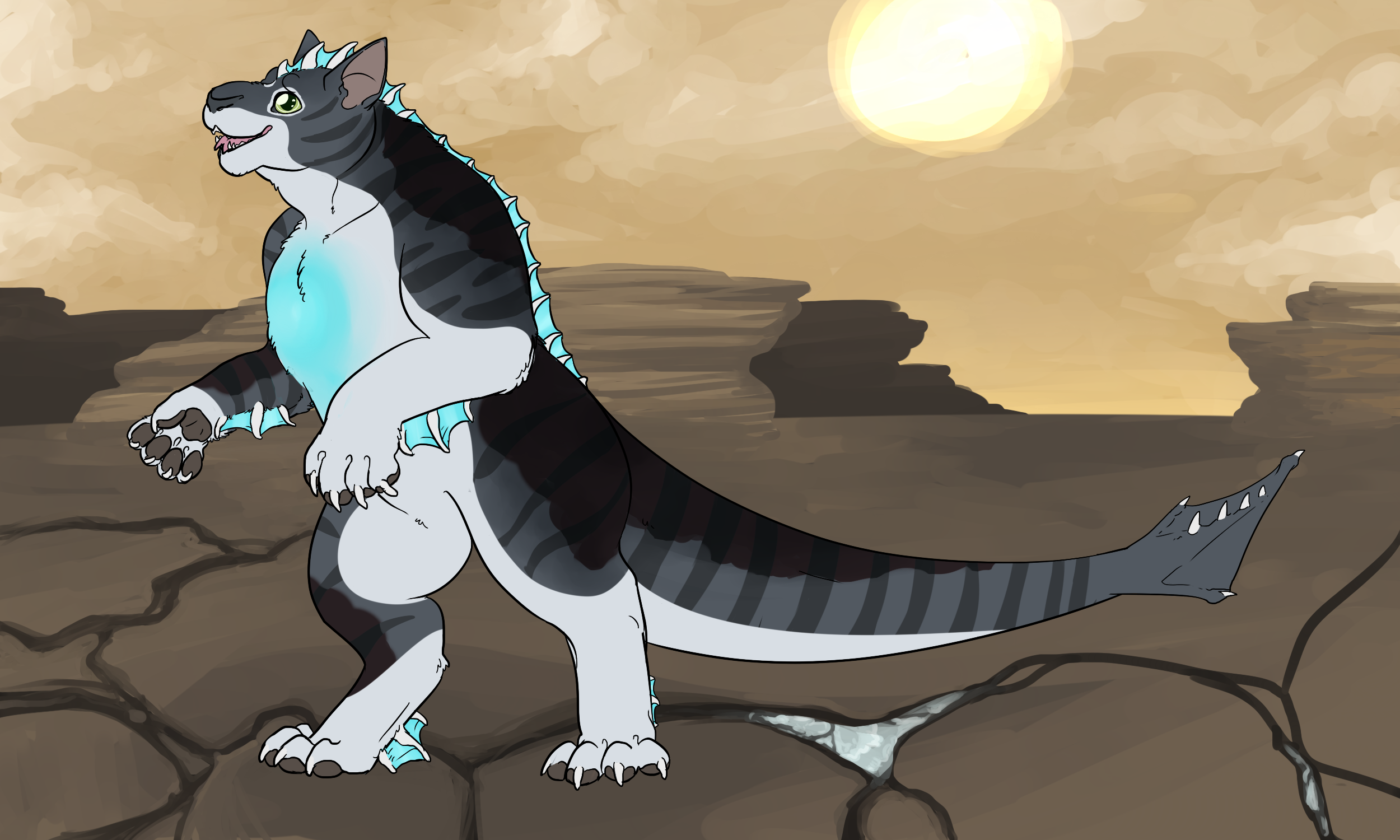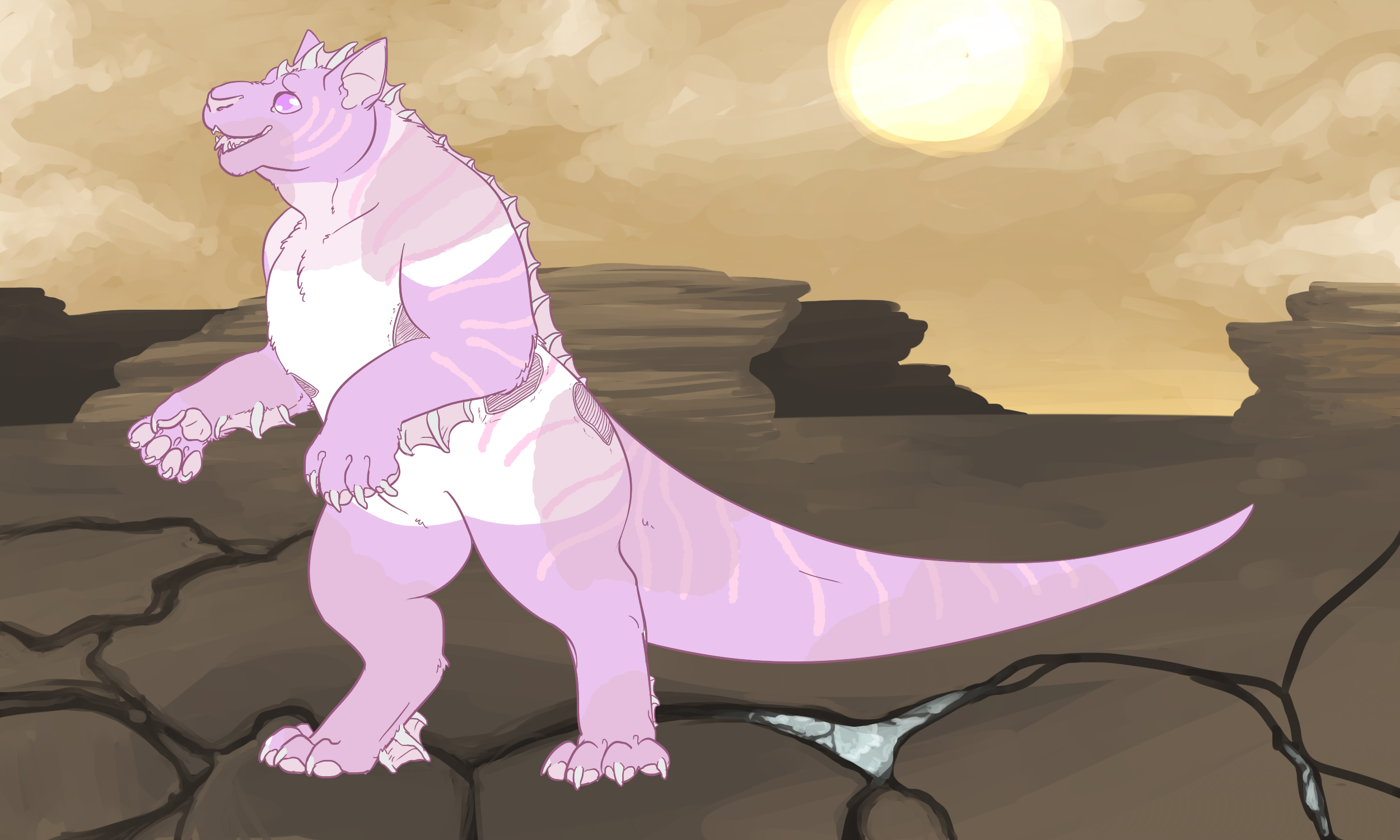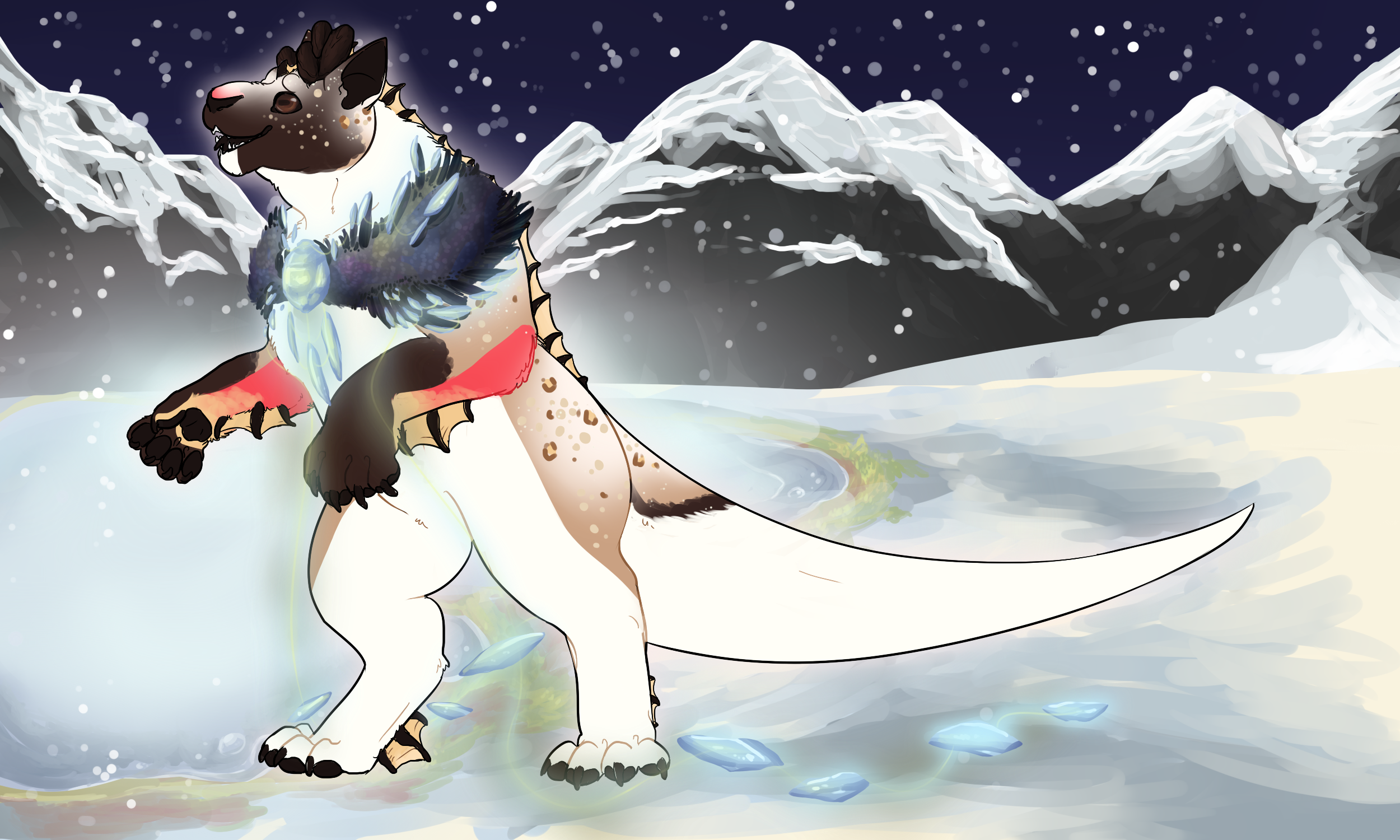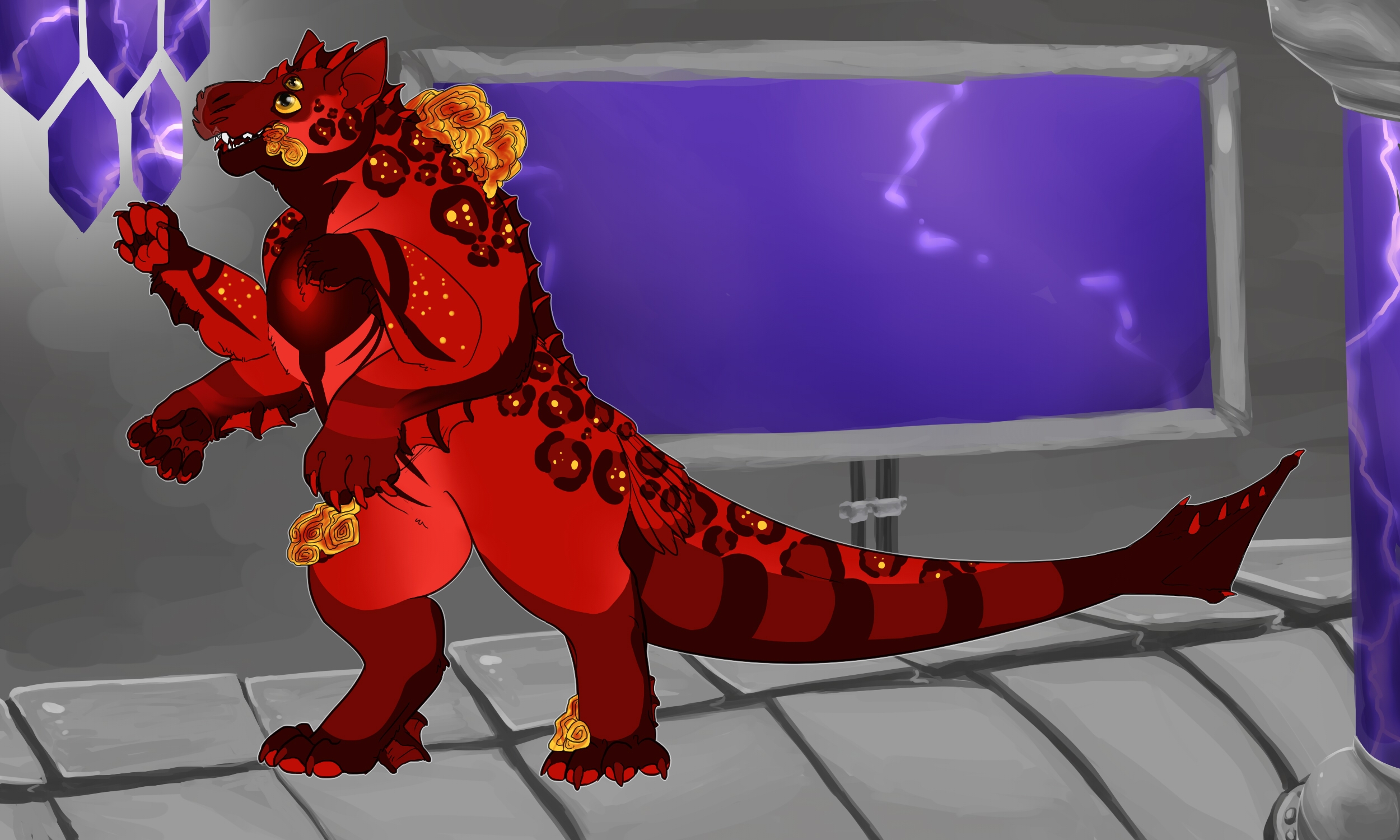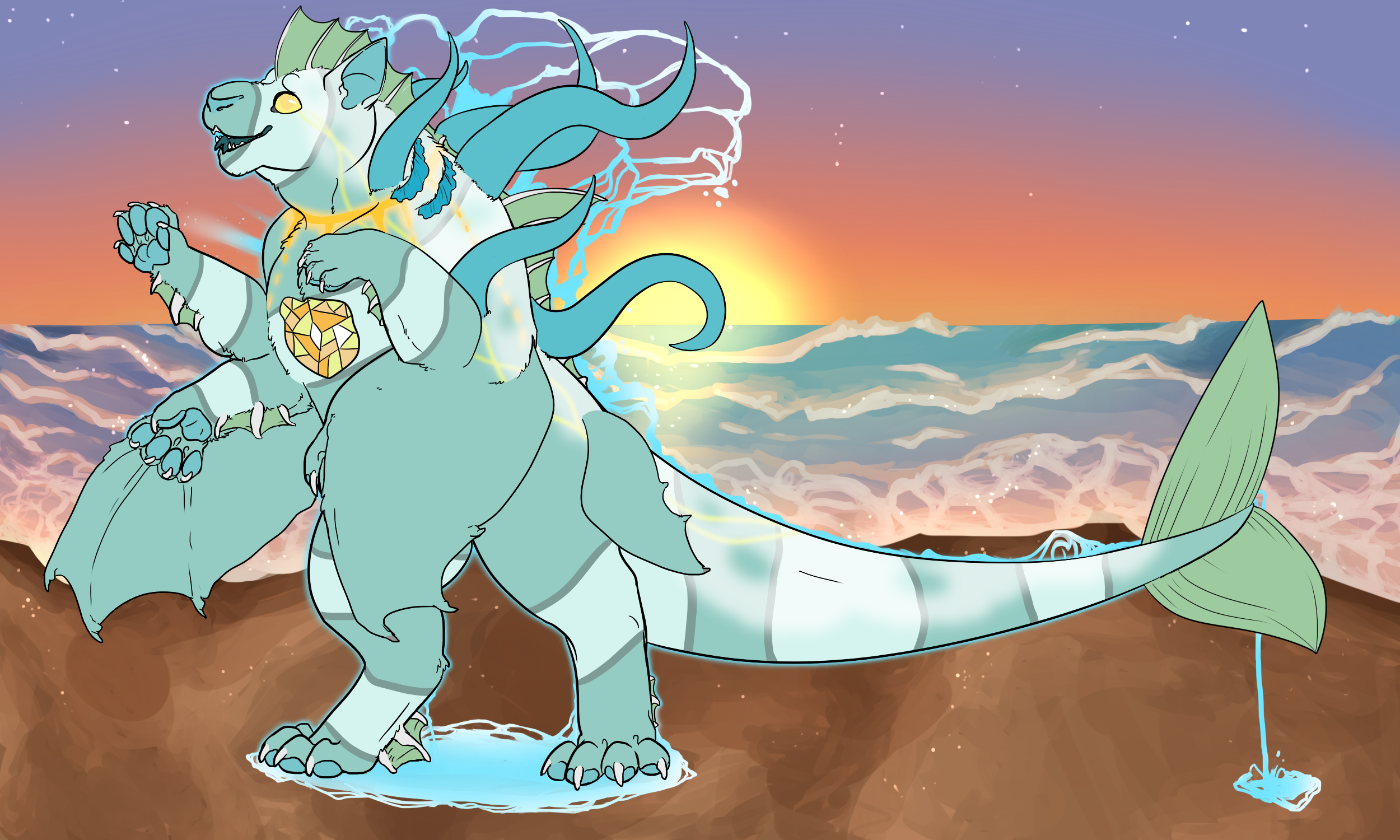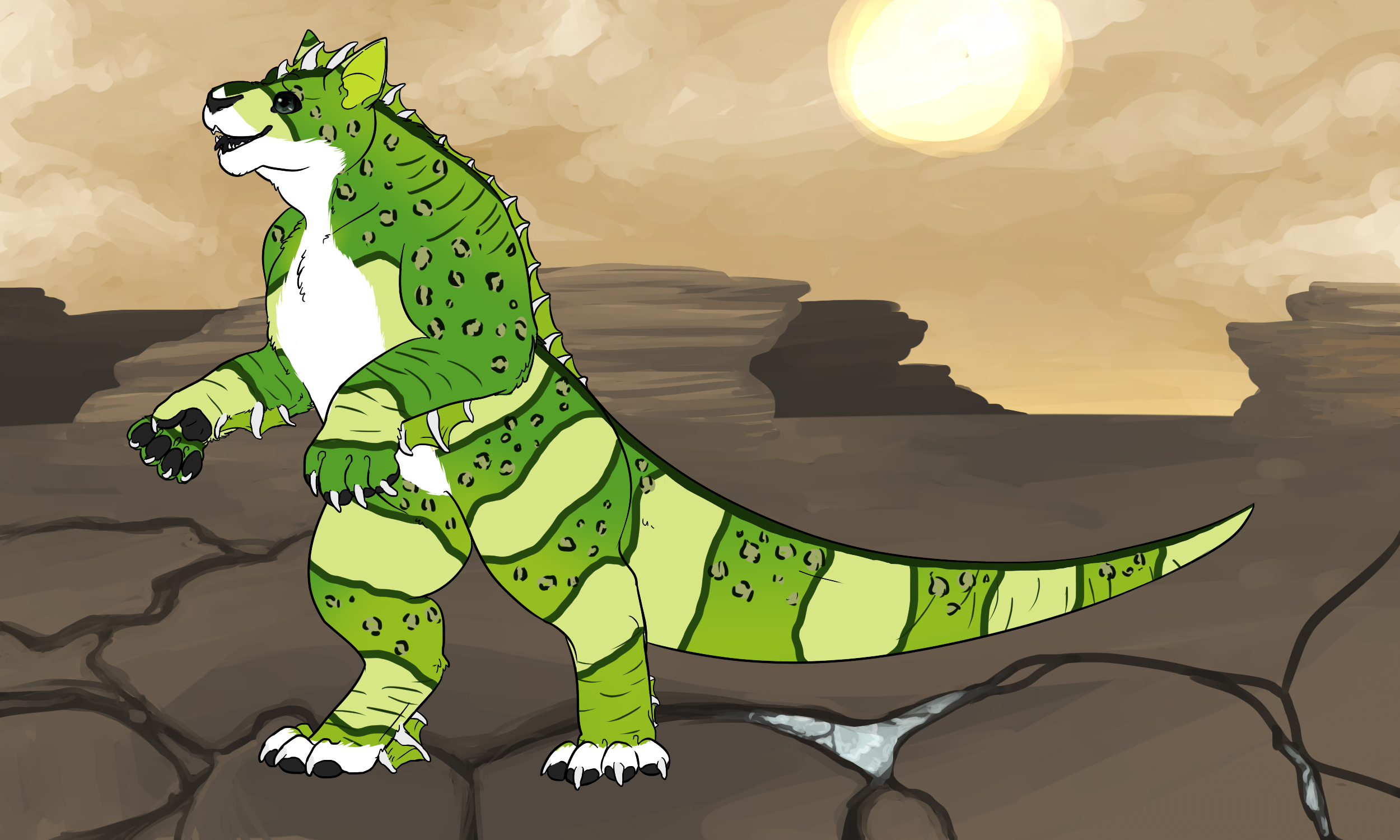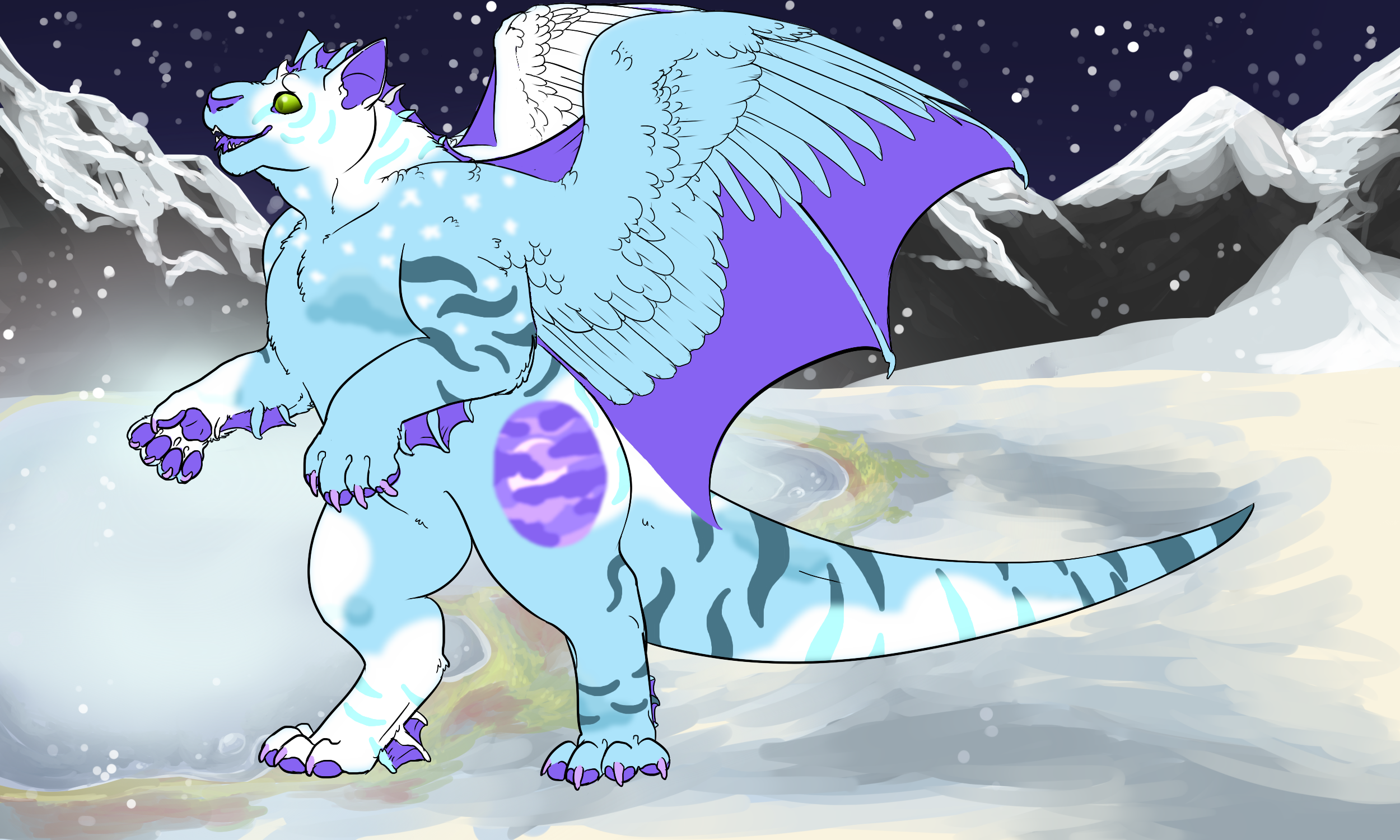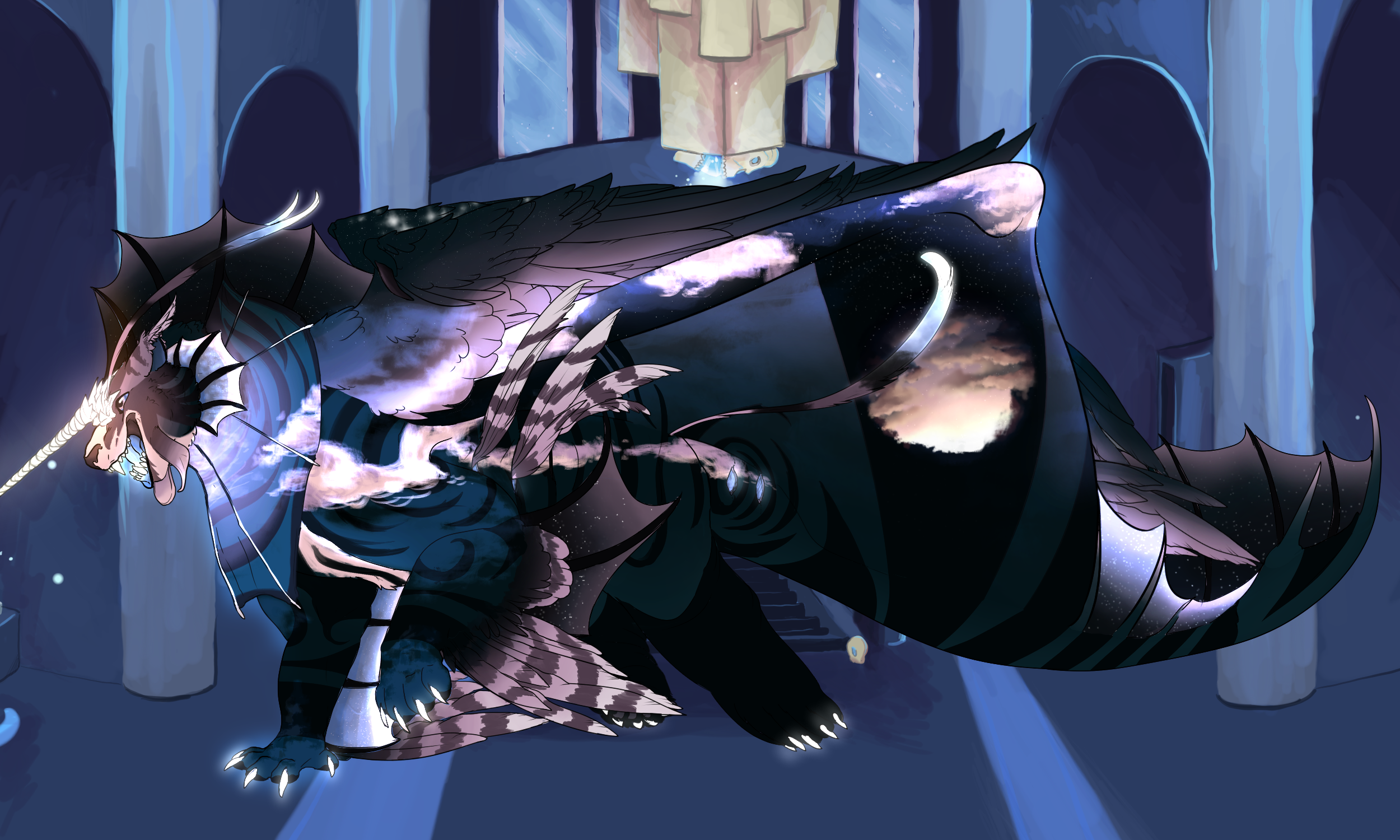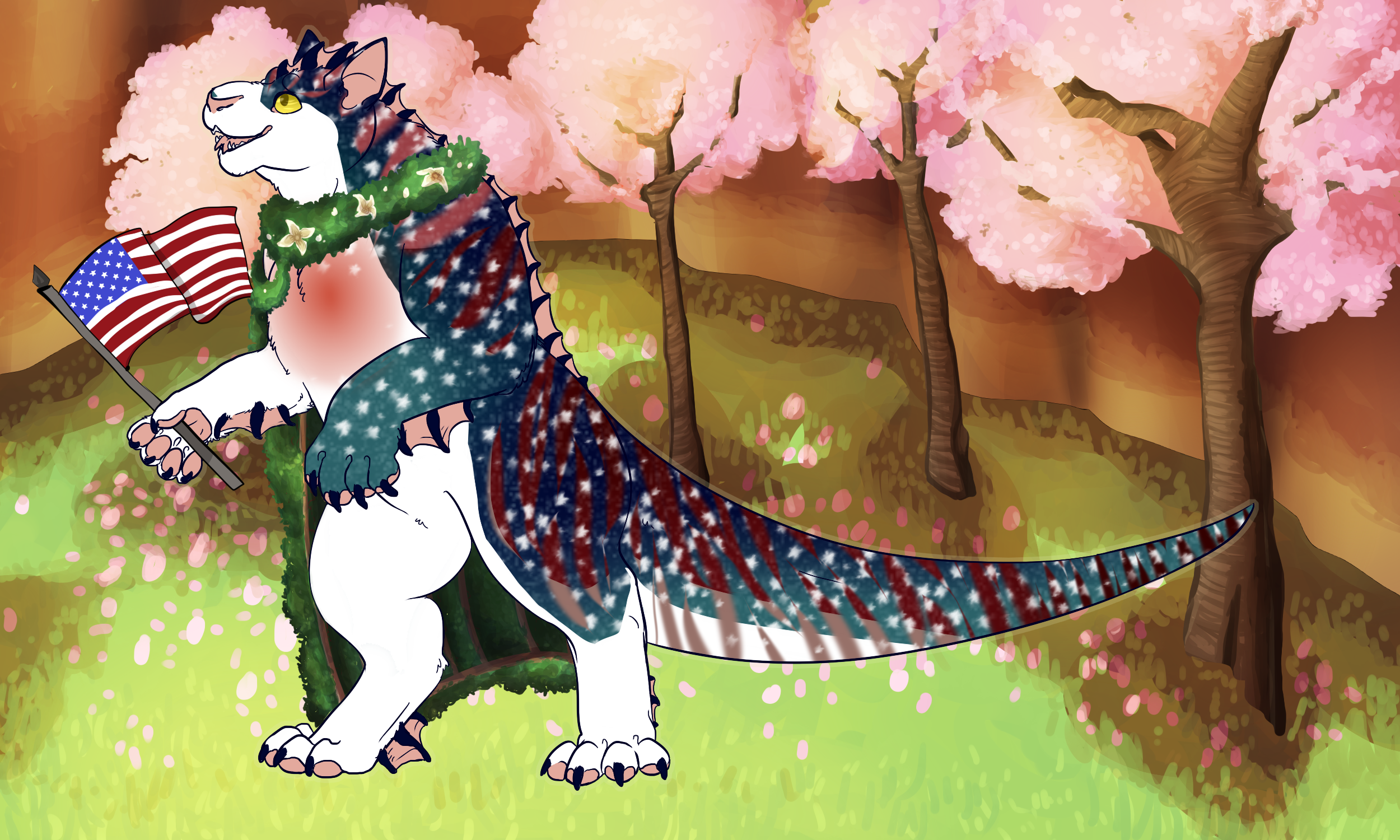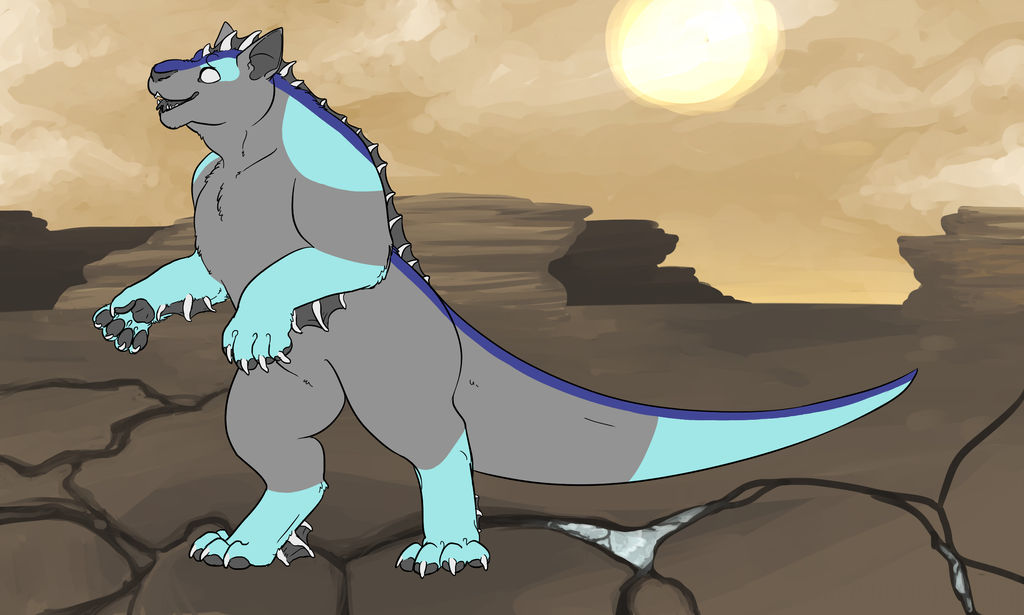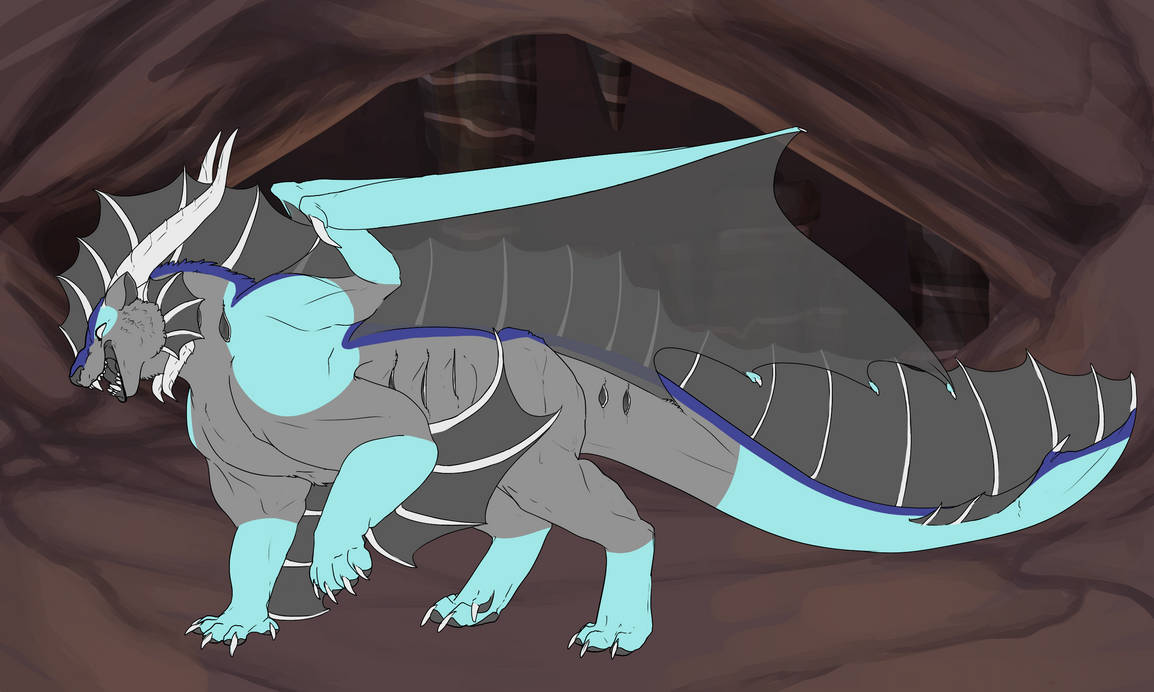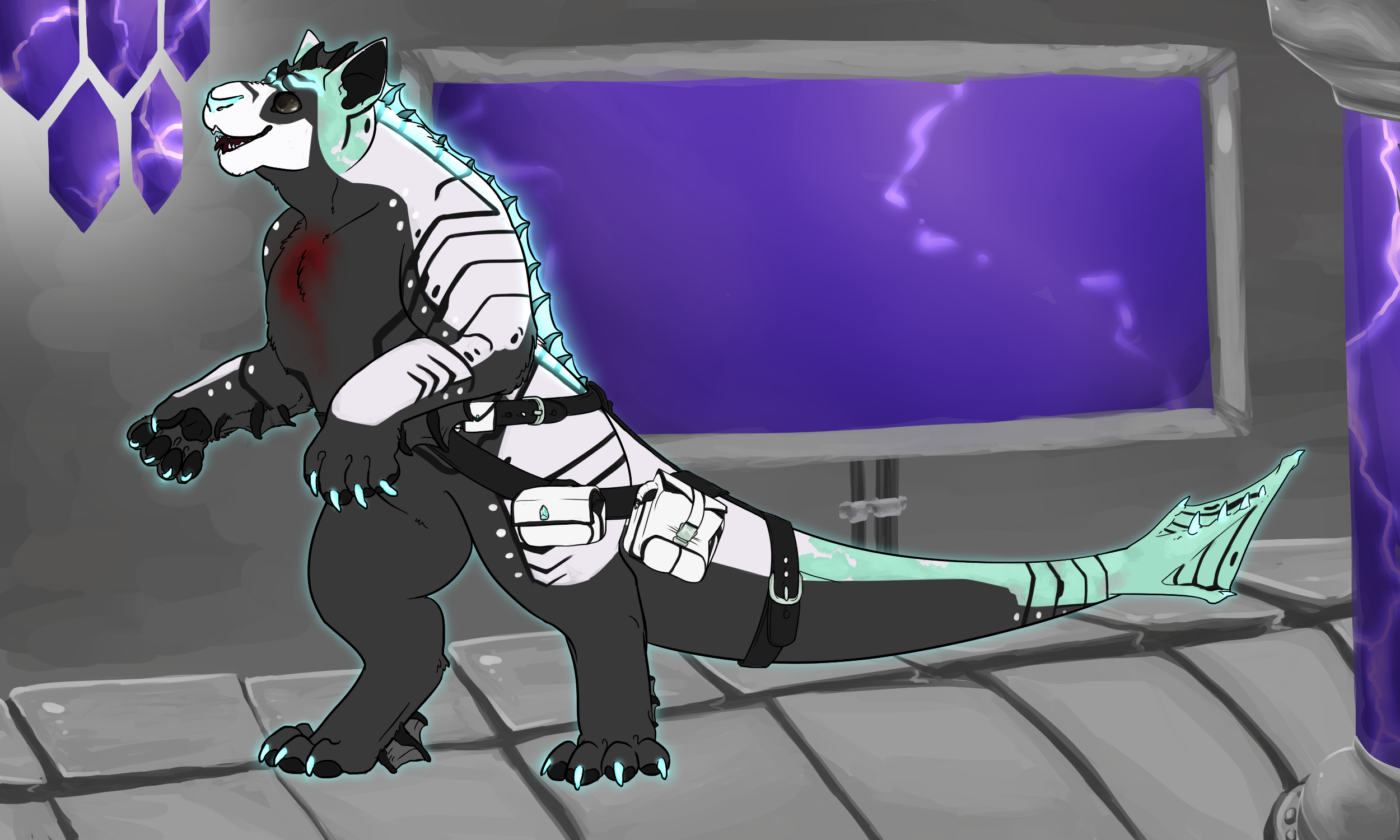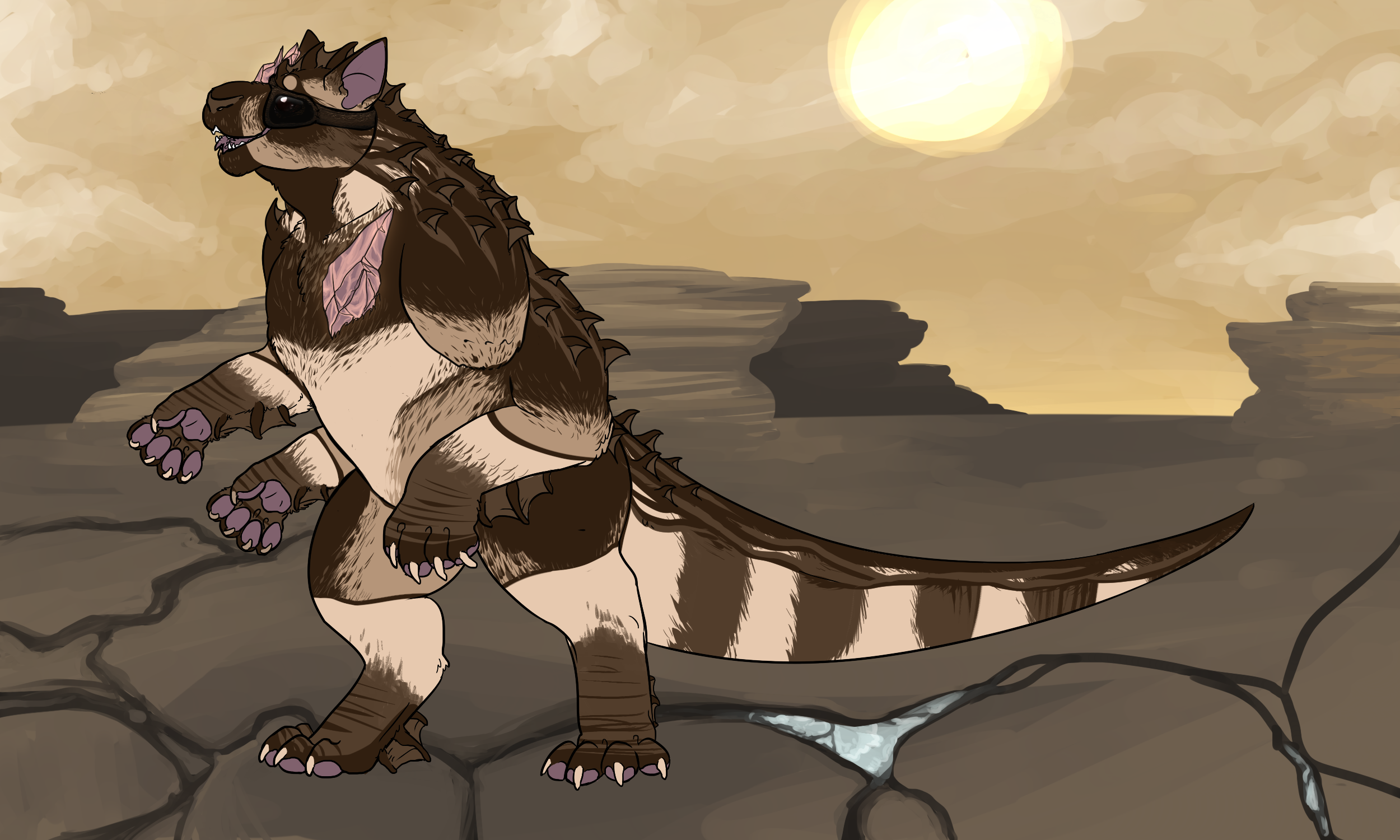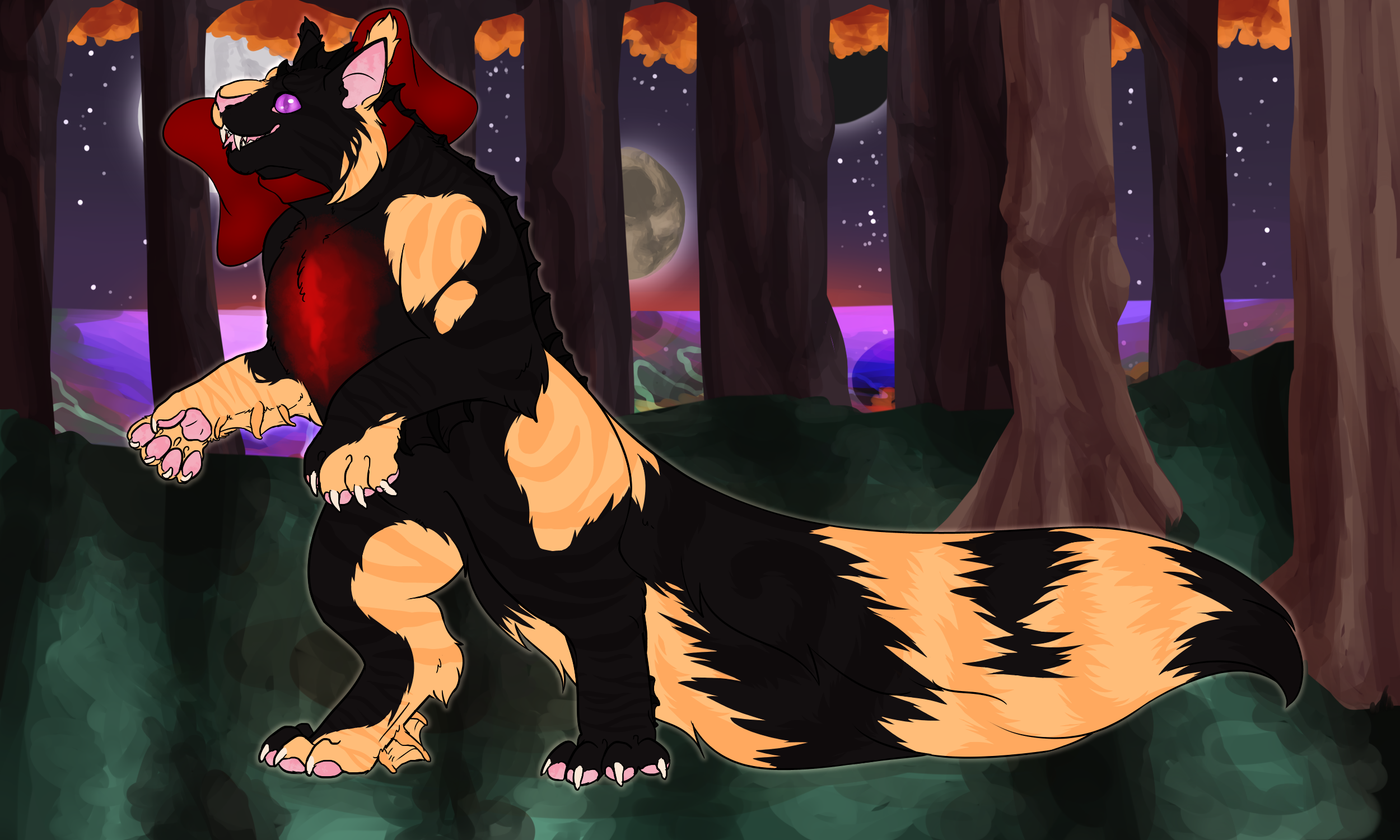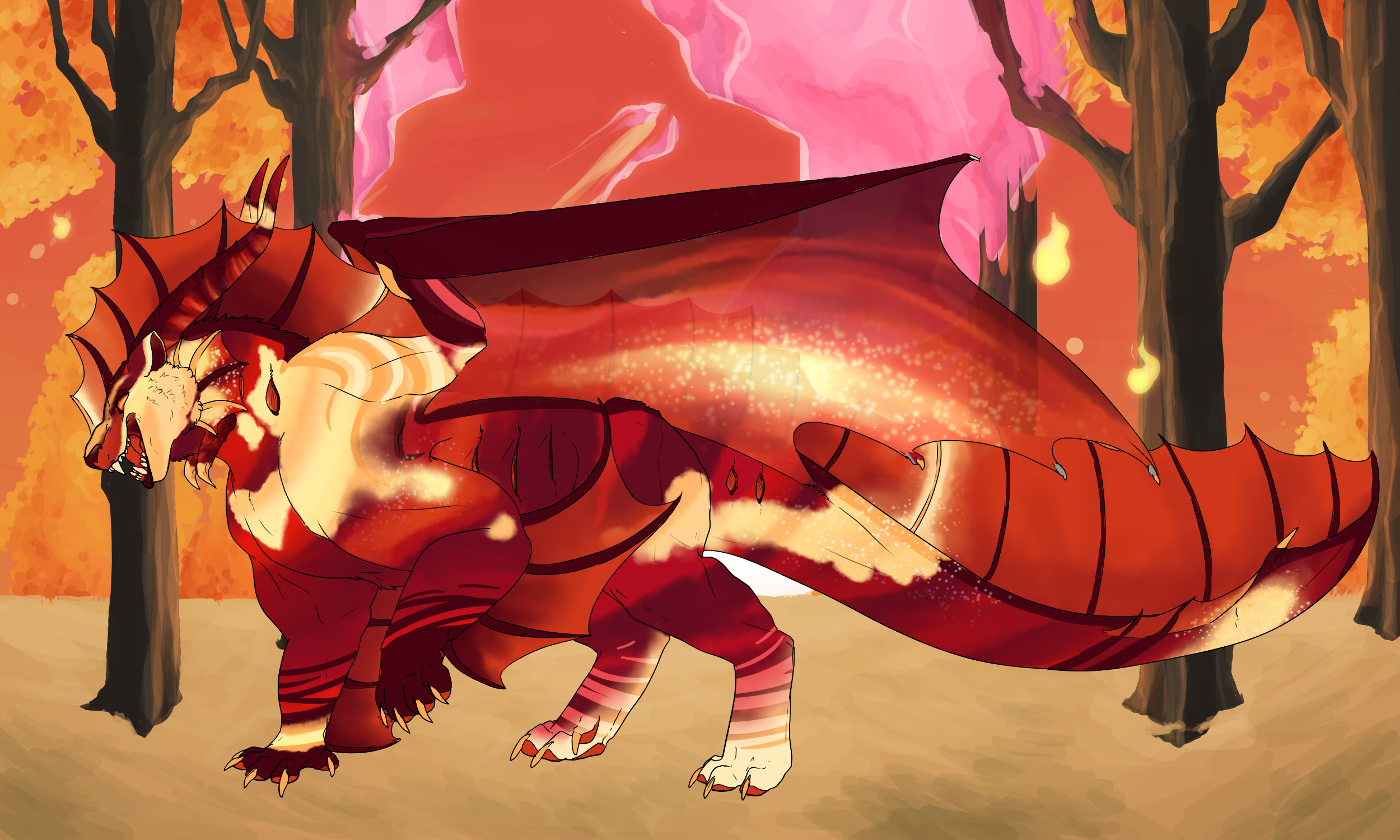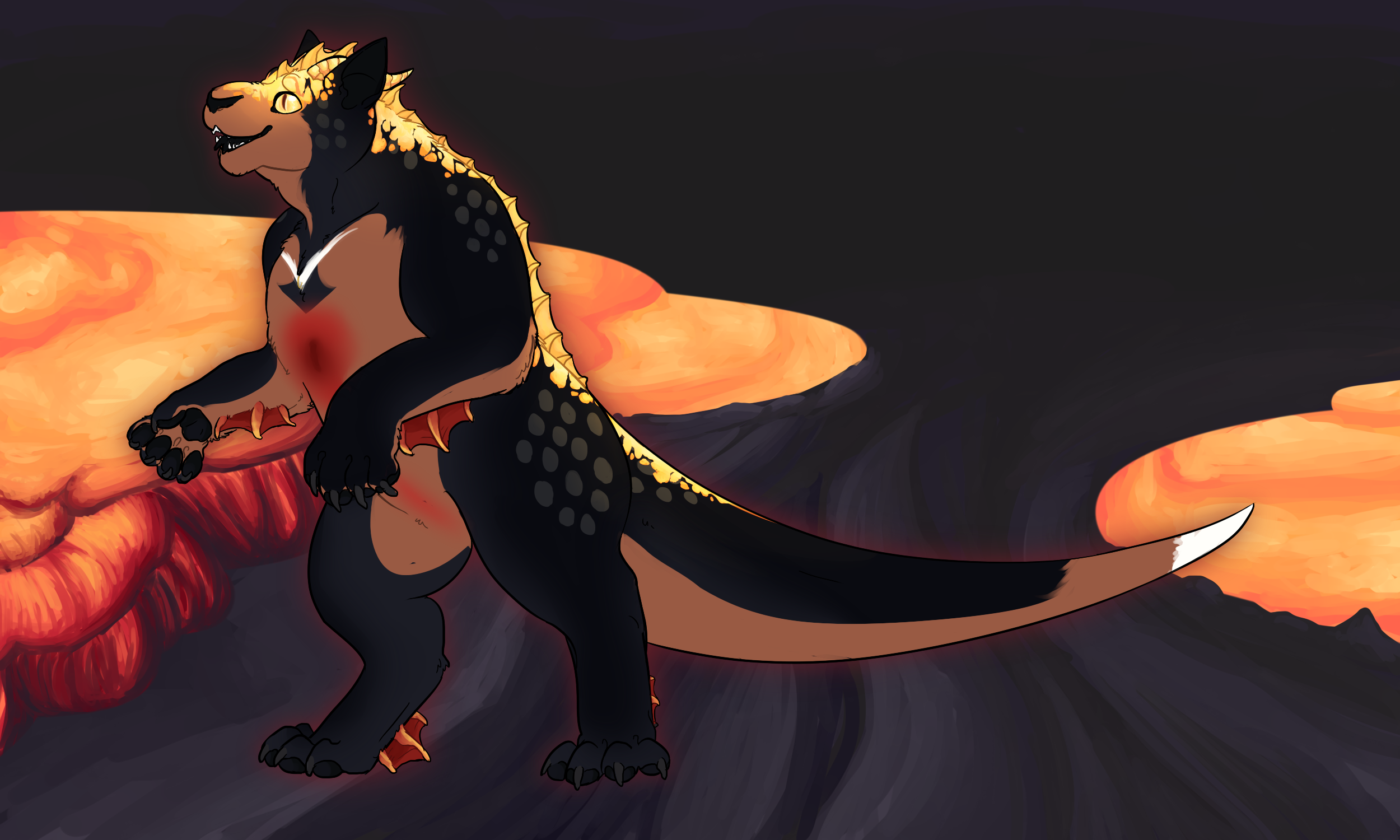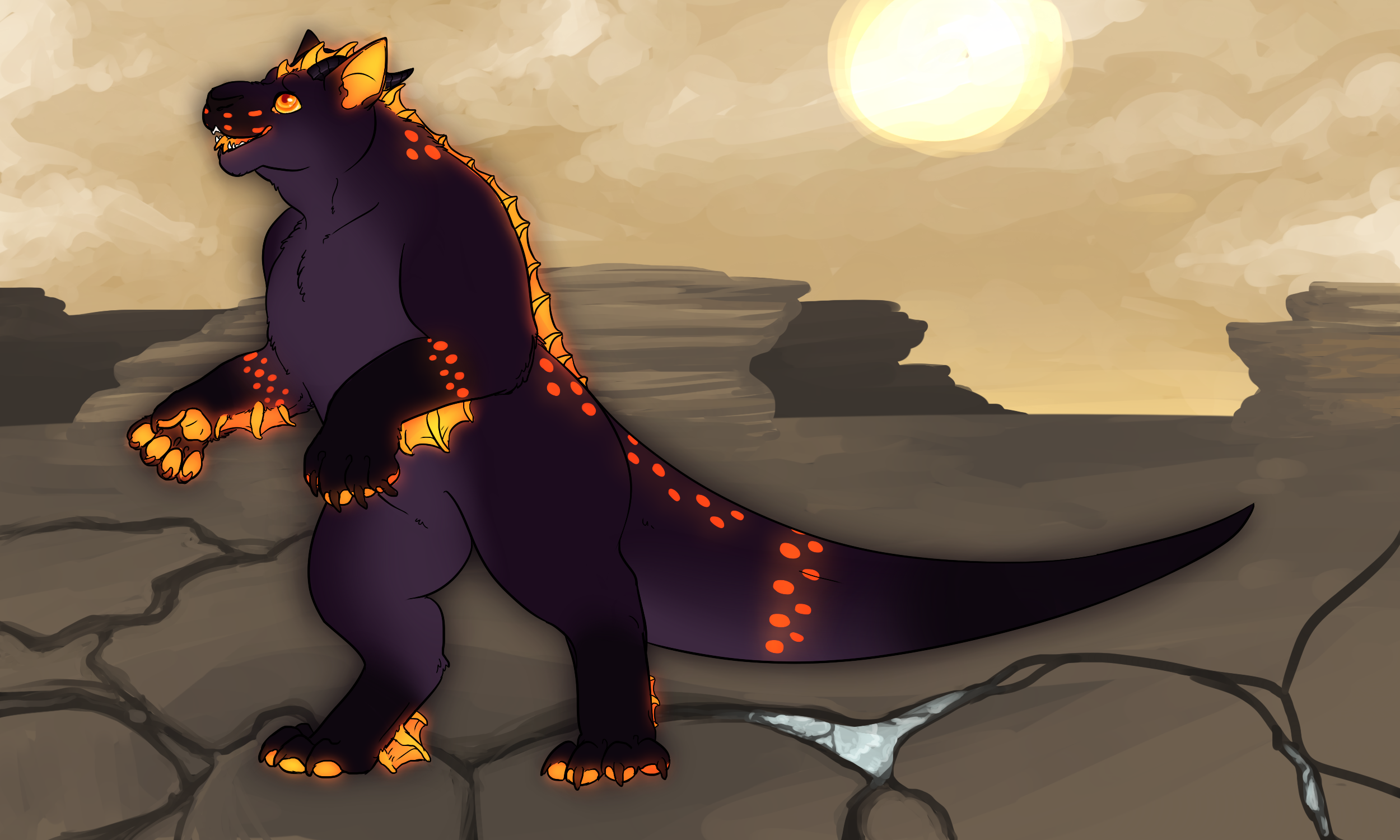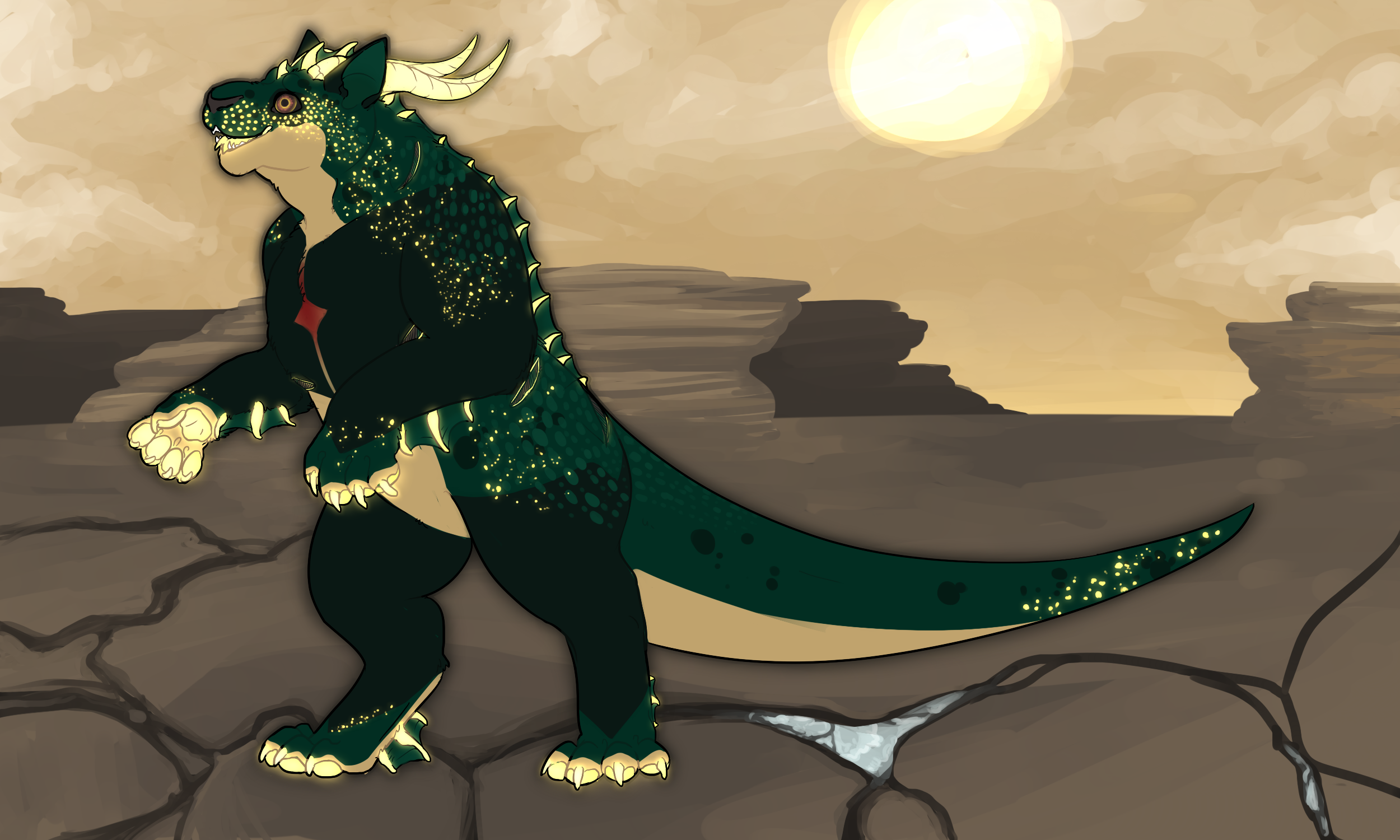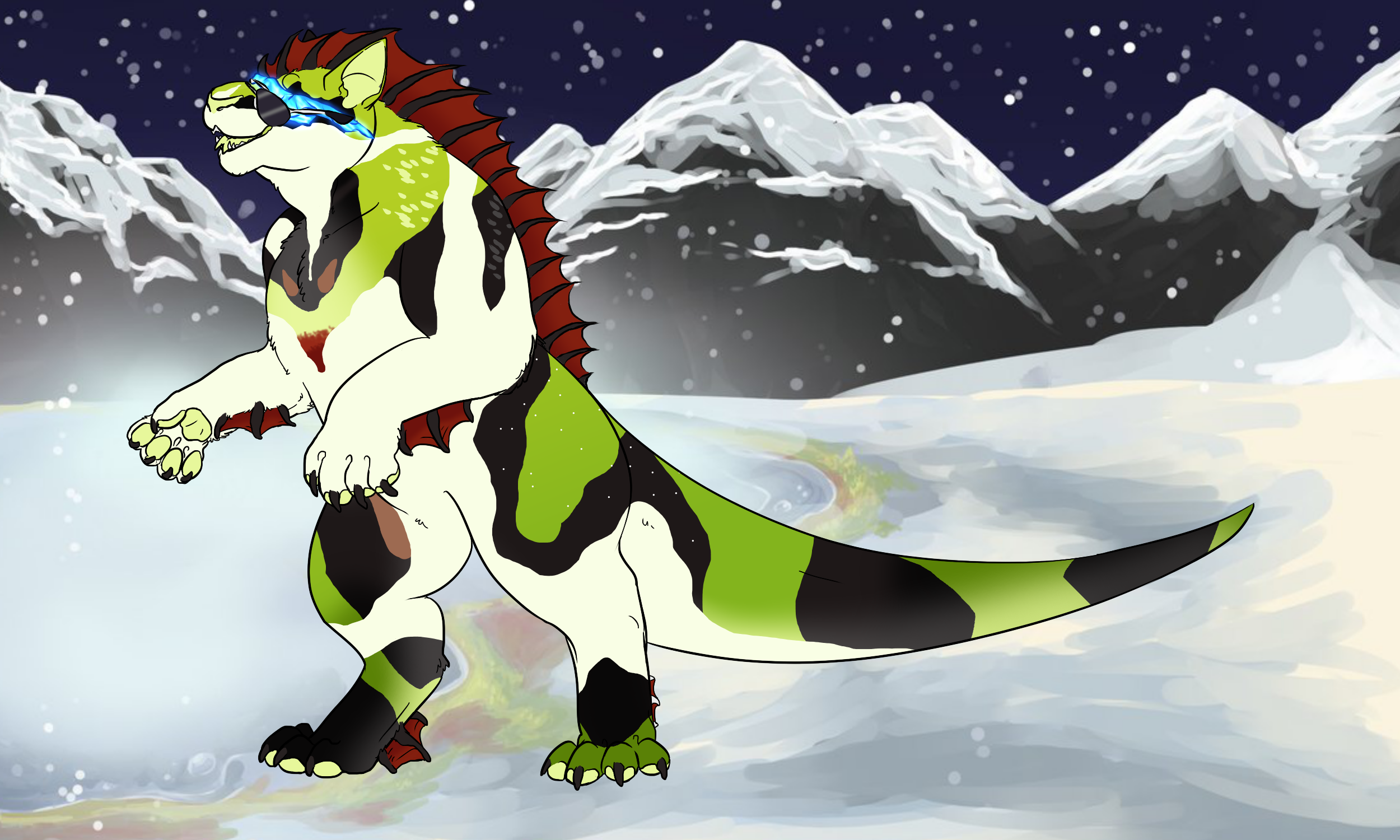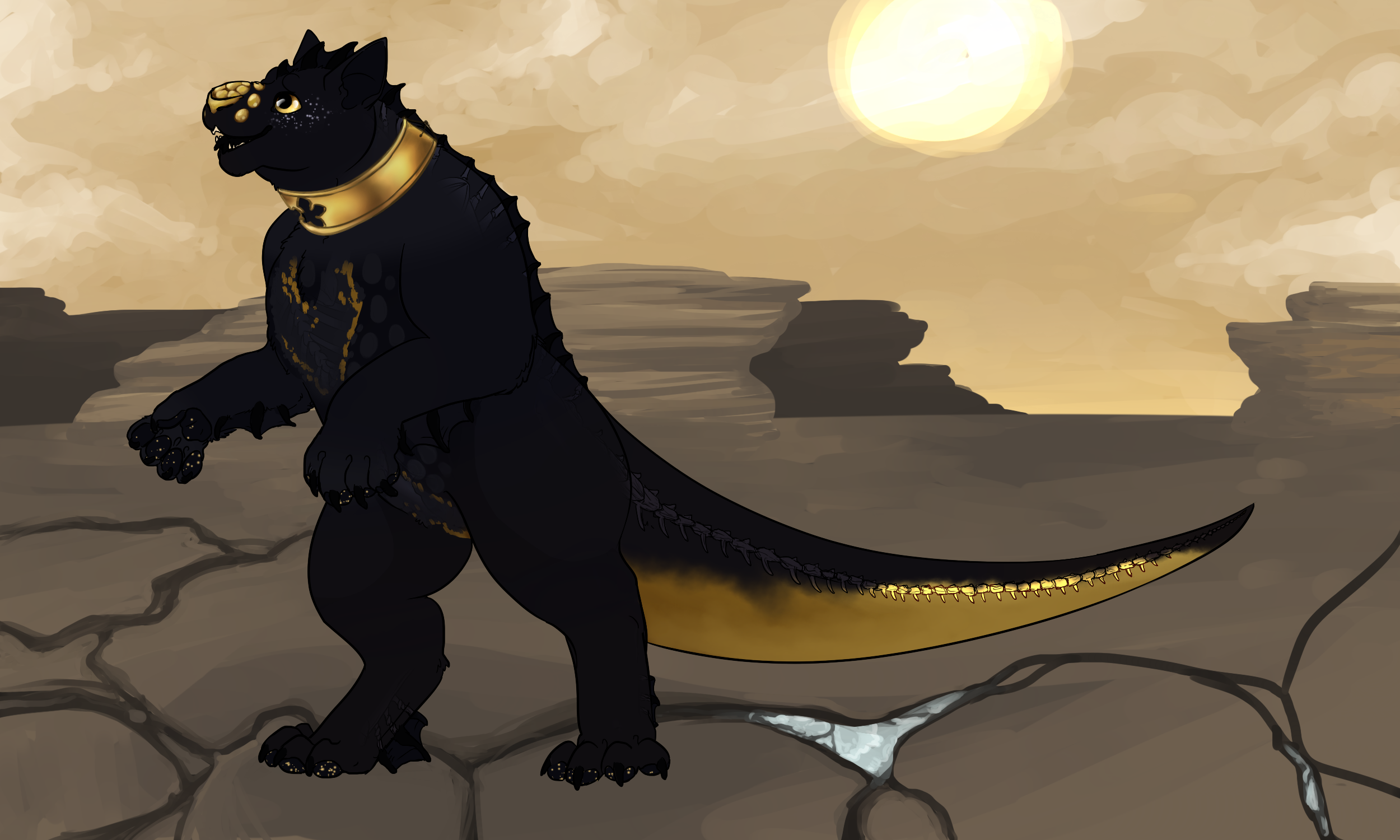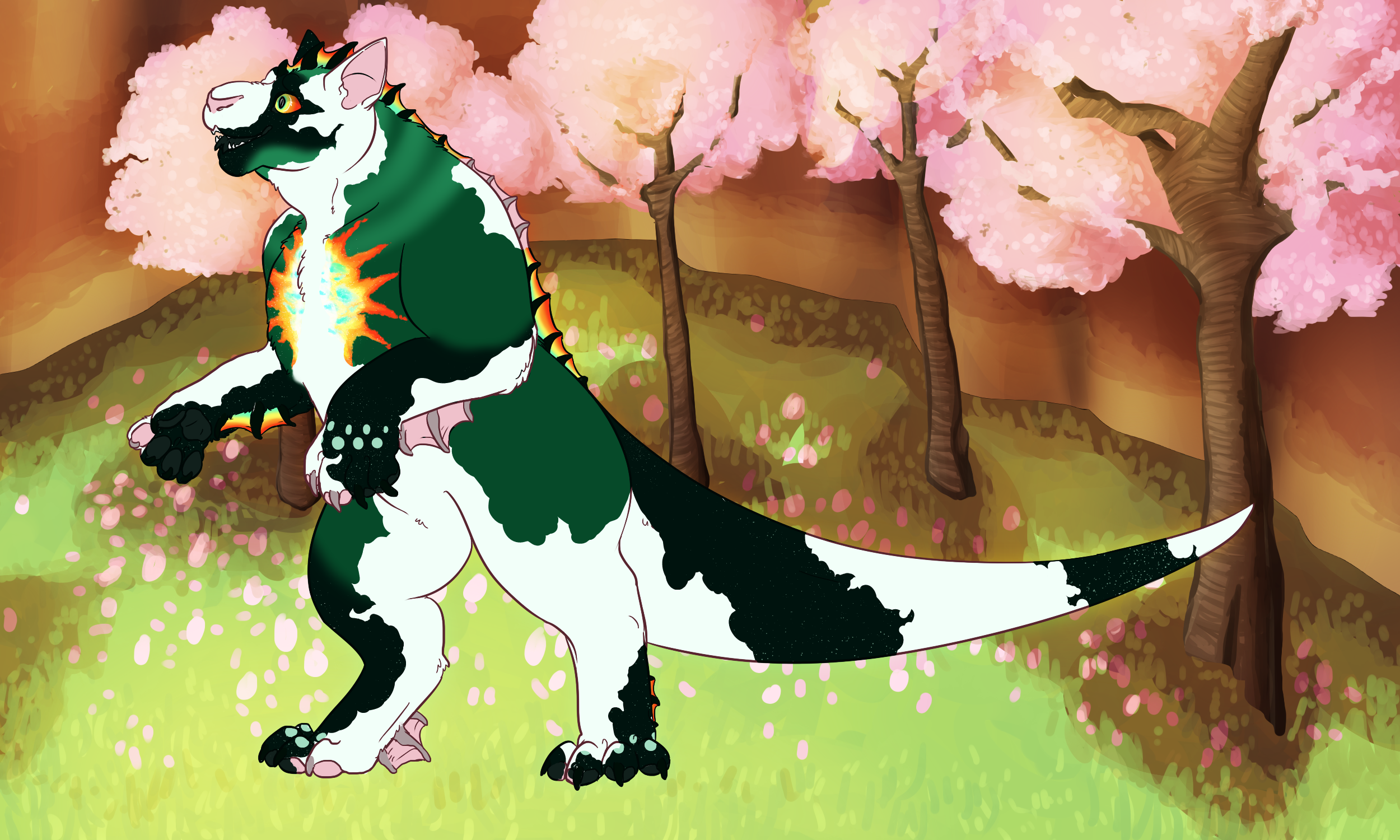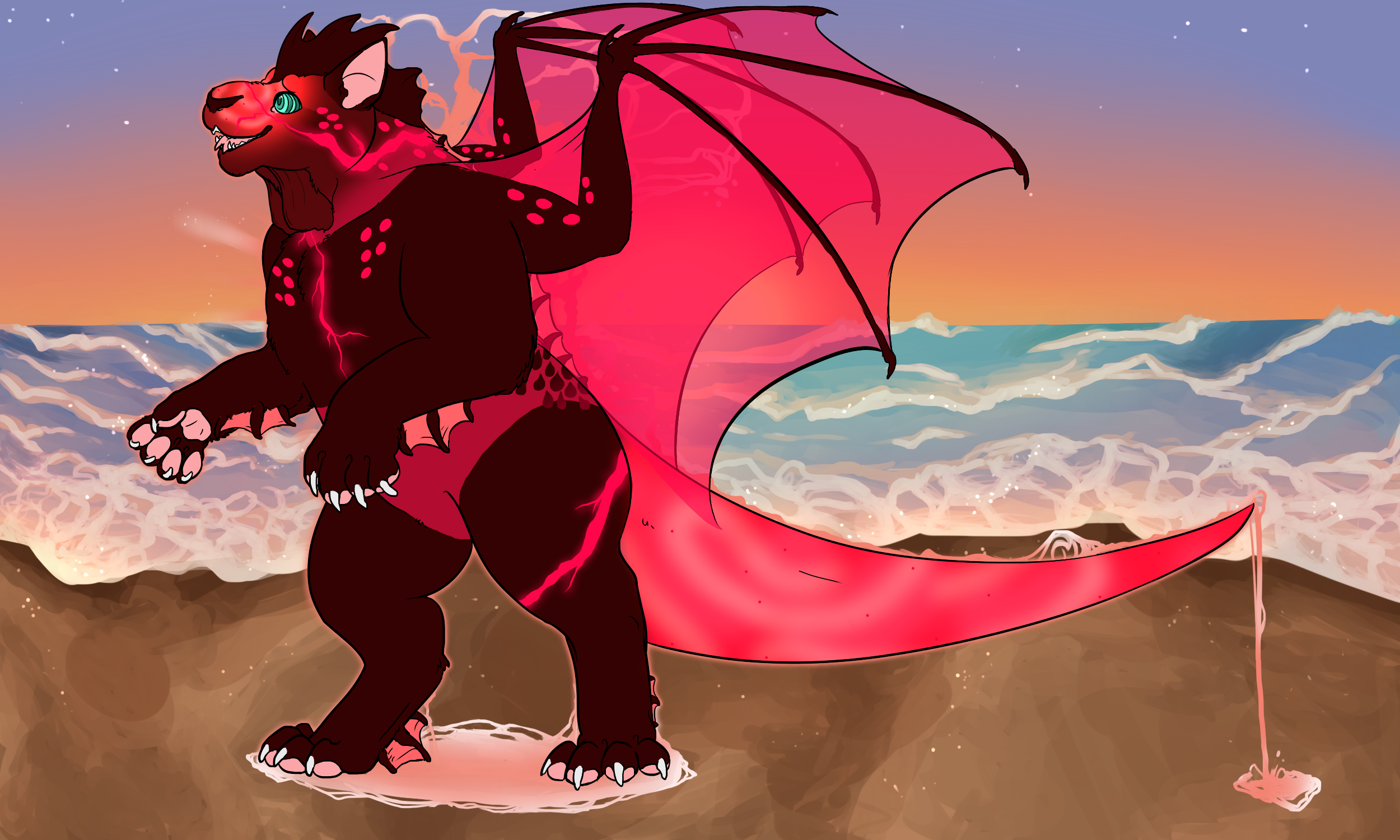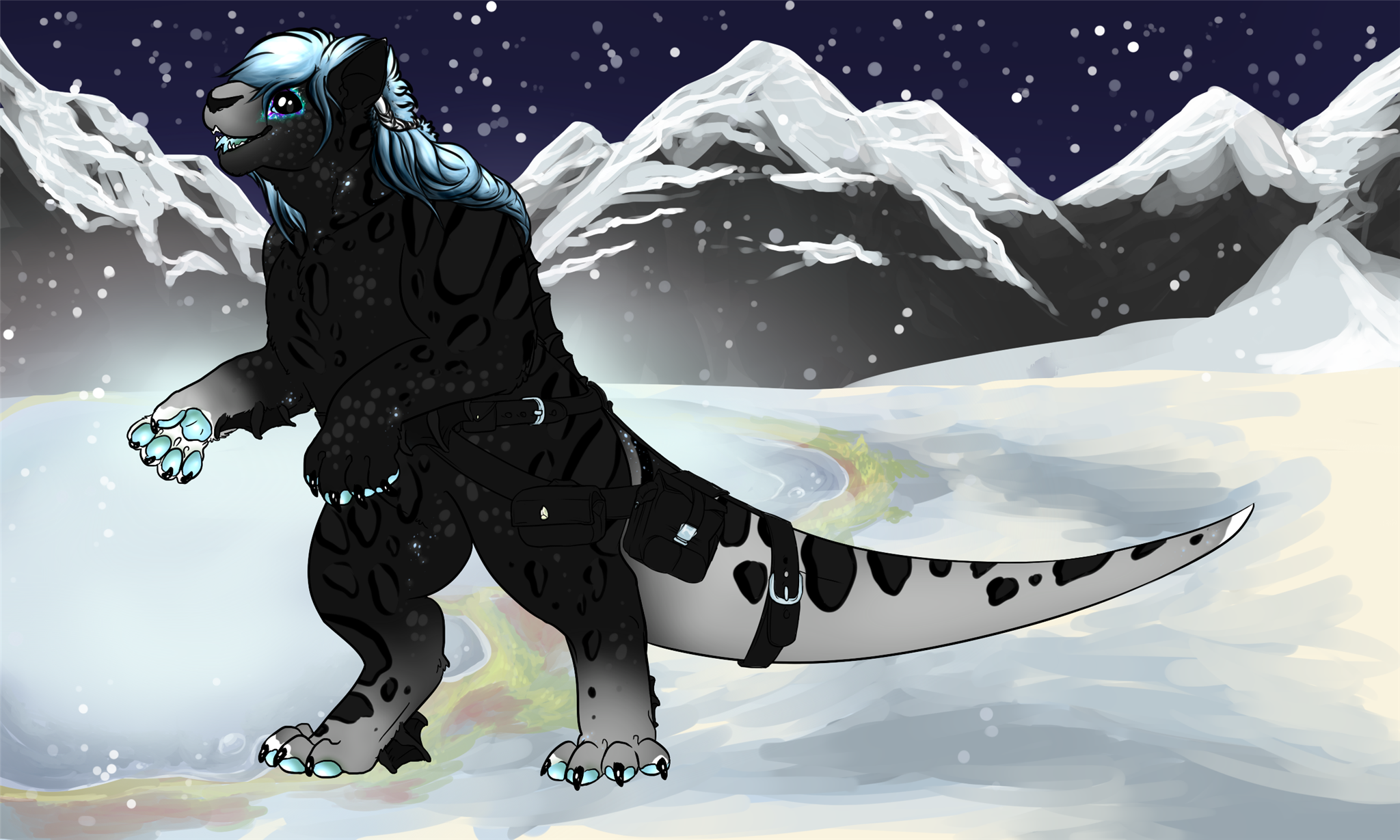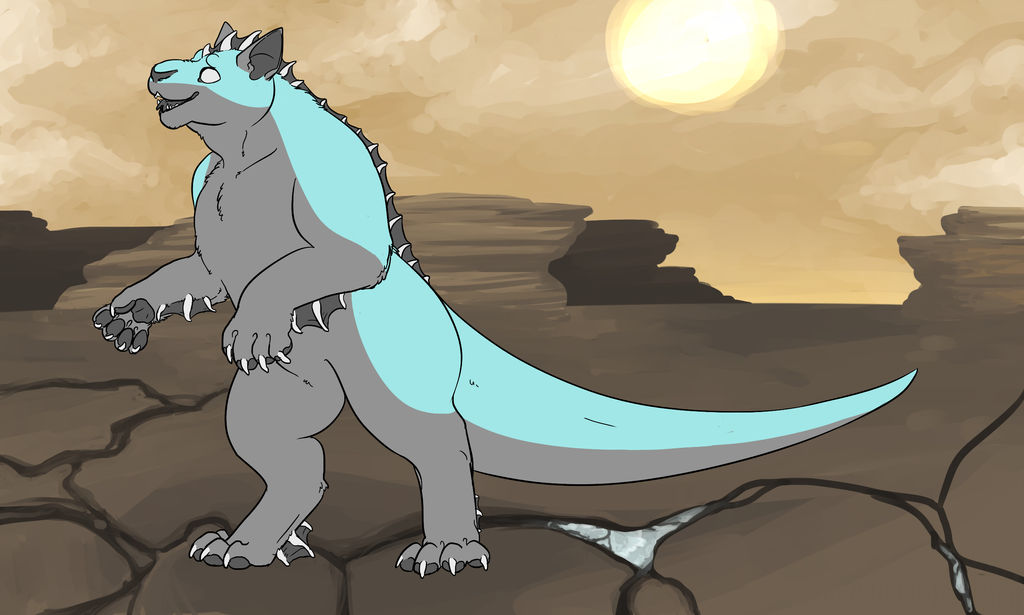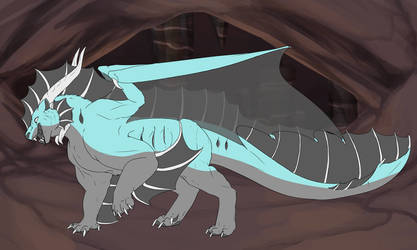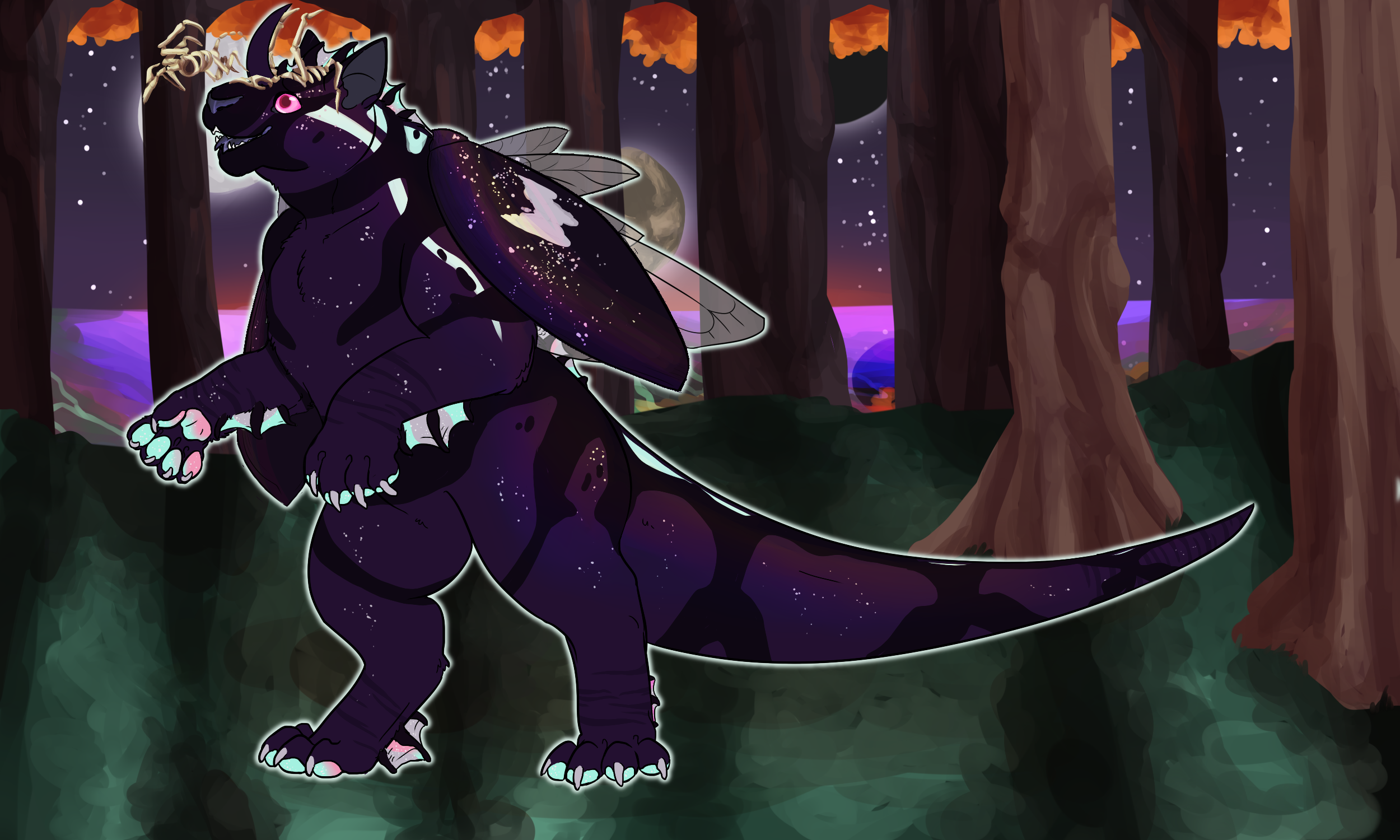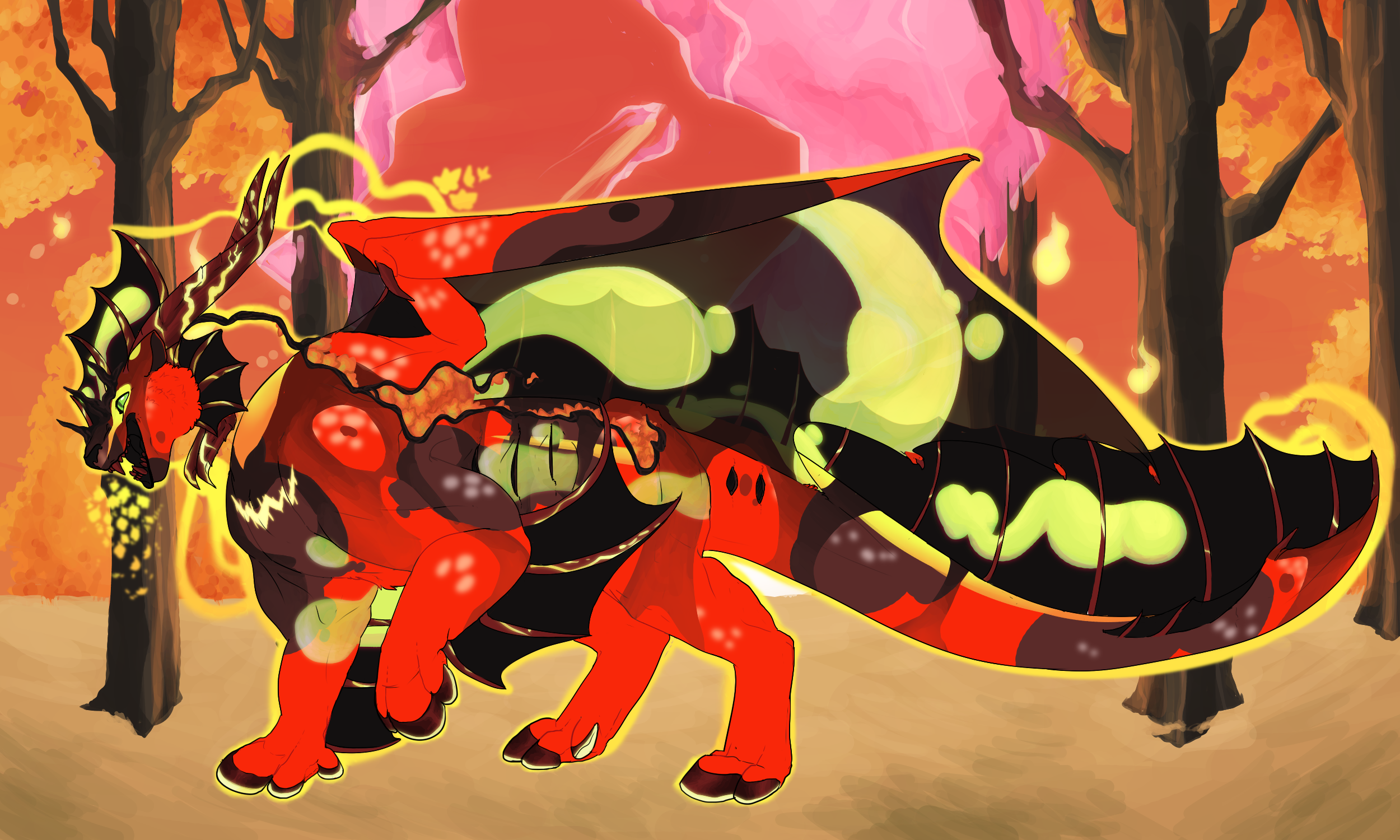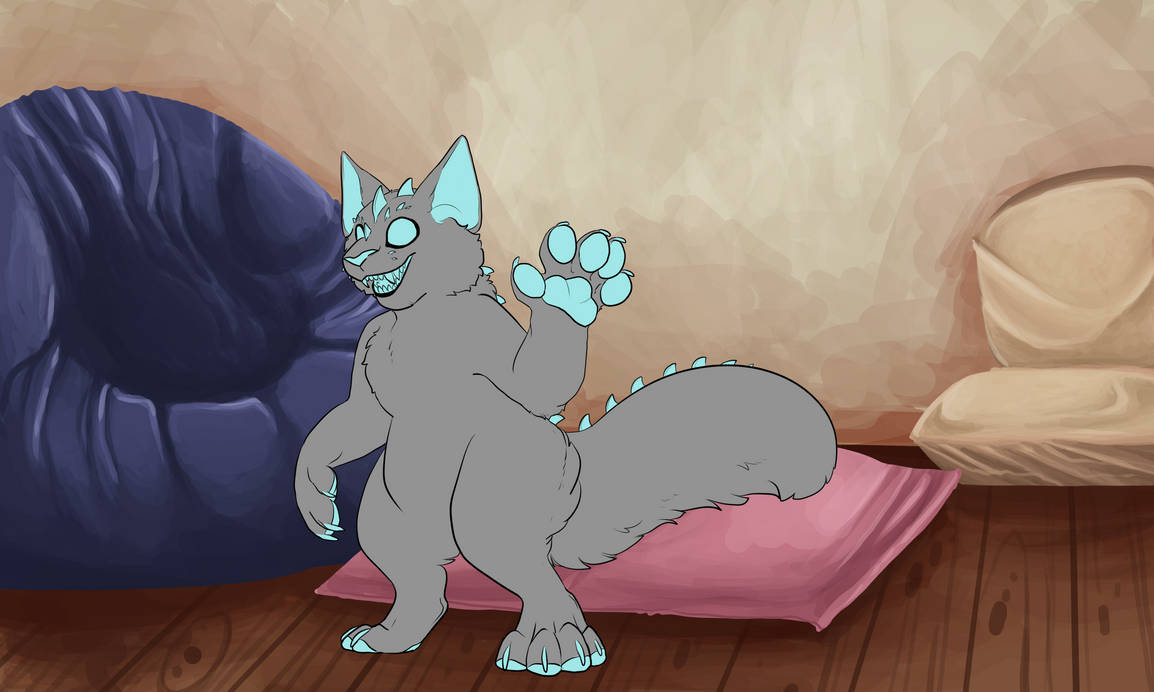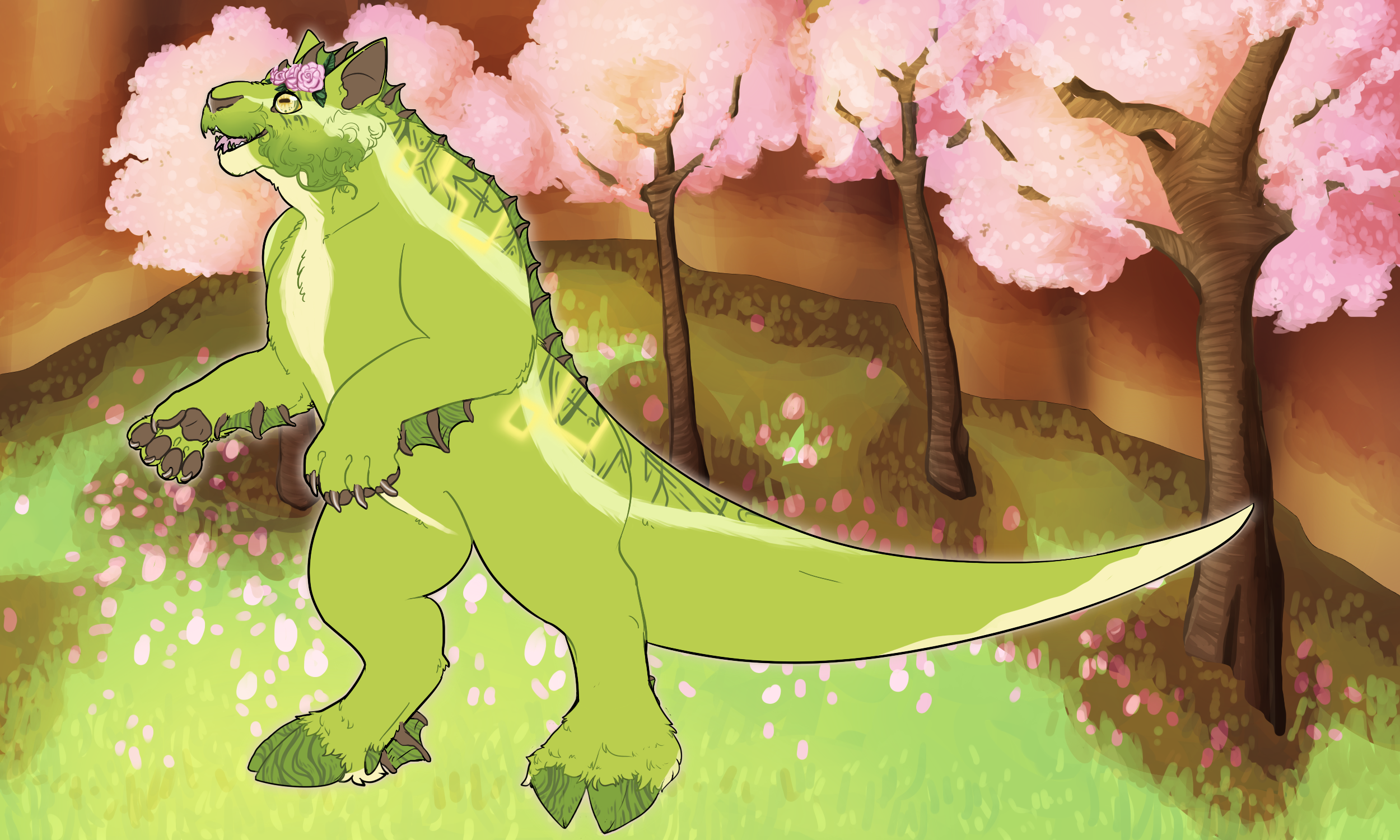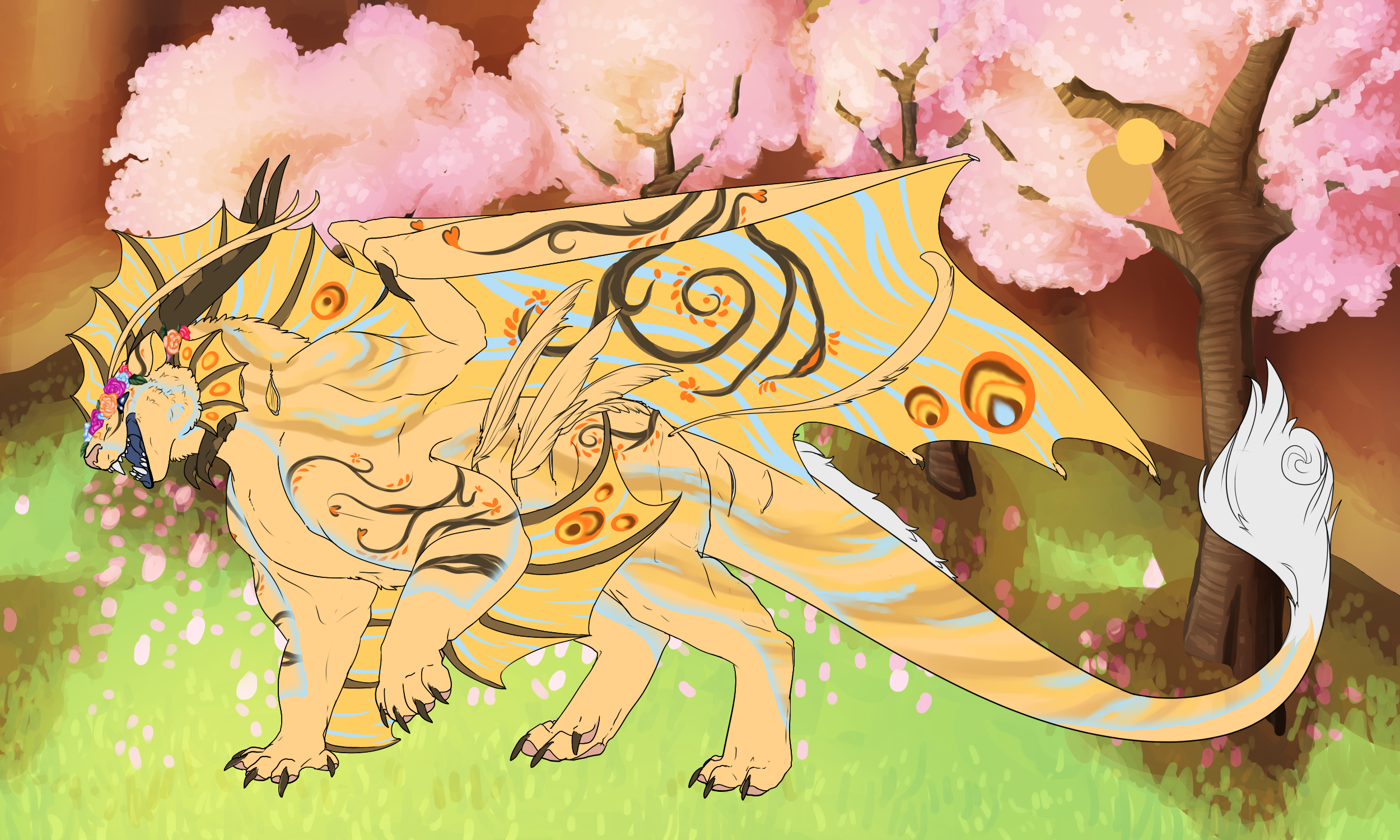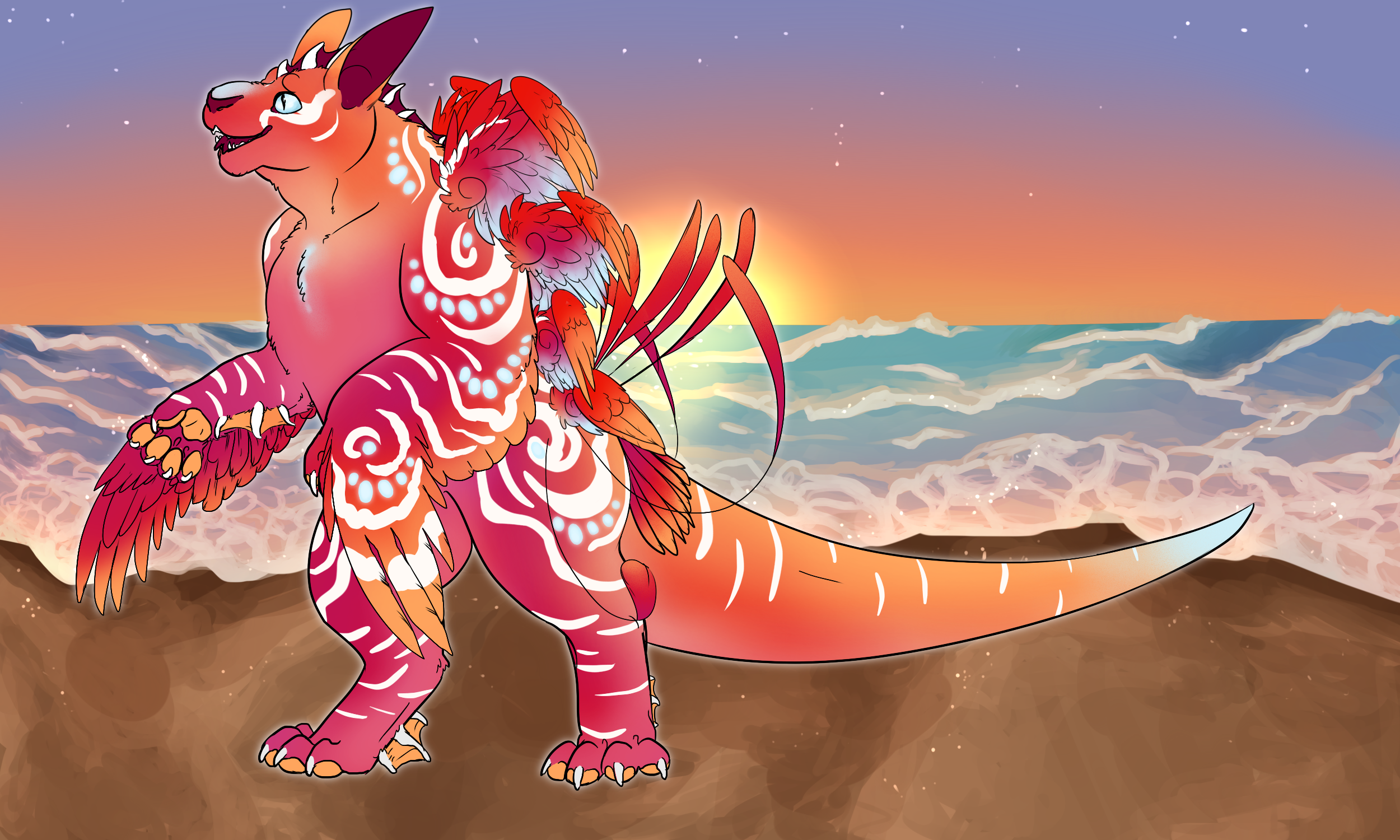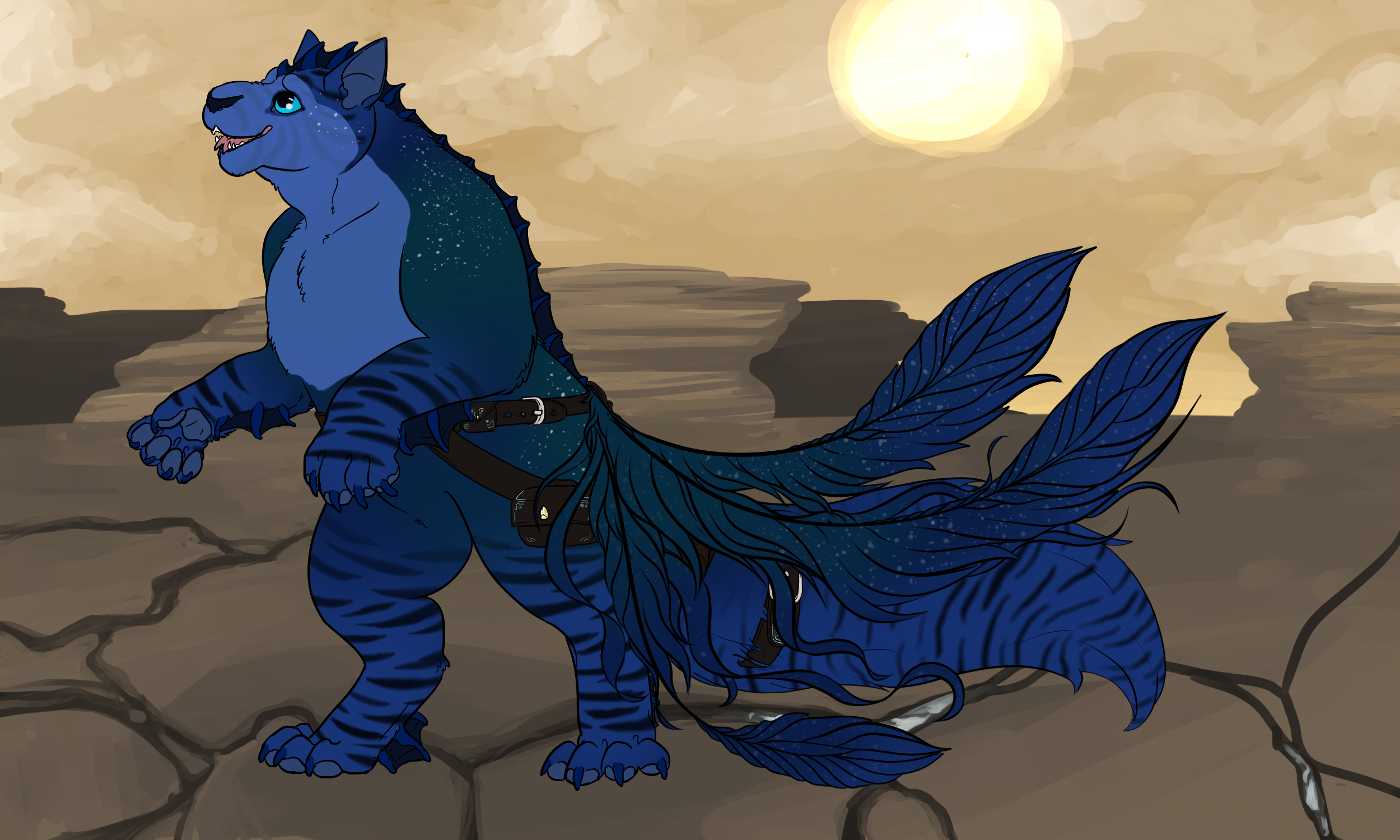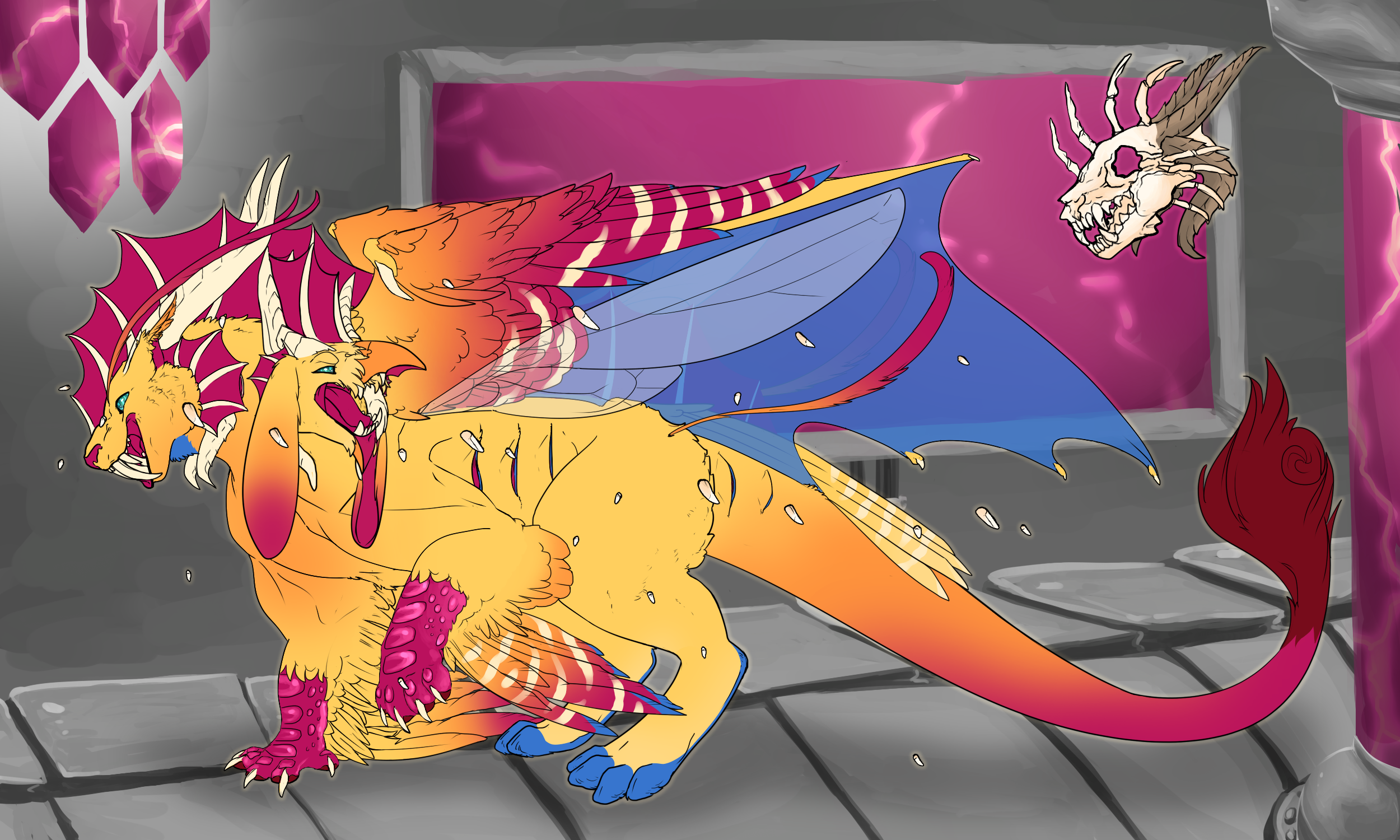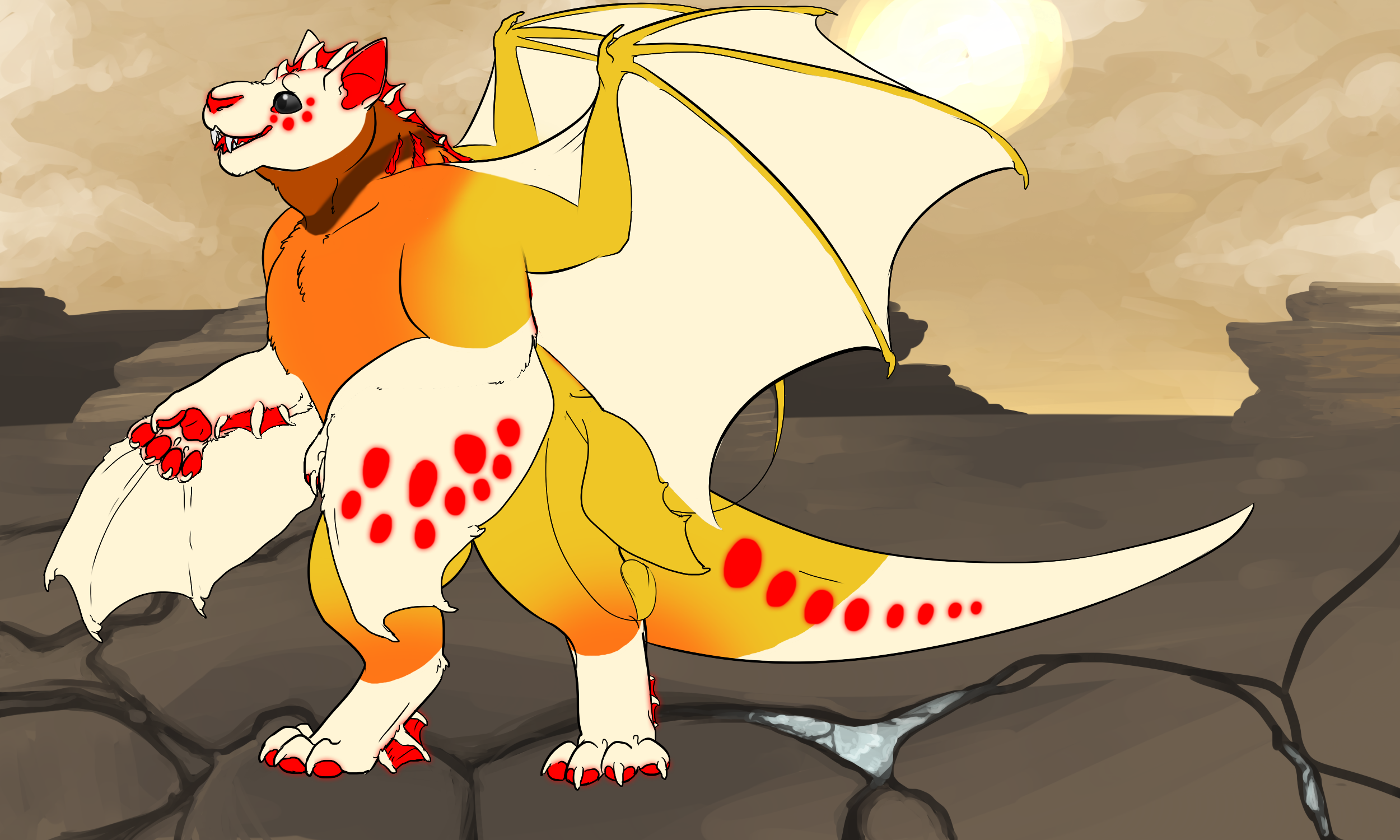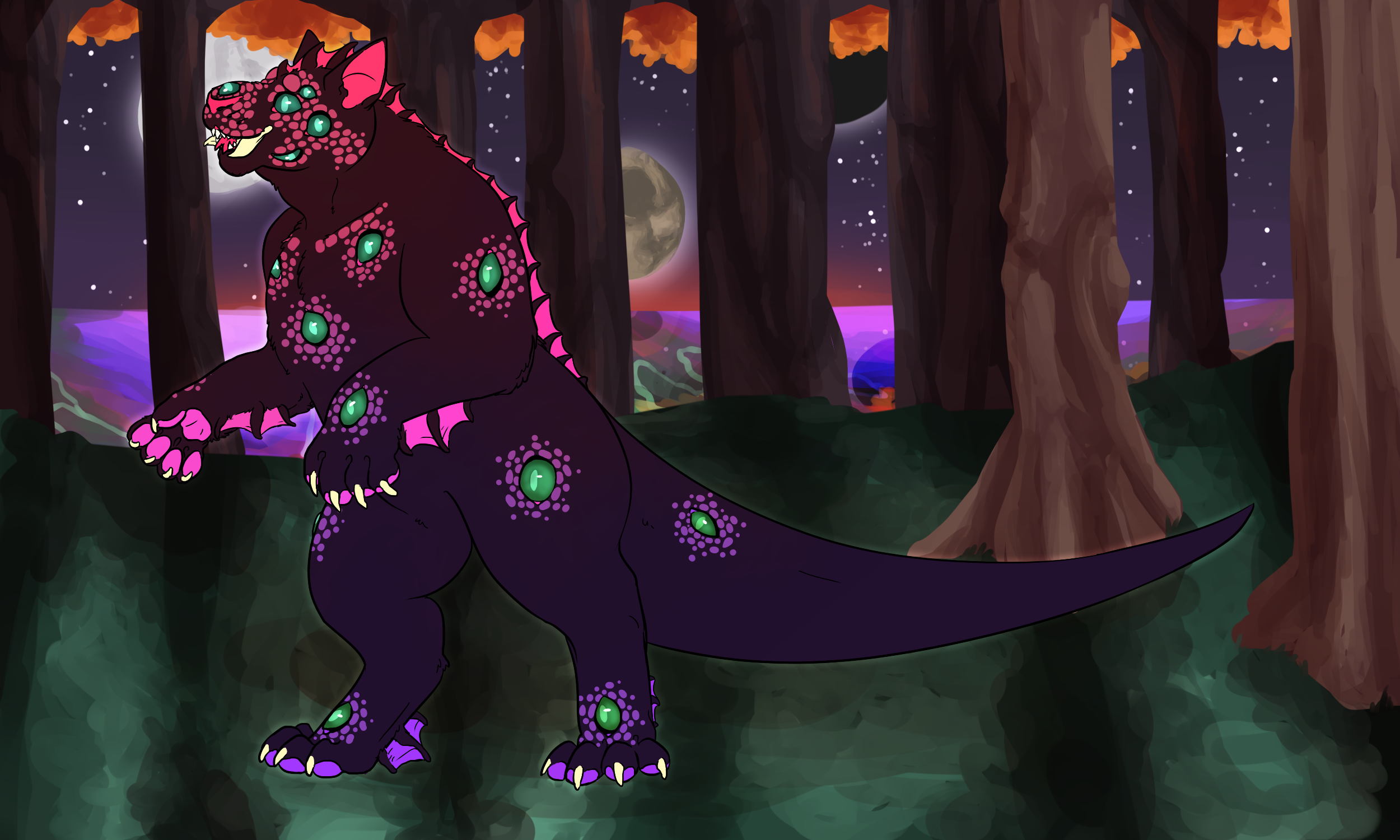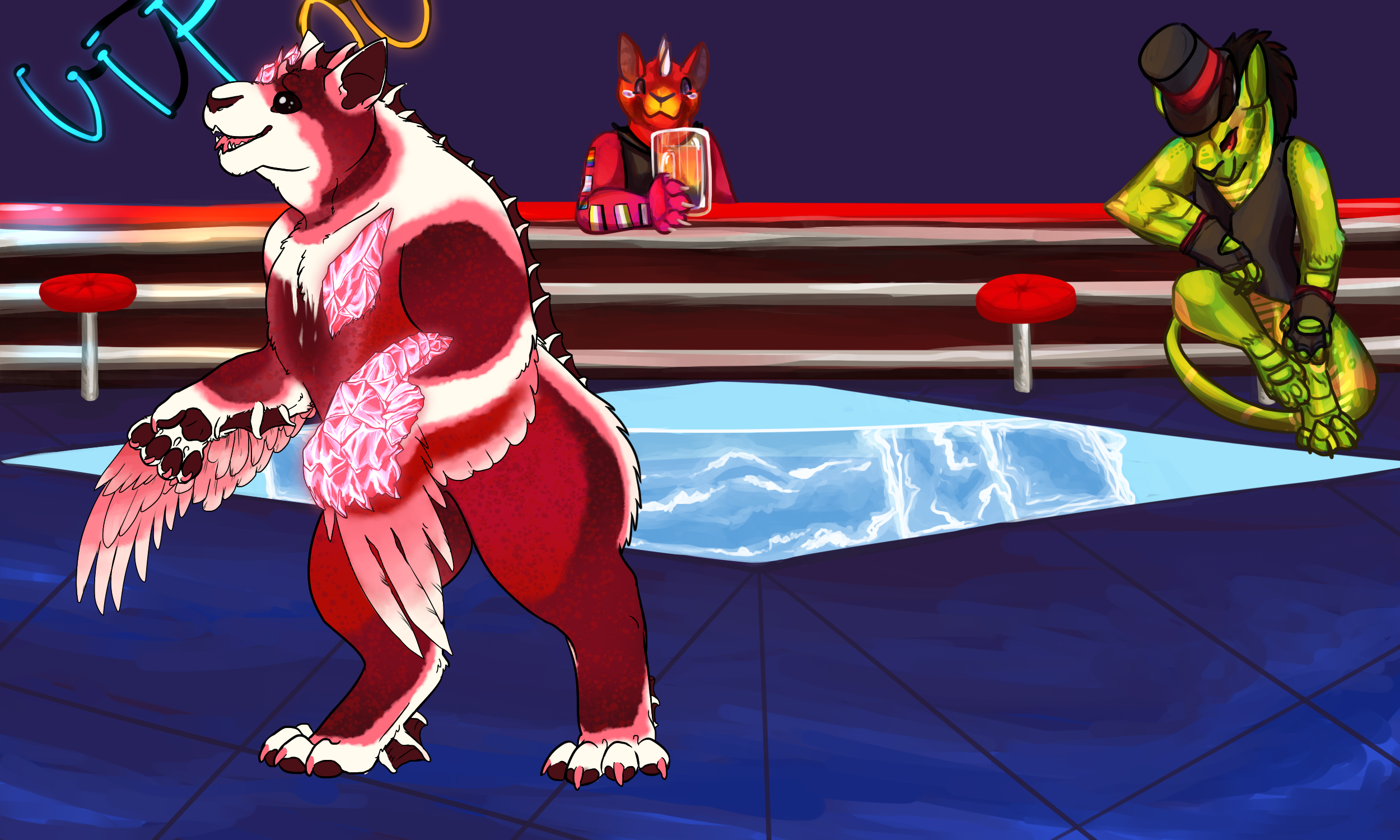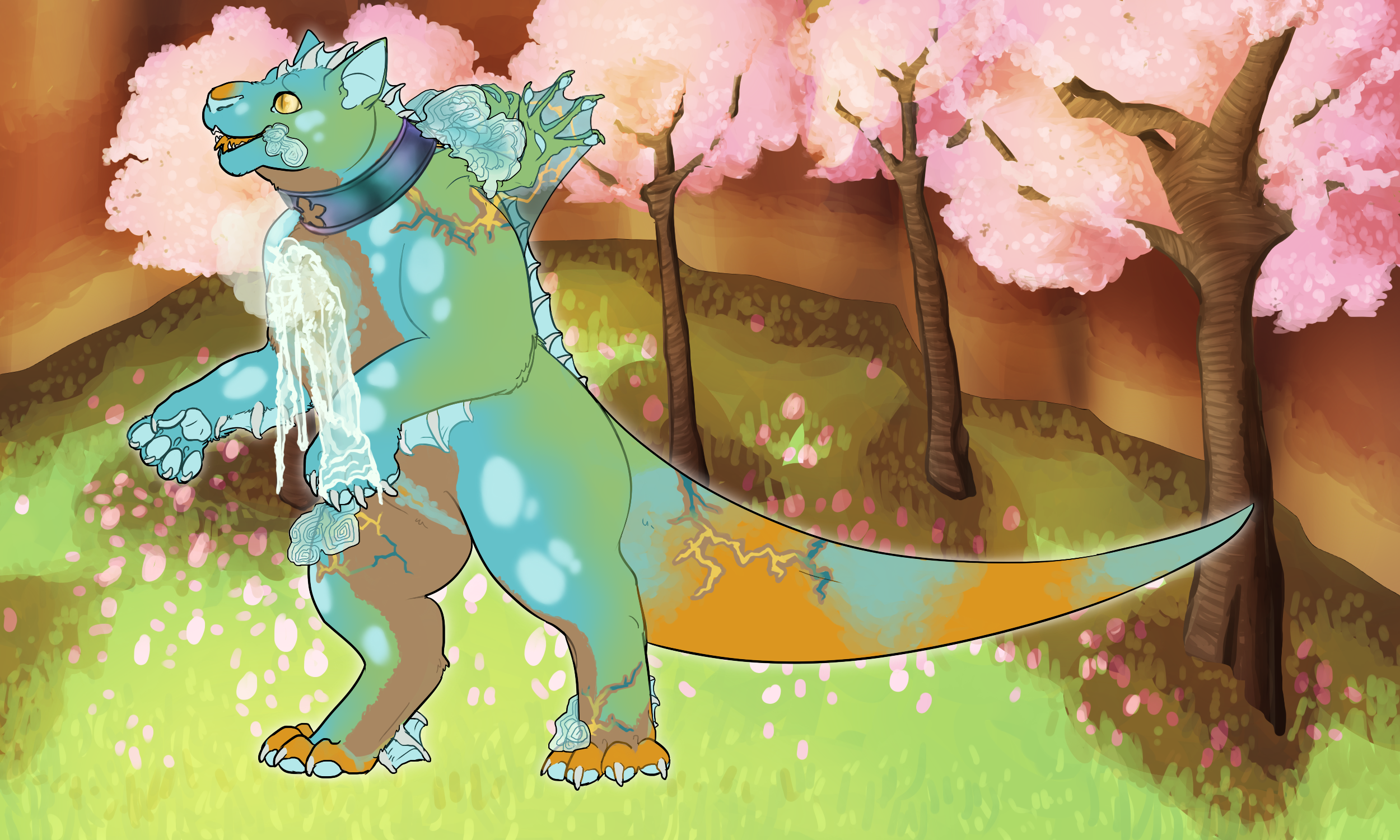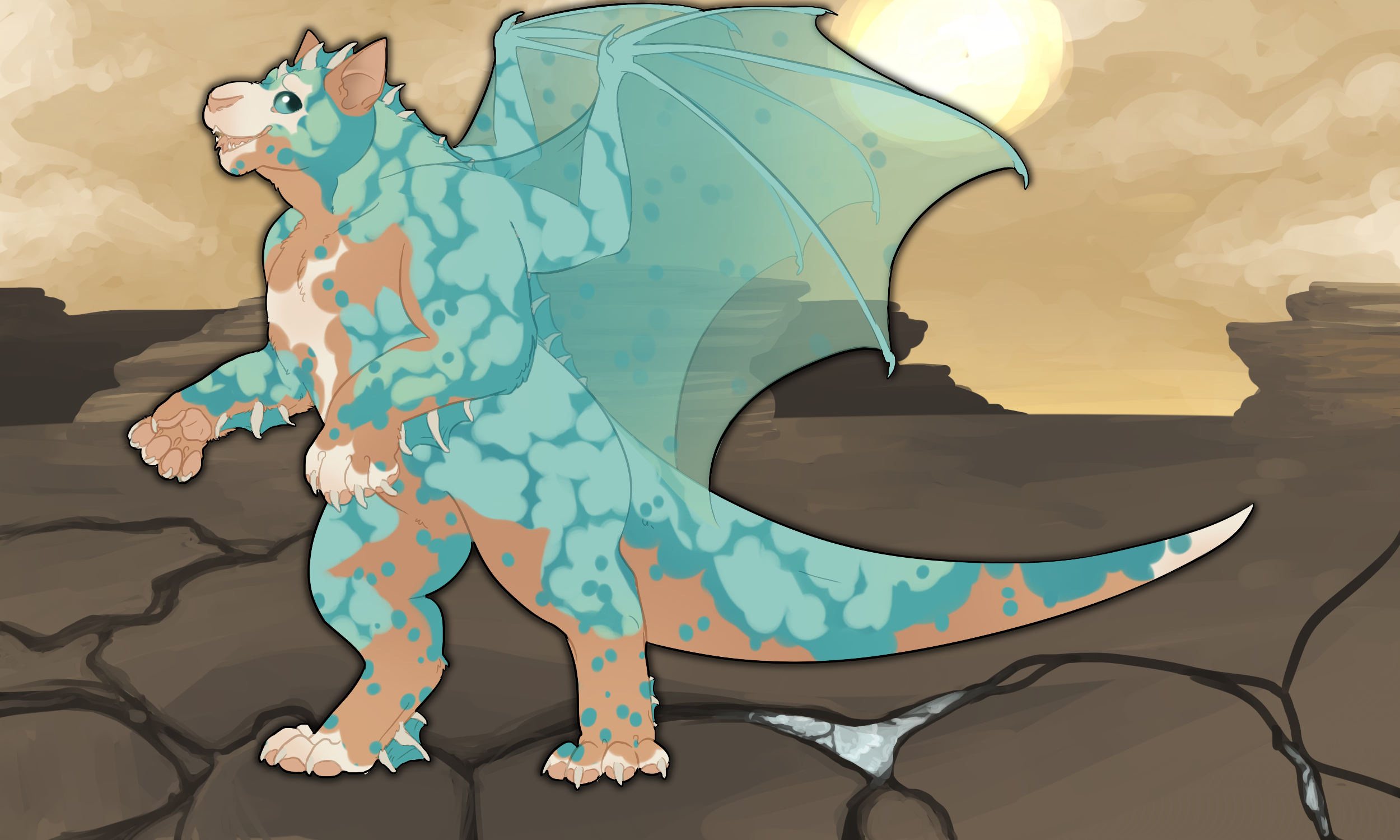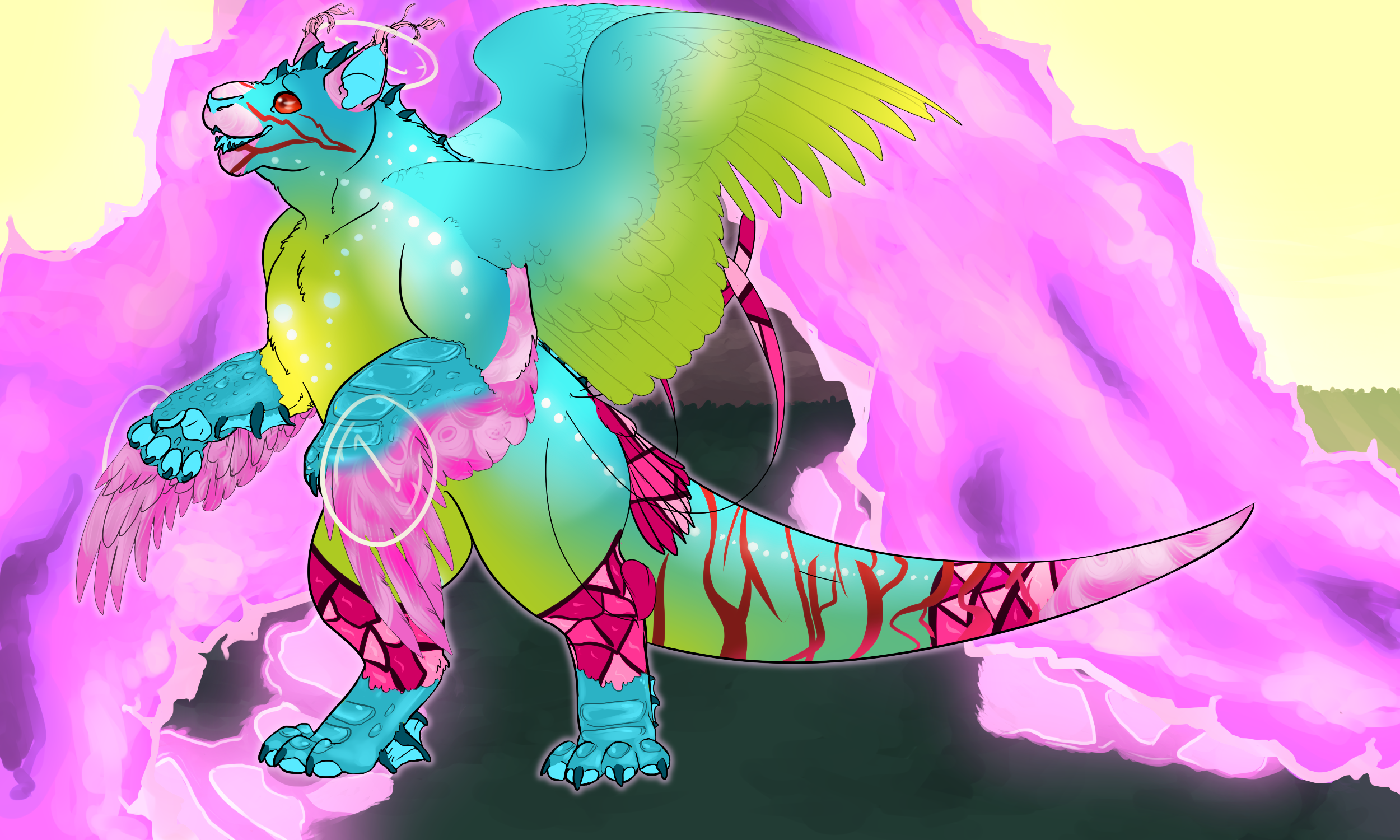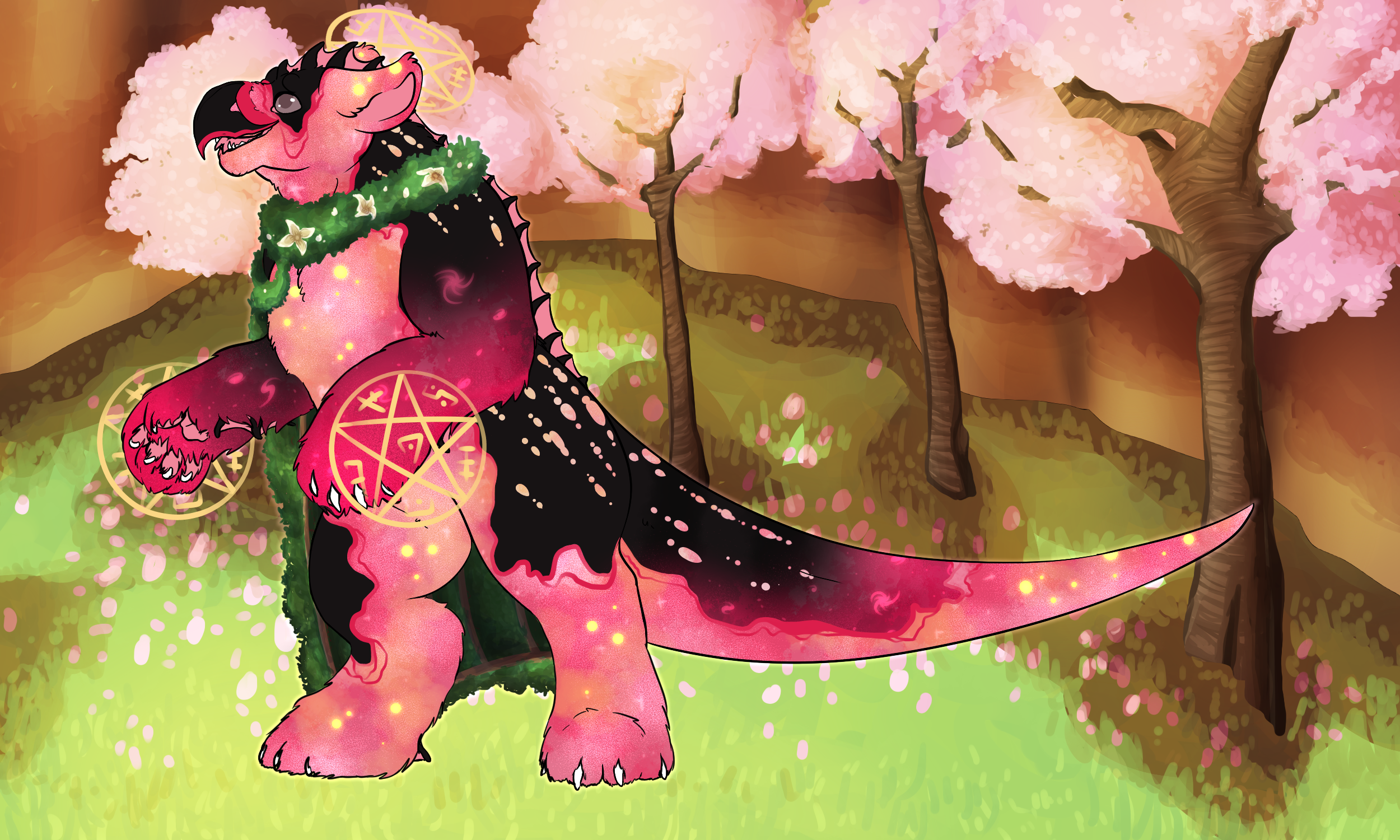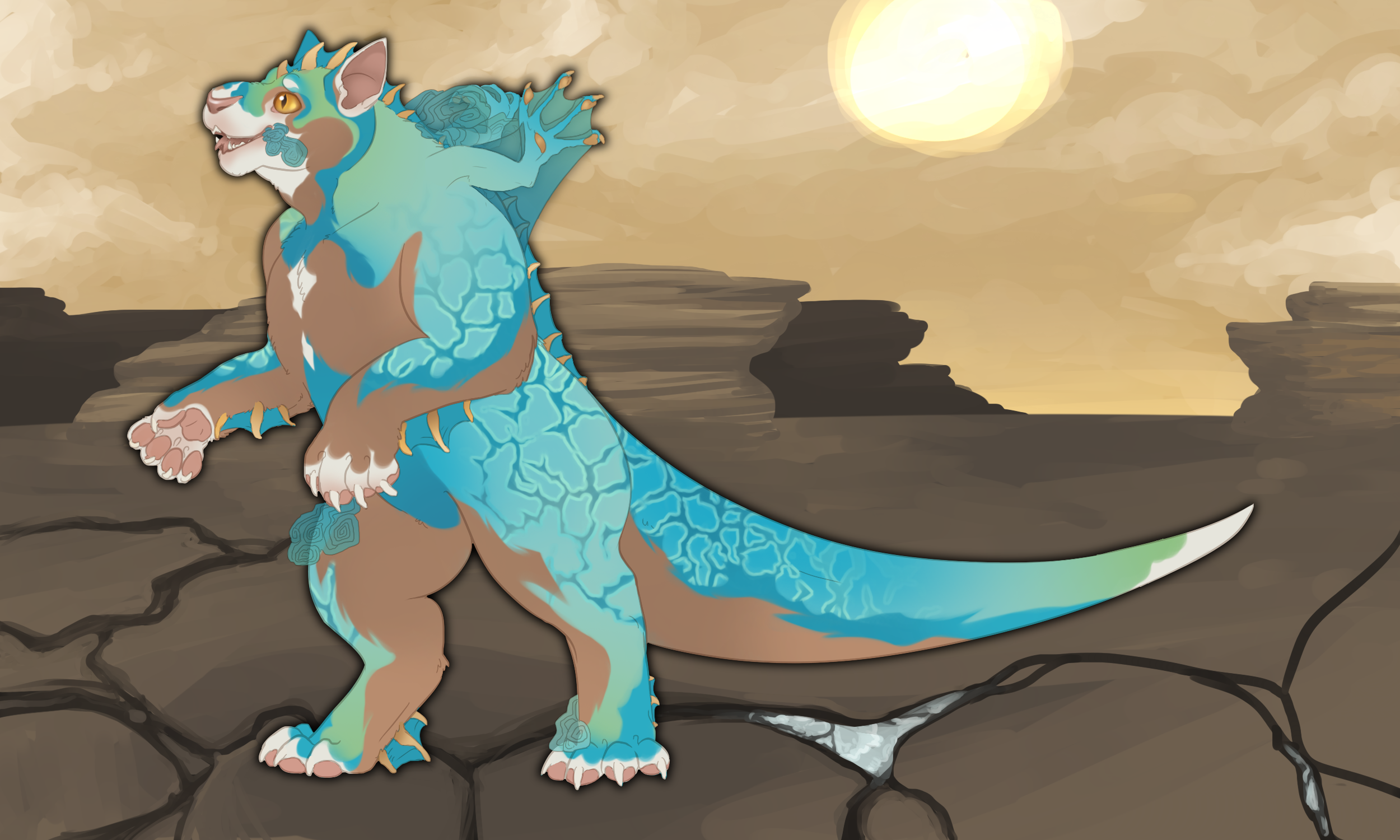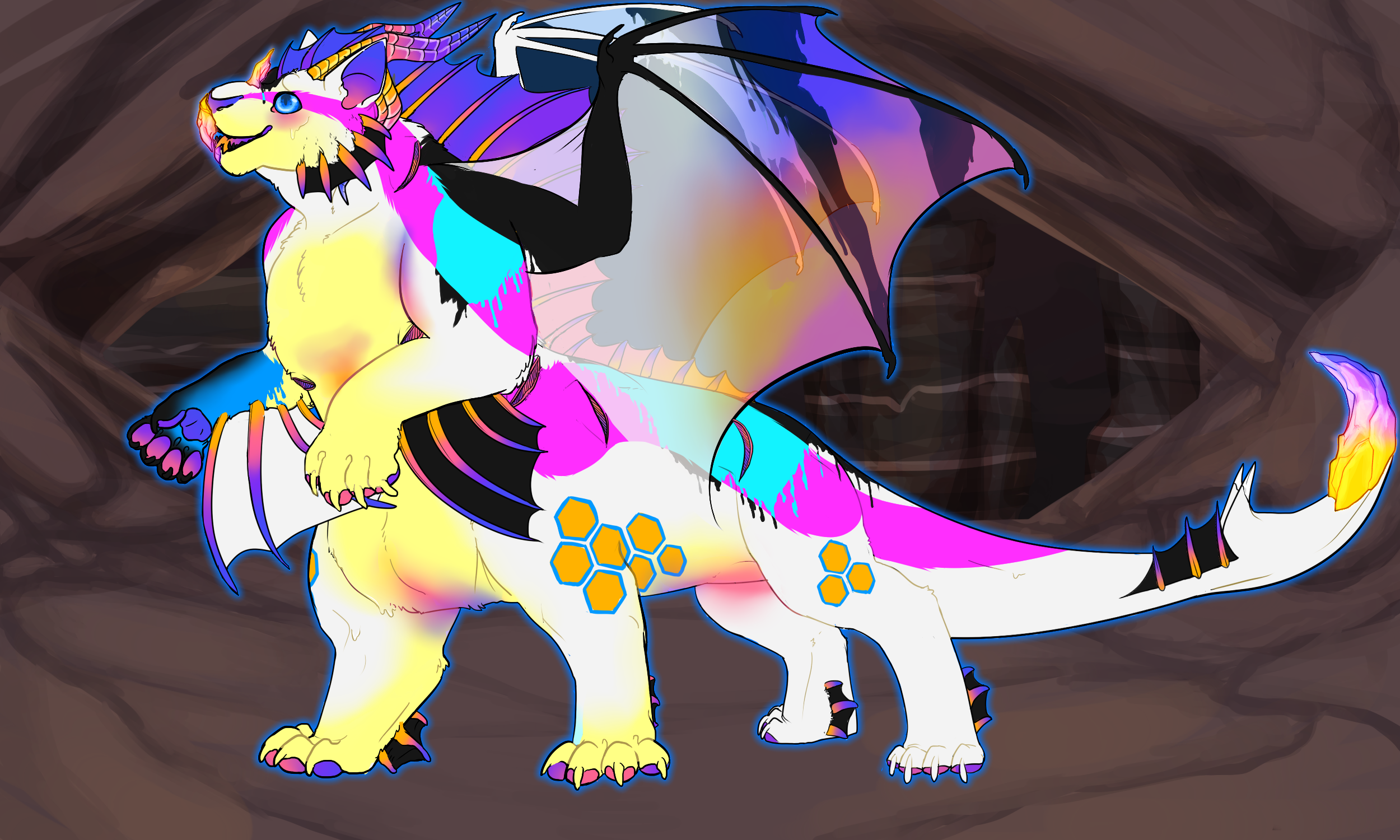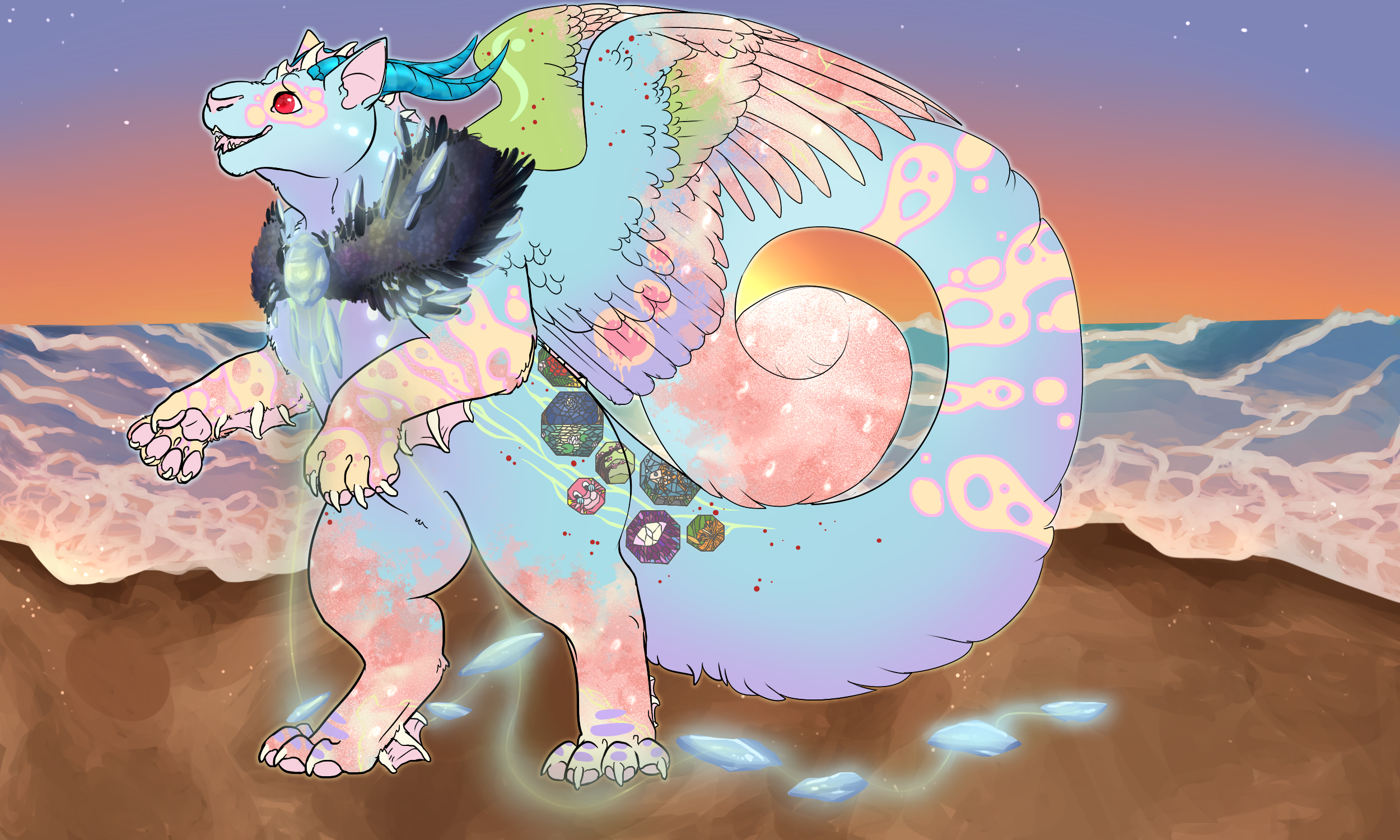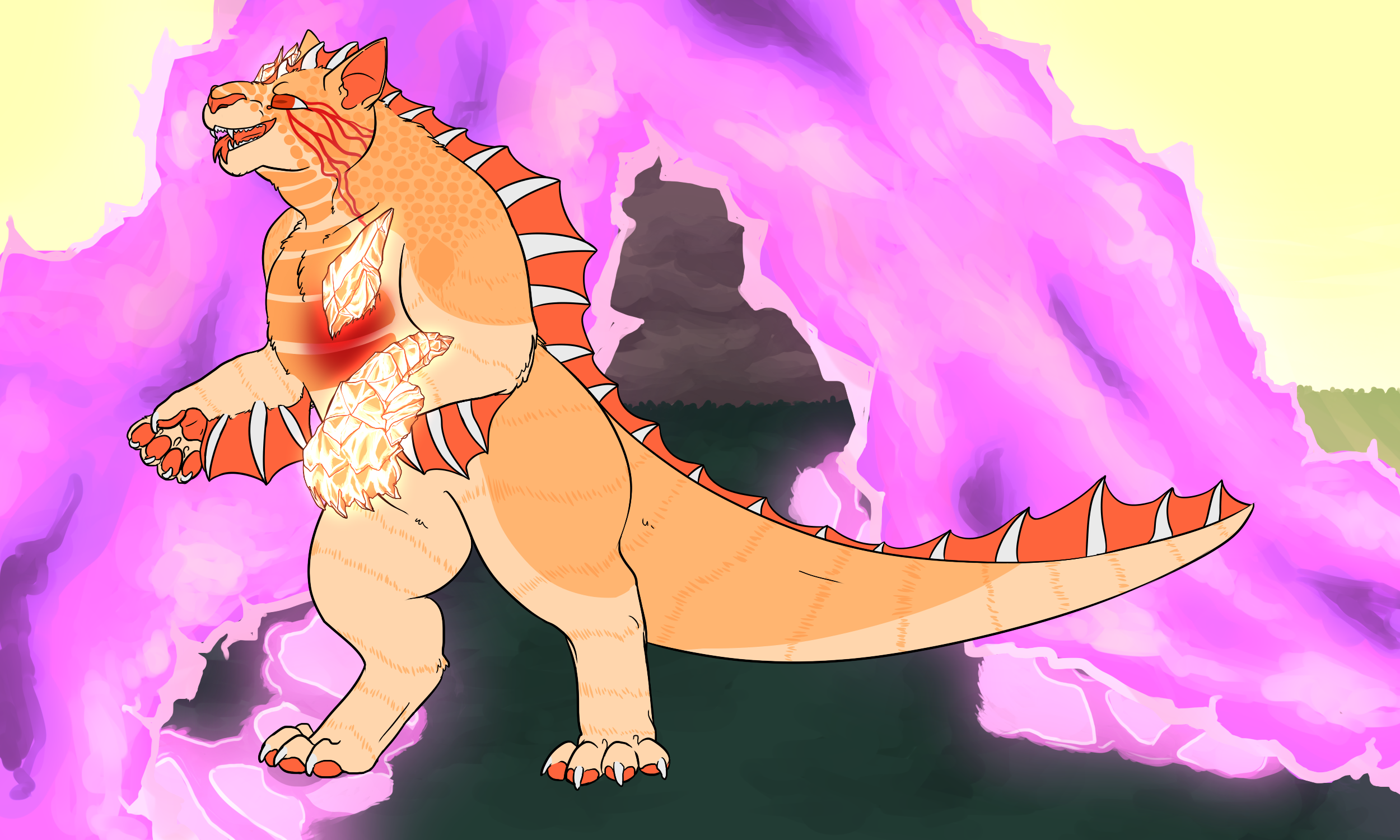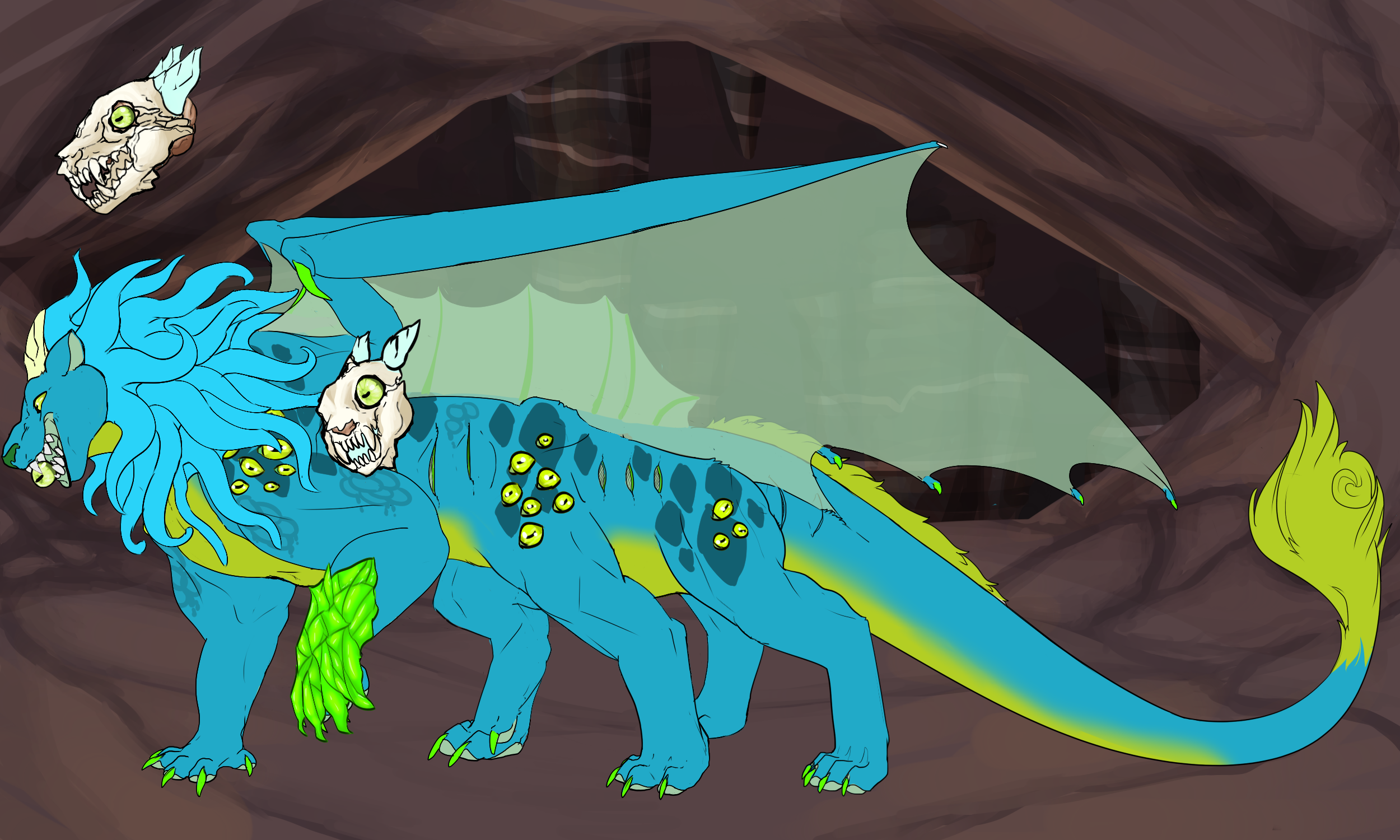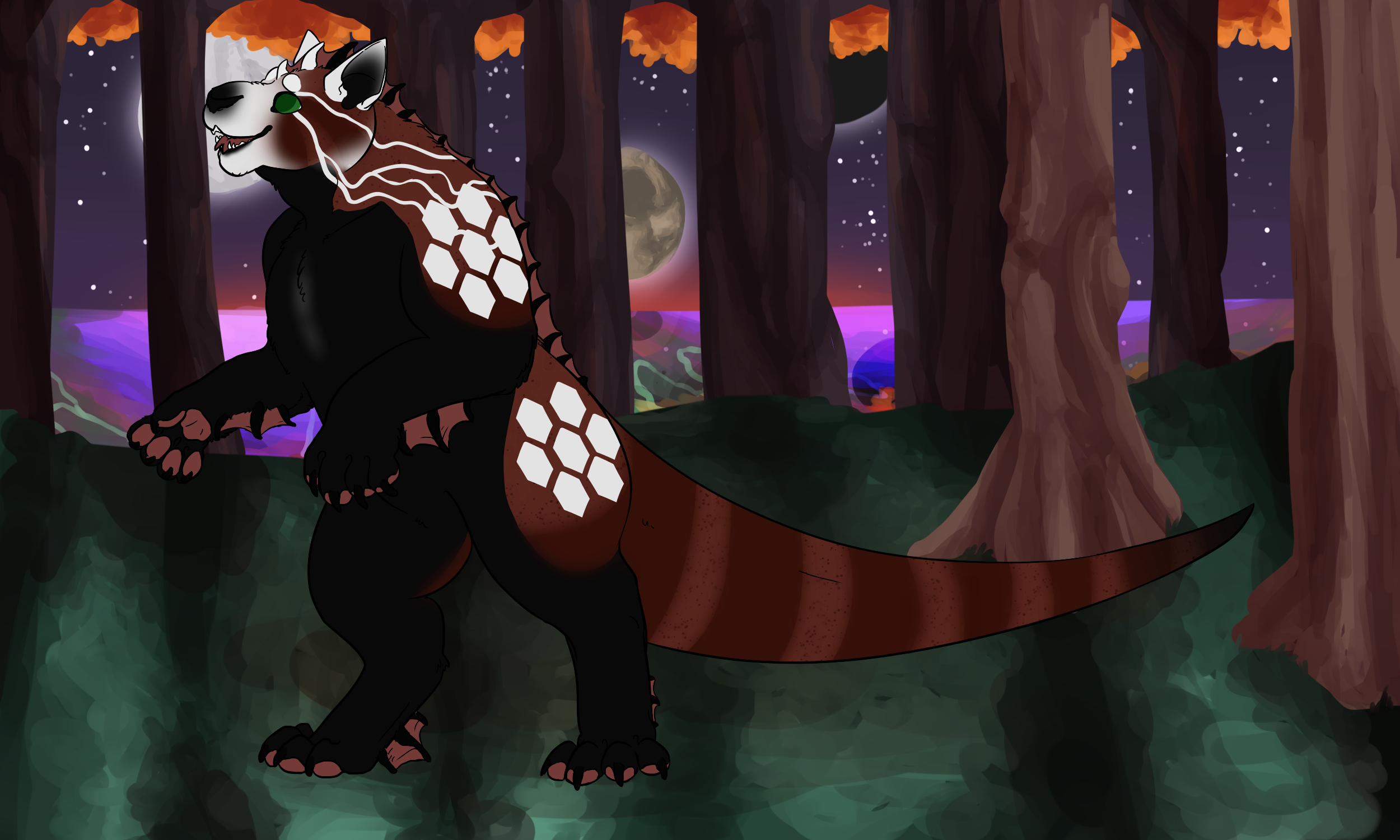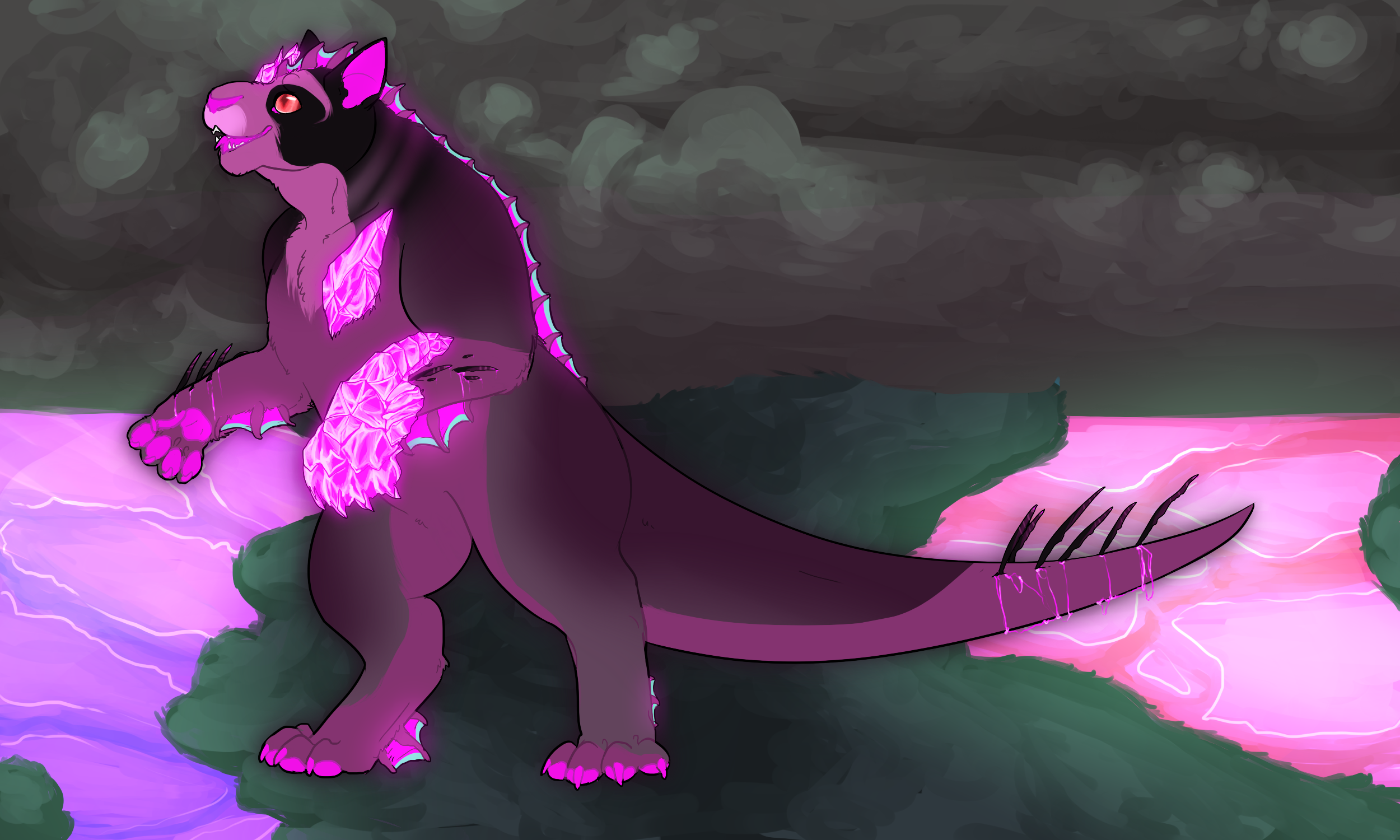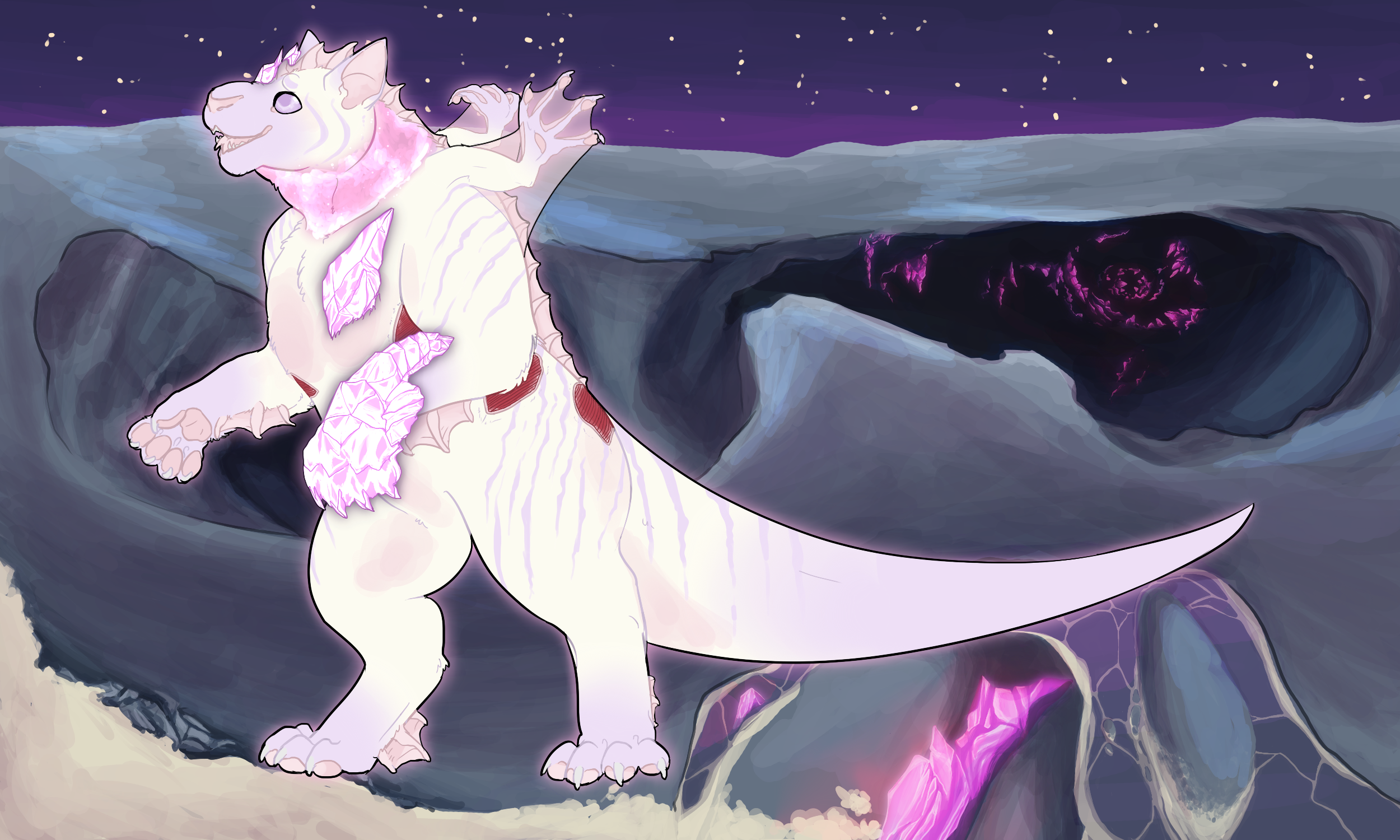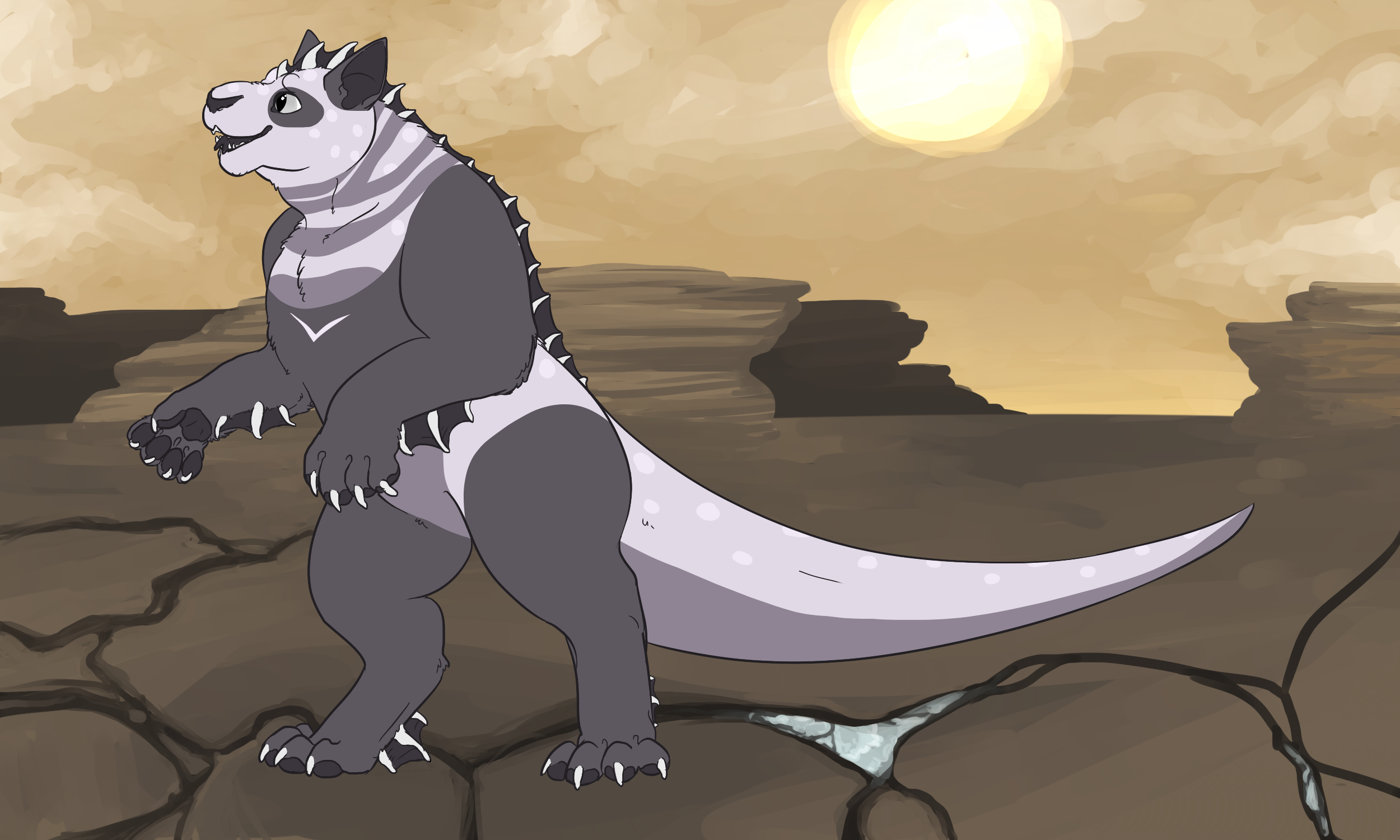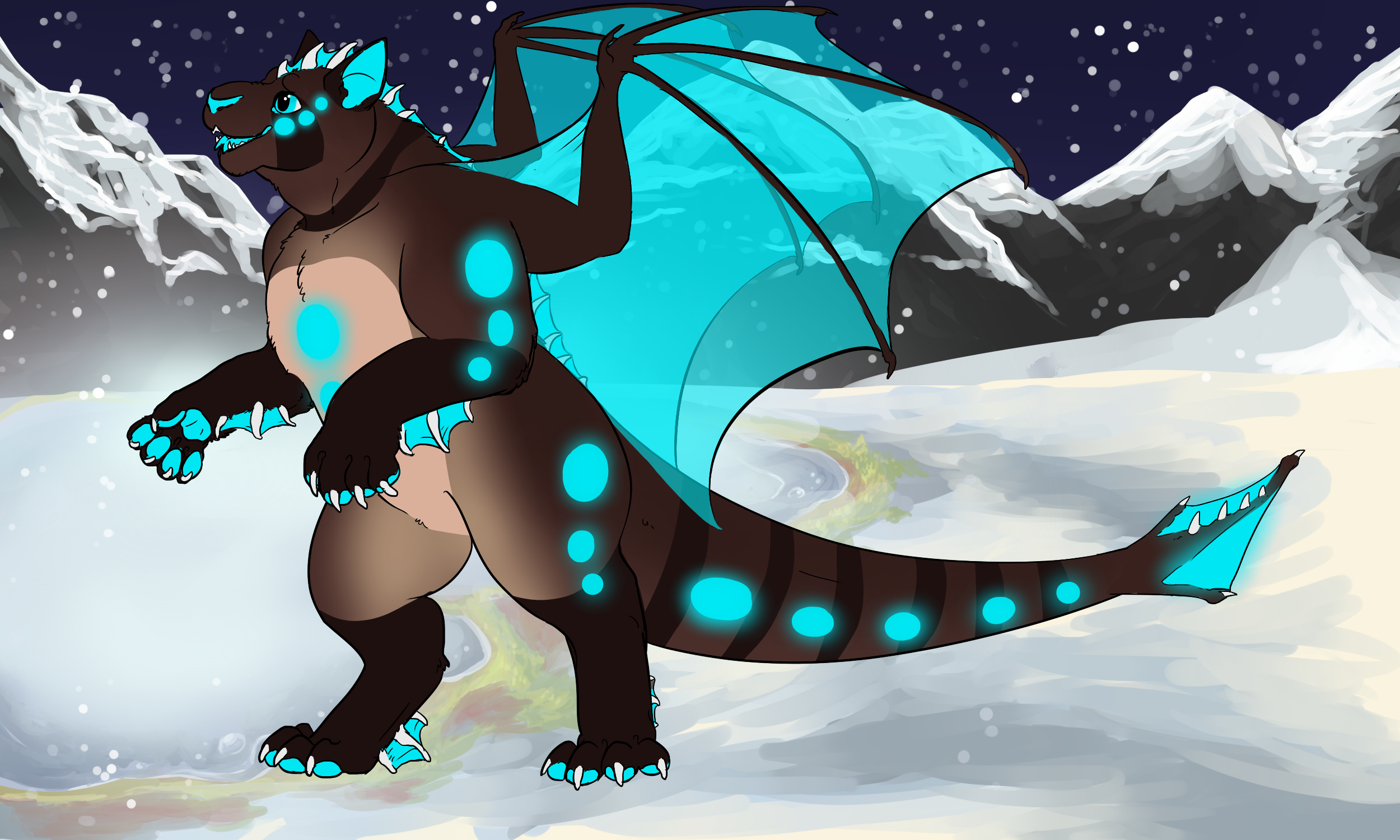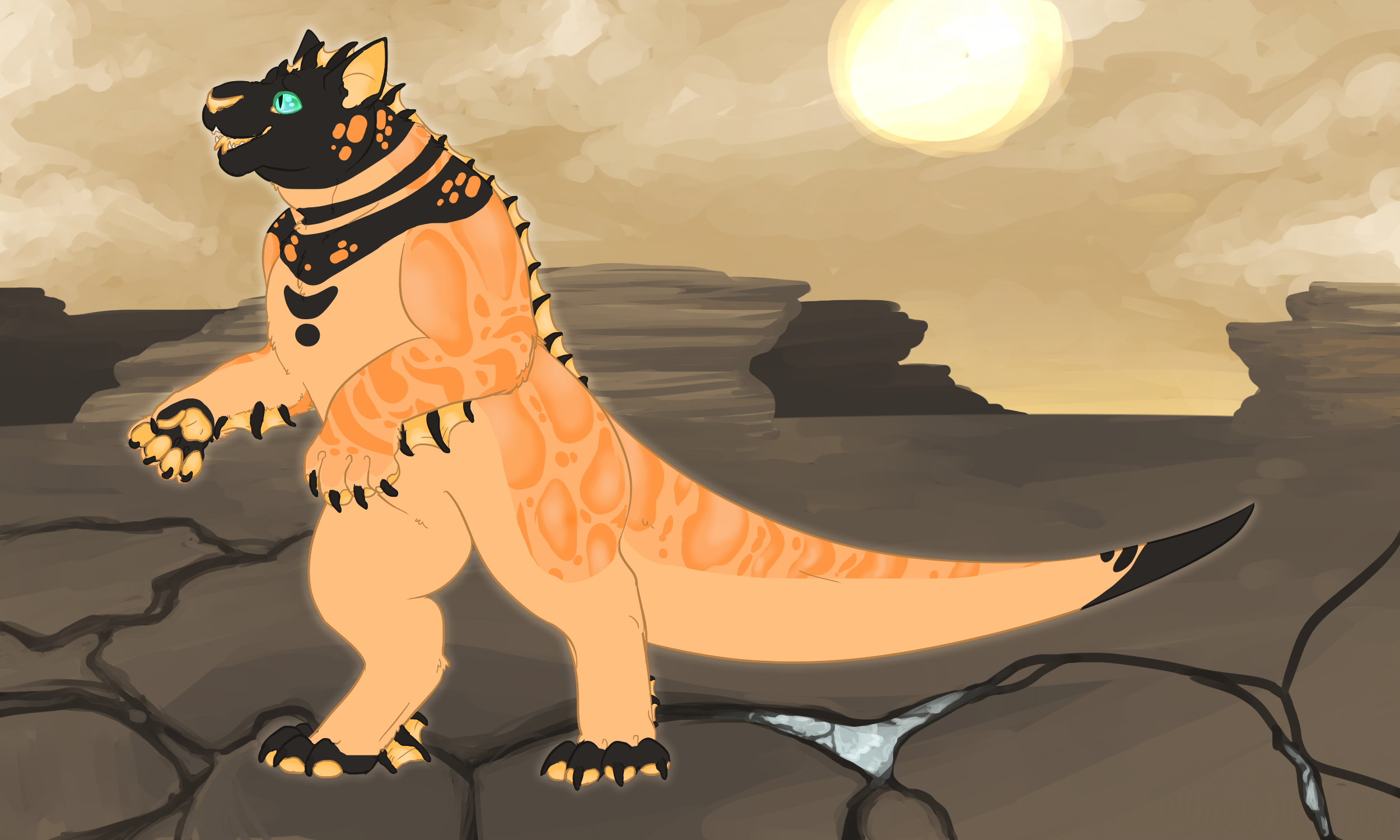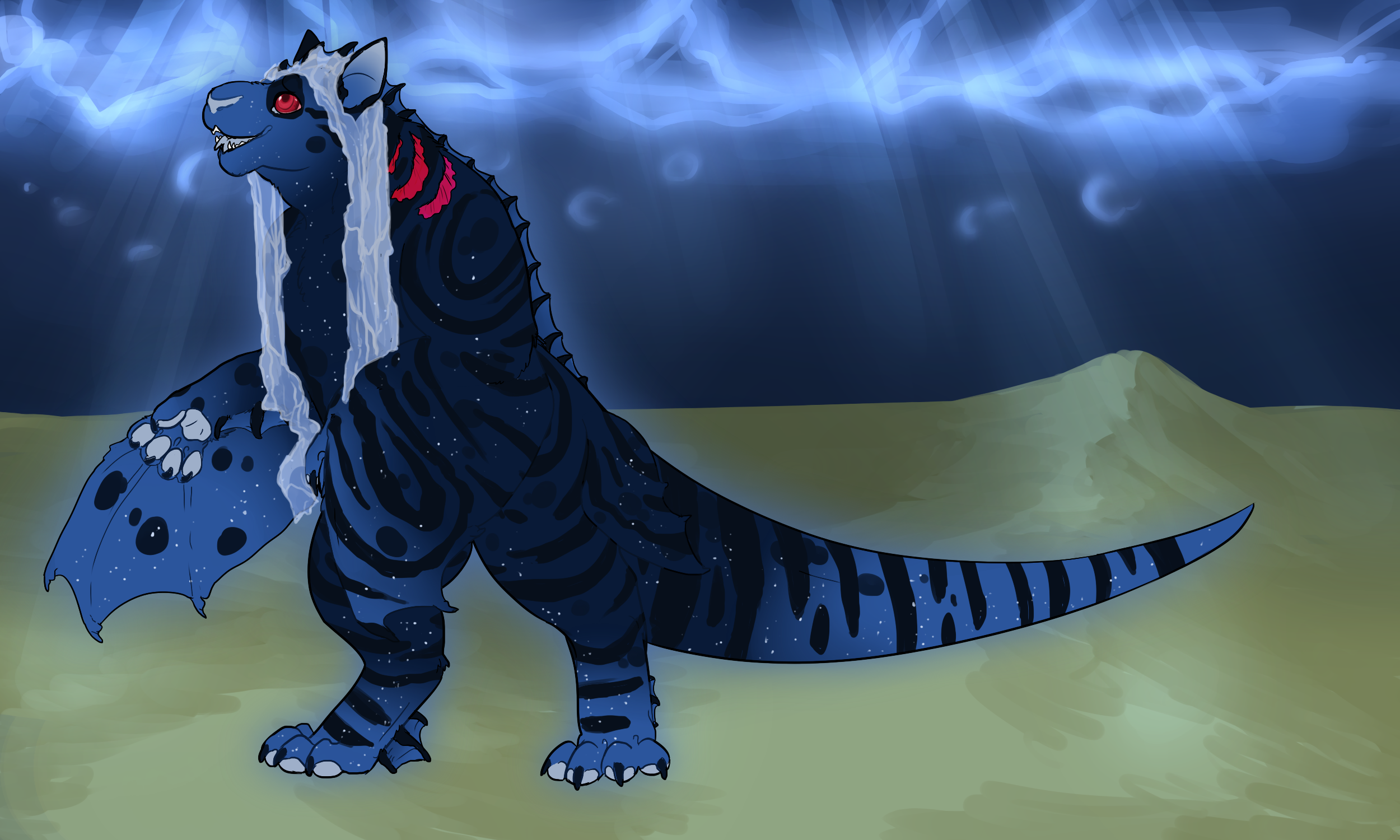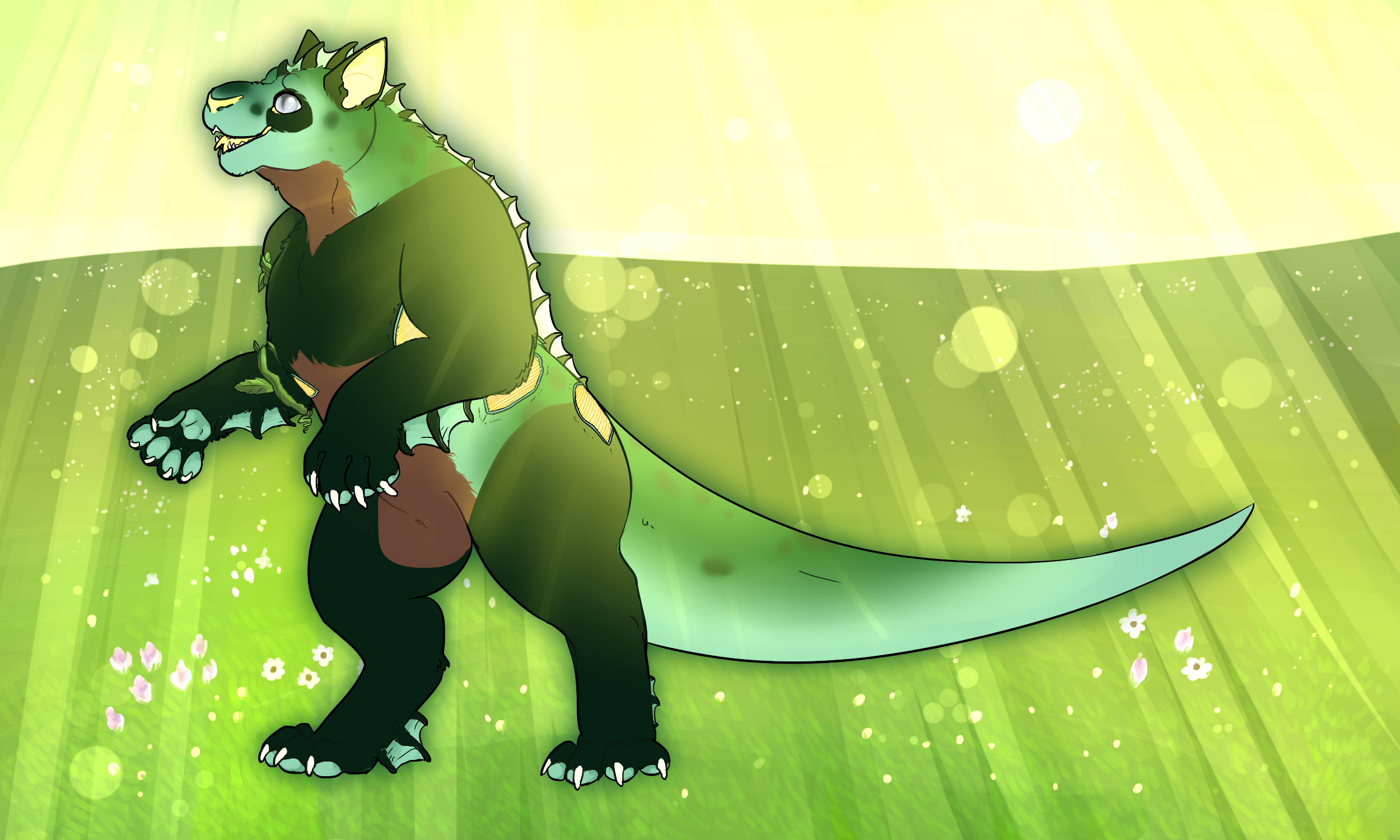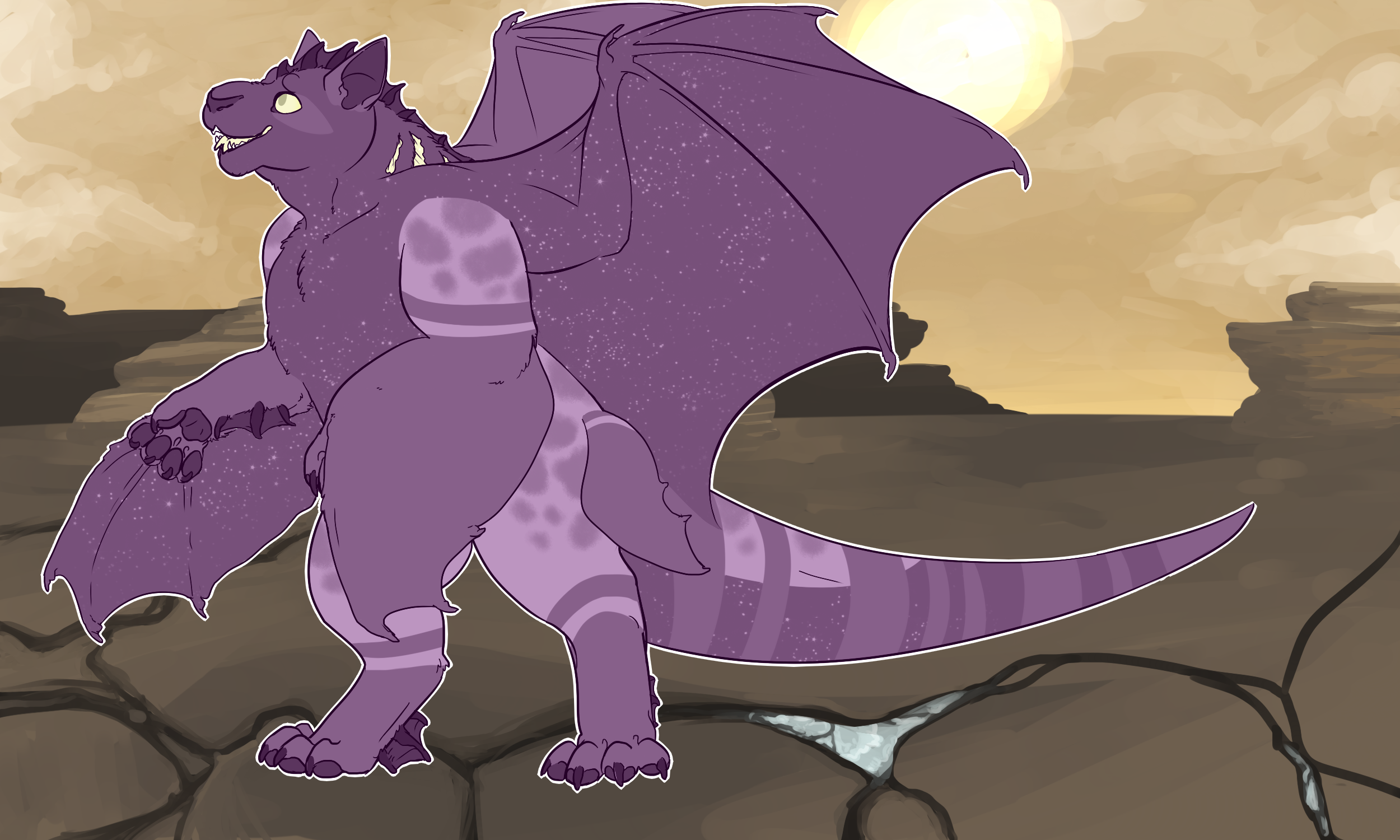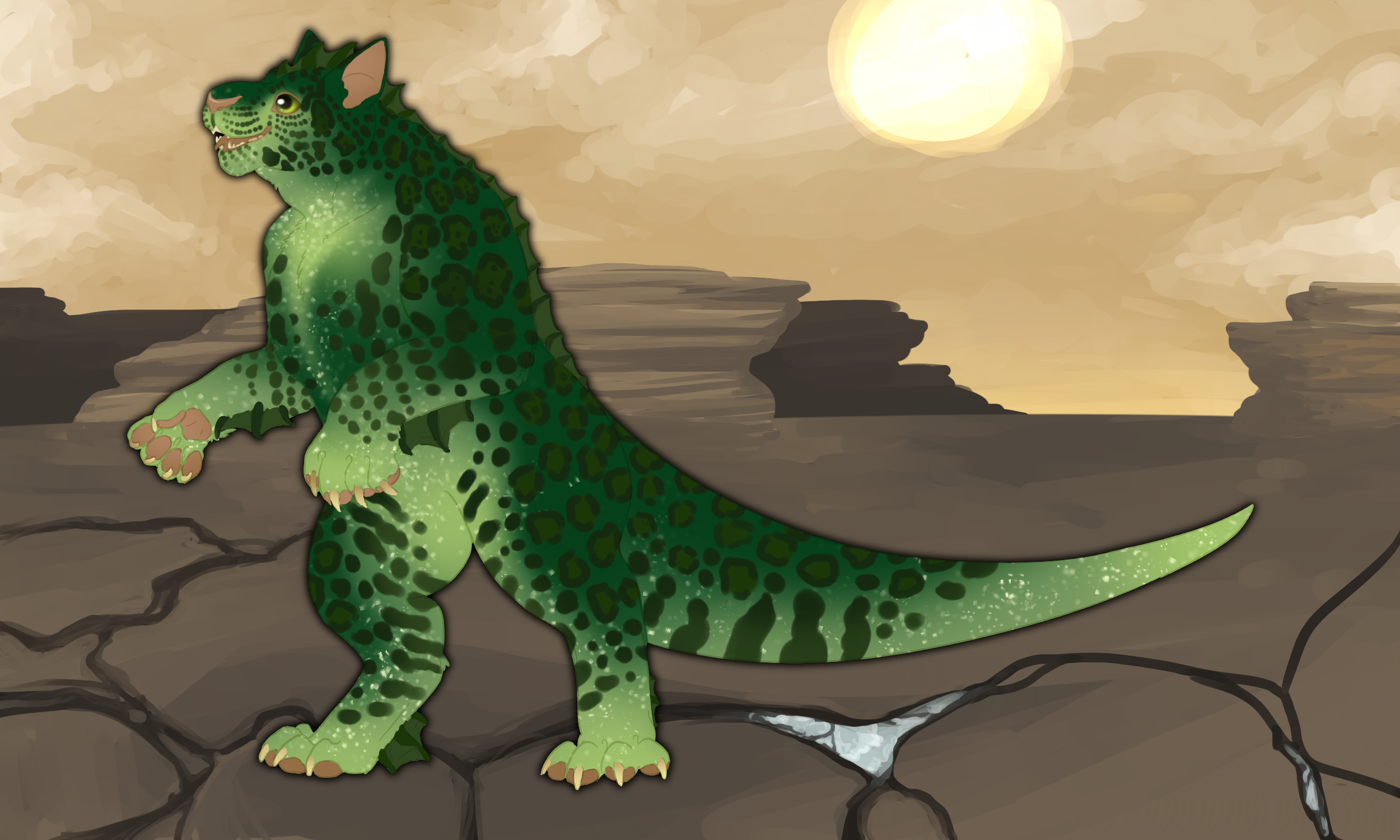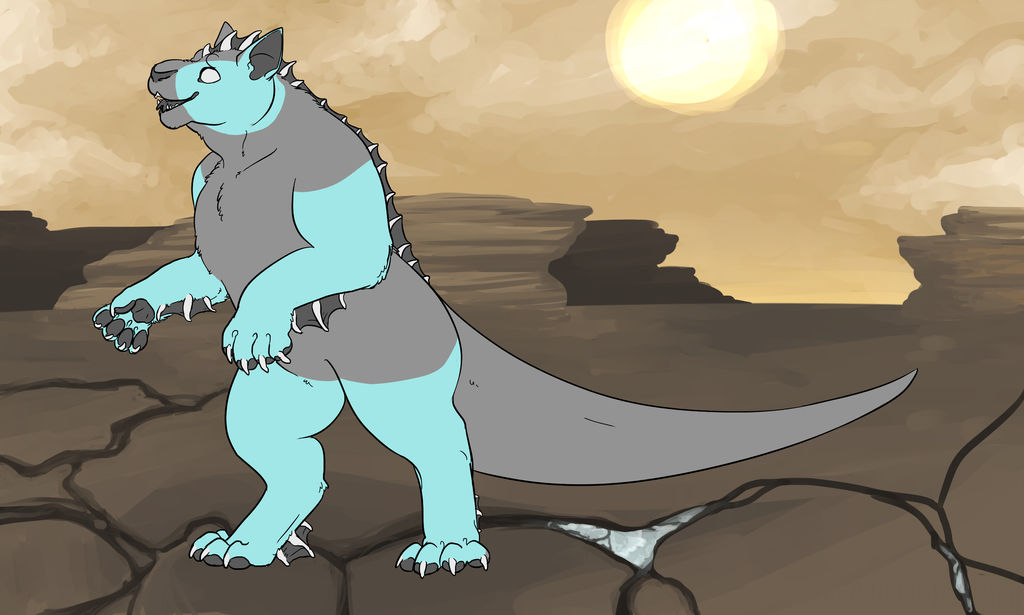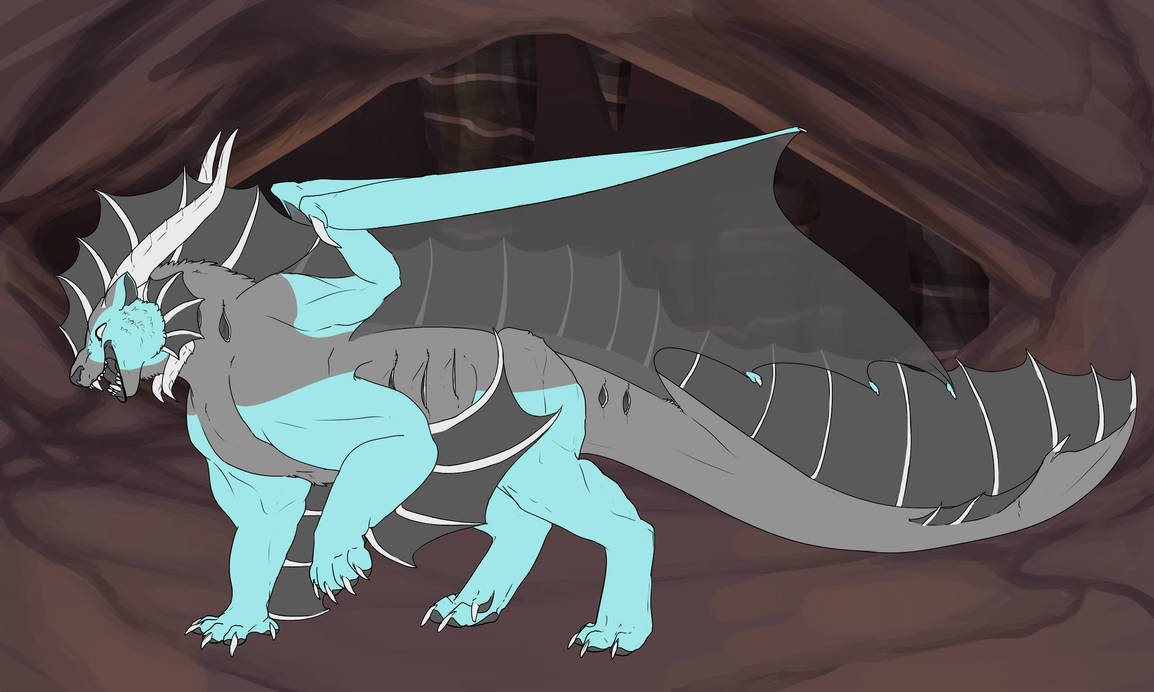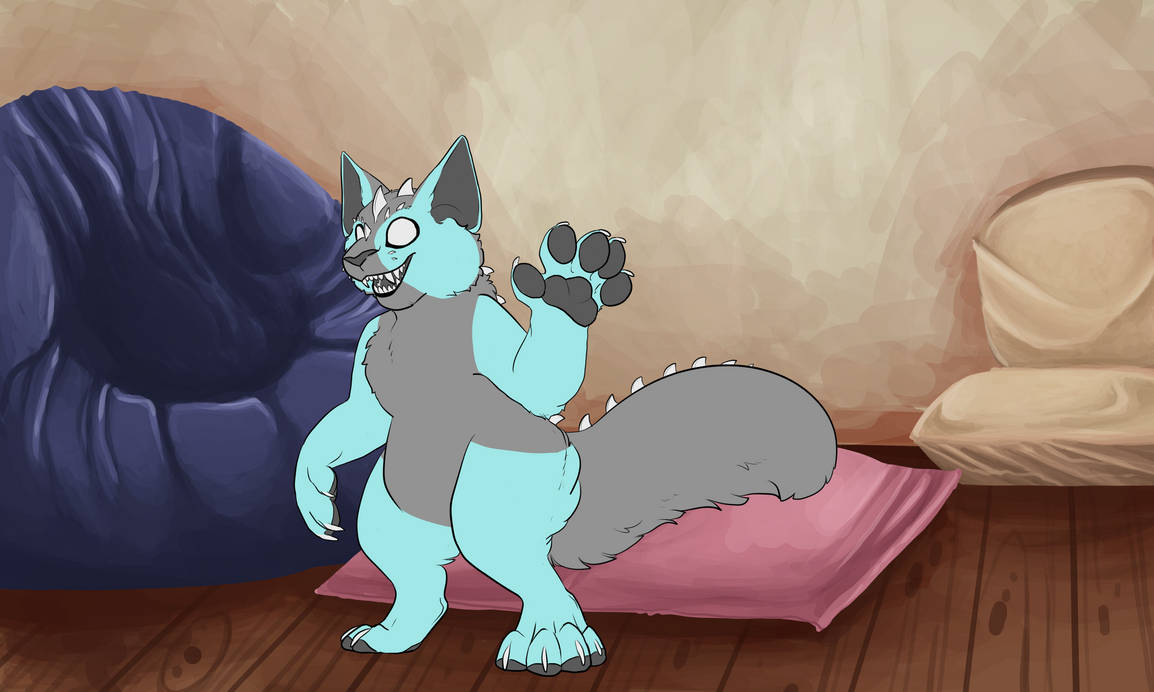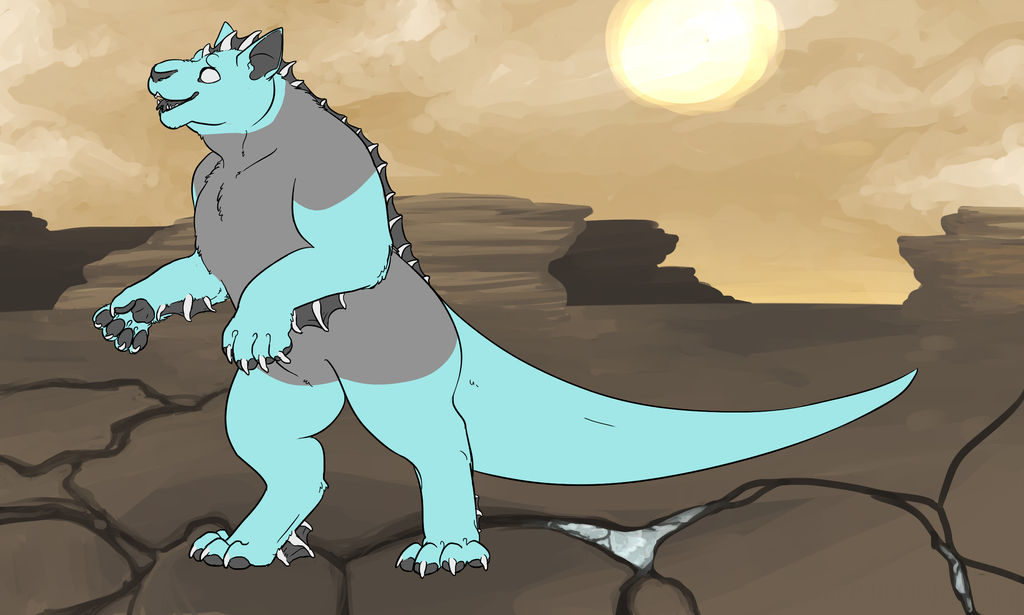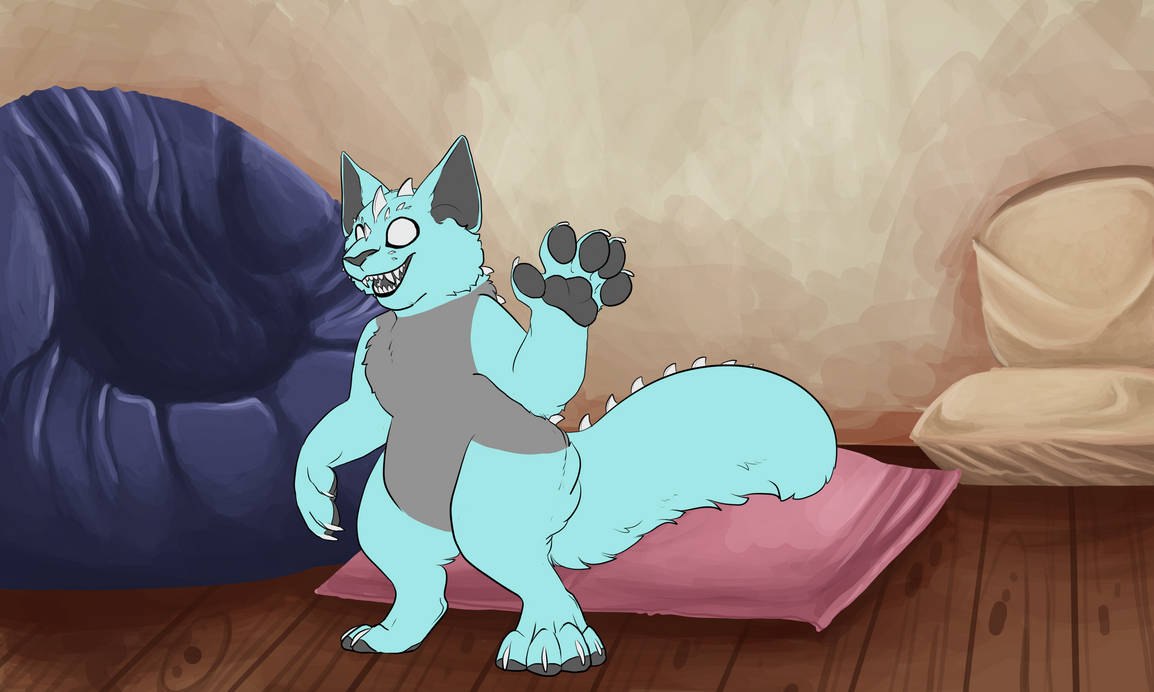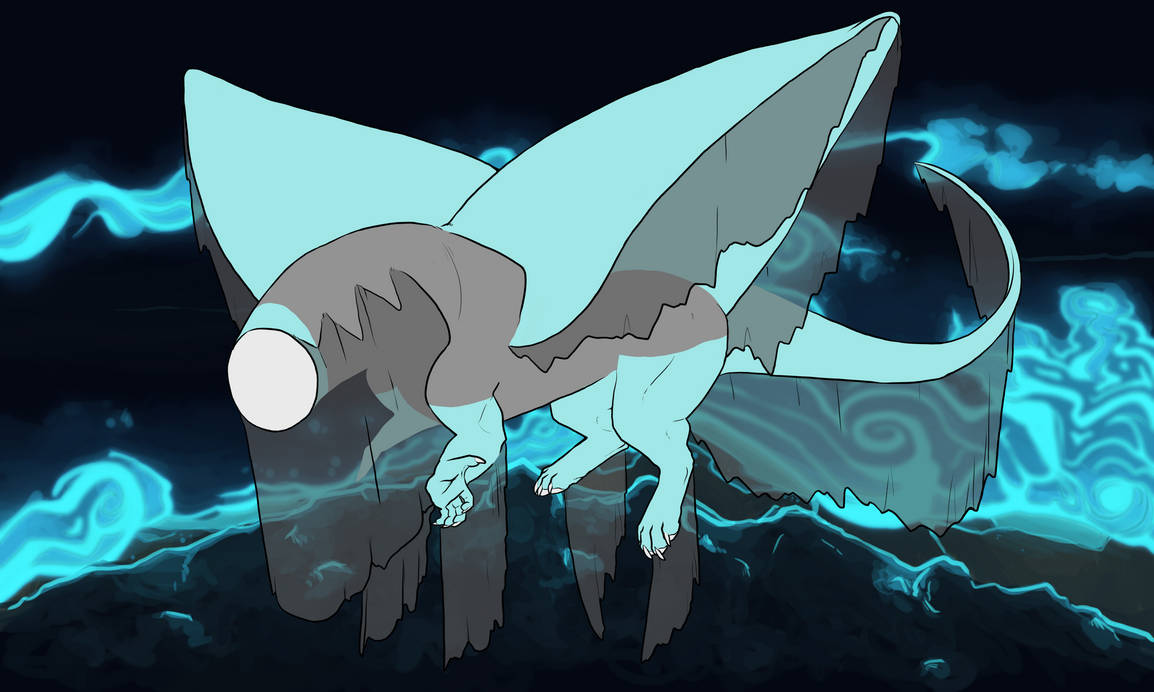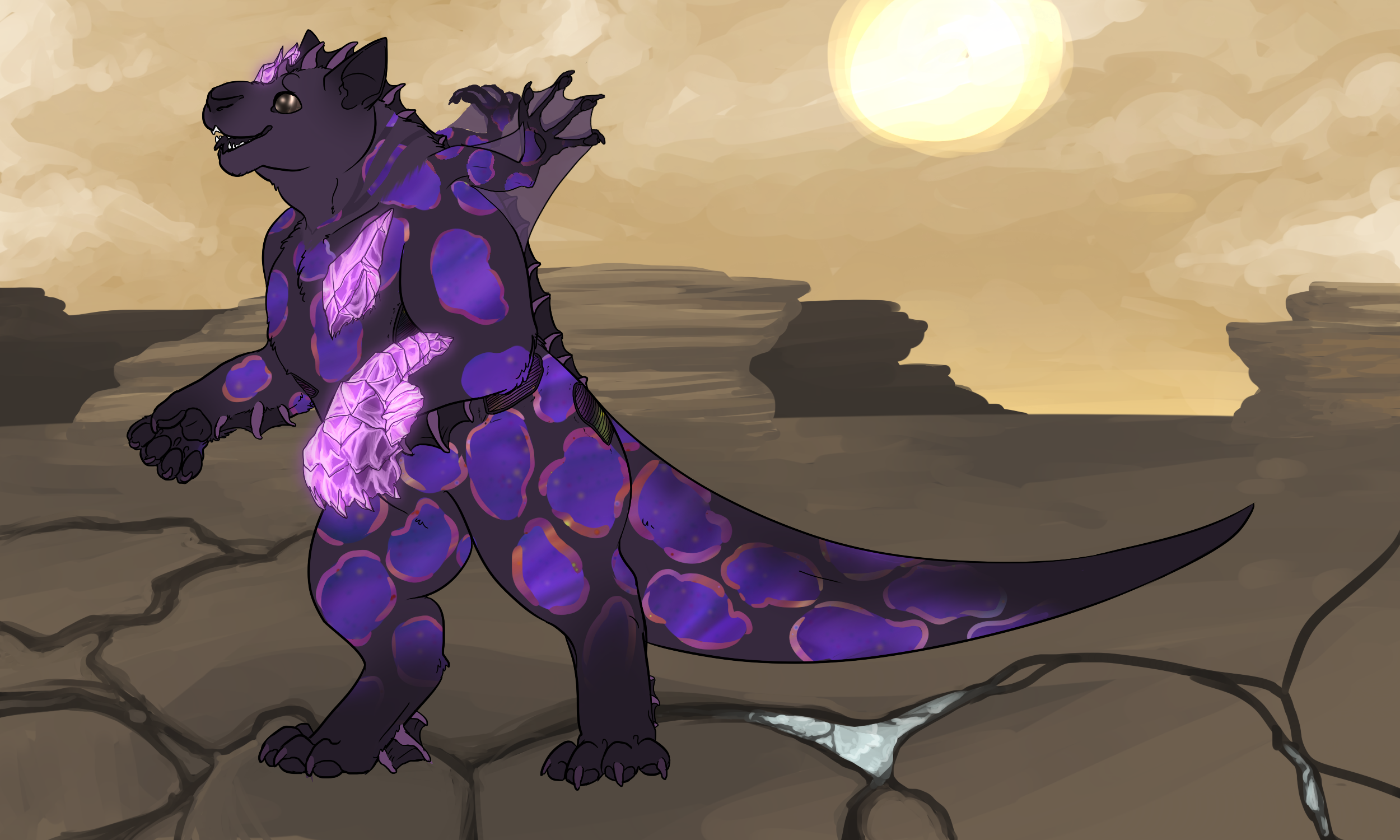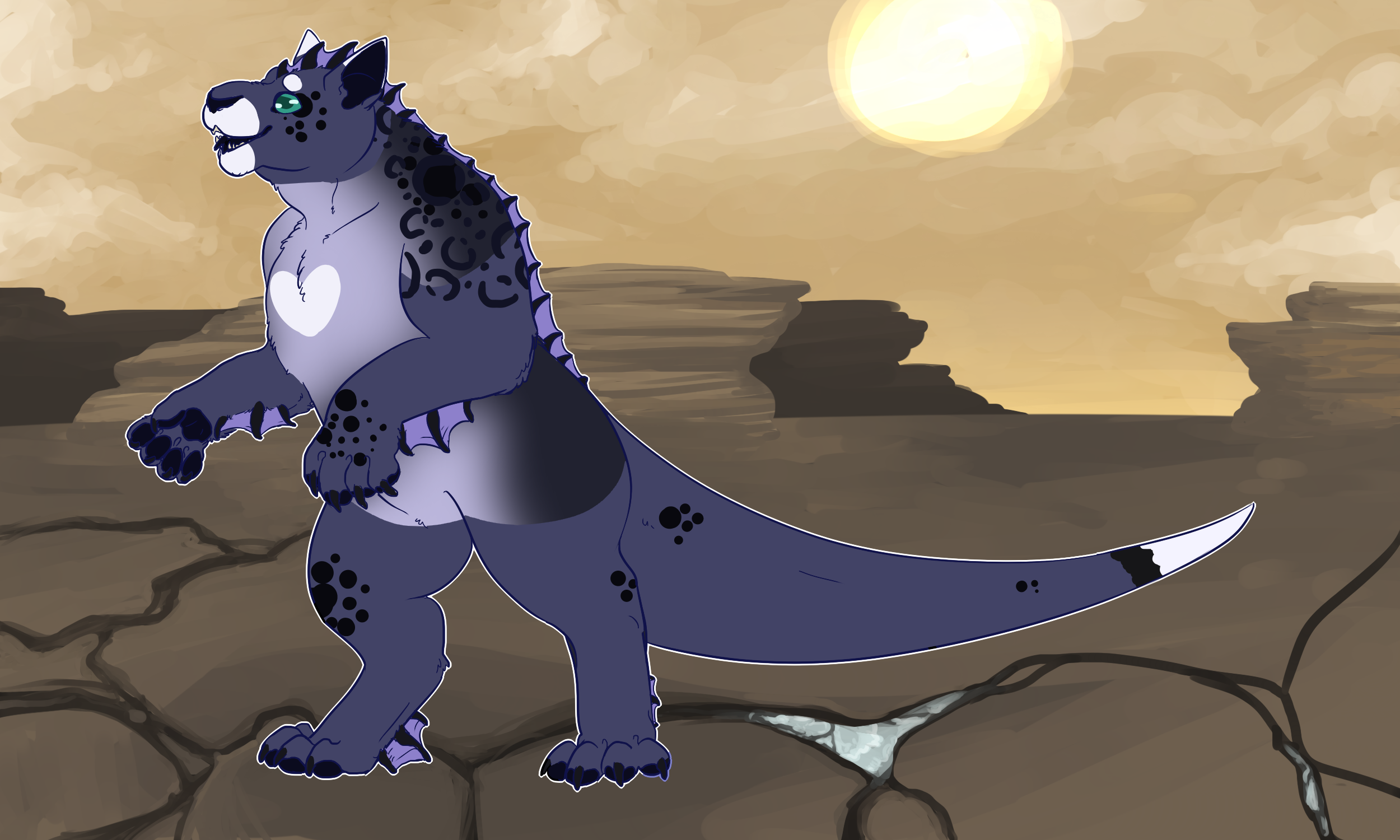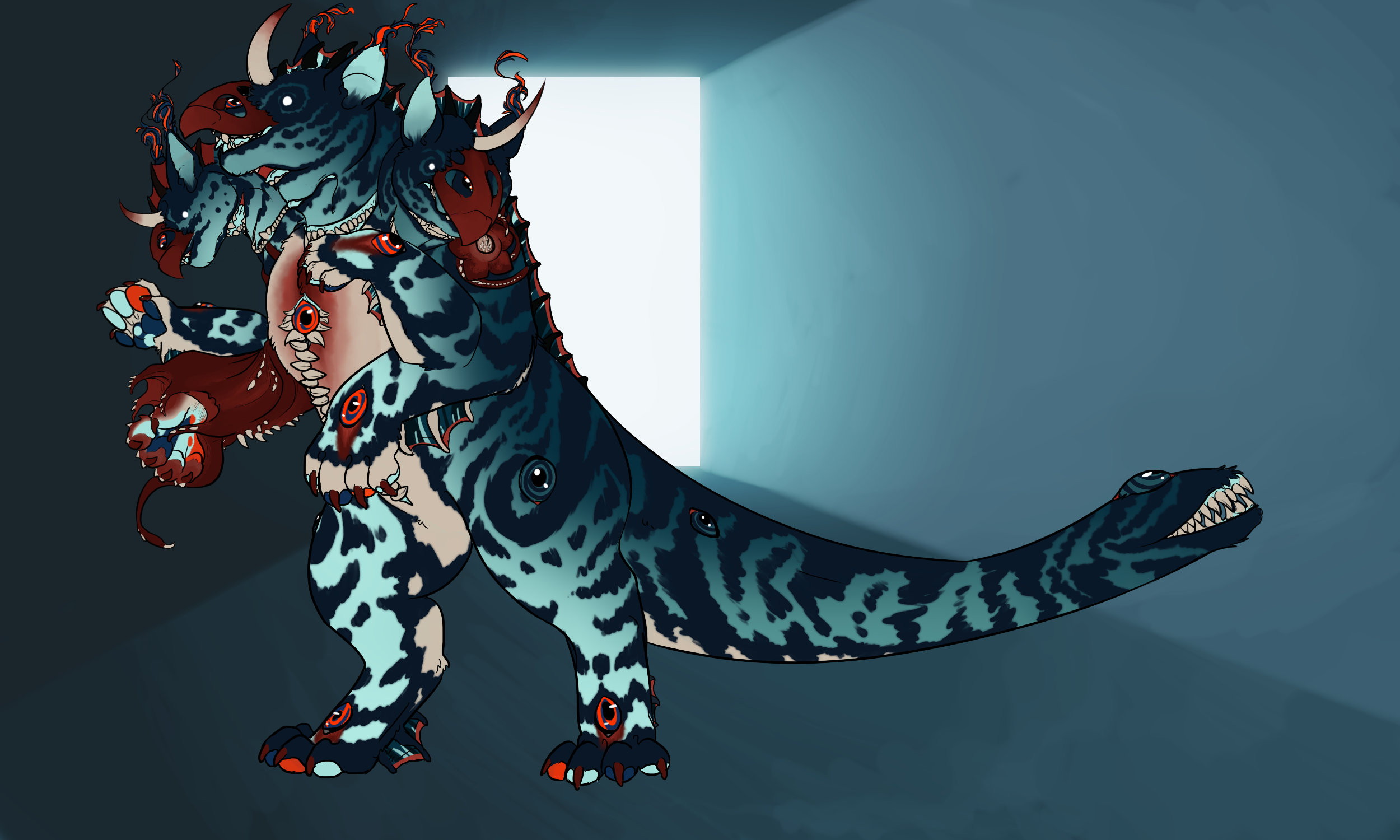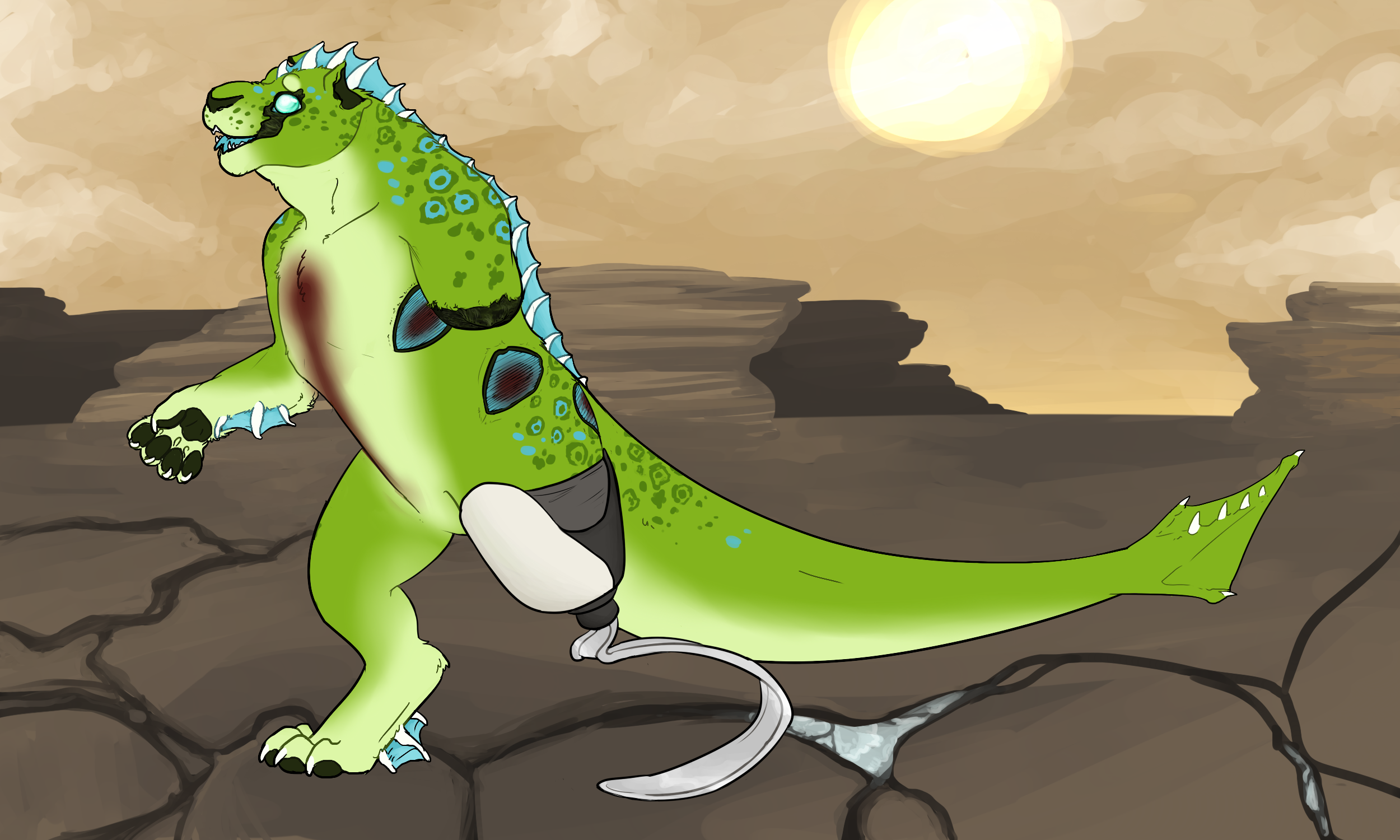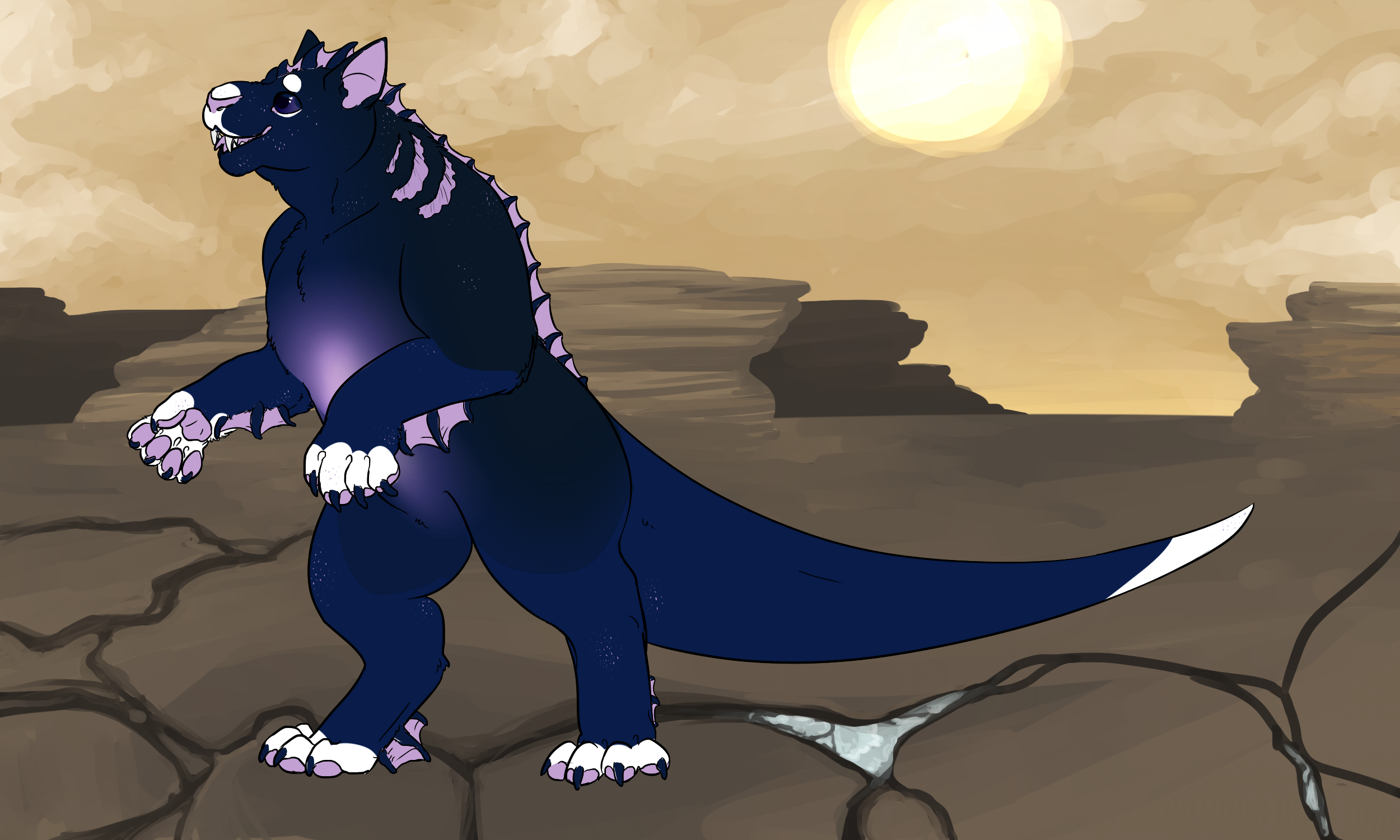Traits
Topiary (nTopi/TopiTopi) (Rare)
Dominant Topiary can take on an iridescent and/or metallic sheen, and does not have a limit on how many colors can be used in the marking.
- Topiary presents as thin spirals wrapping around part of the Rixixi, and should be inspired in part from filigree designs and/or tree branches, vines, and similar foliage.
- Topiary's shape can vary heavily, but should always contain some form of swirl or spiral, and the general shape of the marking should flow.
- Topiary should not cover more than 50% of a Rixixi.
- Recessive Topiary (nTopi) can be any color, and may be three-toned.
- Dominant Topiary (TopiTopi) may have a metallic or iridescent sheen, and has no limit on how many colors are used in it.
An example of minimal Topiary:
Examples:
Some marking shape examples:
Rixixi examples:
Tortoiseshell (nTrt/TrtTrt) (Rare)
Creates patches of color in a pattern similar to a tortie cat, patches can be any base color. Dominant Tortoiseshell patches can take on two different alternate base coat tones!
- Tortie patterns do not have an edge hardness restriction, but are typically textured.
- Dominant Tortoiseshell can have two different base colors included in Tortie patches instead of just one if the designer so chooses - both must still be picked from base coat swatches! Different colors should appear in different patches - multiple base colors should not appear in the same Tortie patch.
- The patches can appear anywhere on the body and should not cover more than roughly 50% of the Ixi. It shouldn't mimic other markings!
- Other markings can display above or below tortoiseshell.
- If the markings appear above tortoiseshell, they can be color-shifted where they touch the patches - it must still follow the marking's color rules, however! With modifier markings like Glitter and Lunar, this can result in an entirely different modifier color being present on the patches than the color present on the main body.
Examples:
Droplets (nDro/DroDro) (Uncommon)
- Droplets alters the edge "texture" of a marking. The droplets should match the modified marking's edge hardness and shape - that is, a hard-edged marking would have hard-edged droplets, and a soft-edged marking would have soft-edged droplets.
- Two+ toned markings can have droplets on the edge of each marking color - see Dreamurr in the examples for a visual.
- Droplets should match the original color of the modified marking, unless Droplets itself is modified by a color modifier.
- If Droplets is the only marking on the Rixixi, then Droplets can create either a Sable or Cloak-style back marking, with Droplets affecting the edge - effectively "droplets going down the back".
- Recessive Droplets can modify the edge of one marking, while Dominant Droplets can modify the edge of multiple - as many as the designer desires.
Examples:

Affecting Squared.
Affecting Hexagon.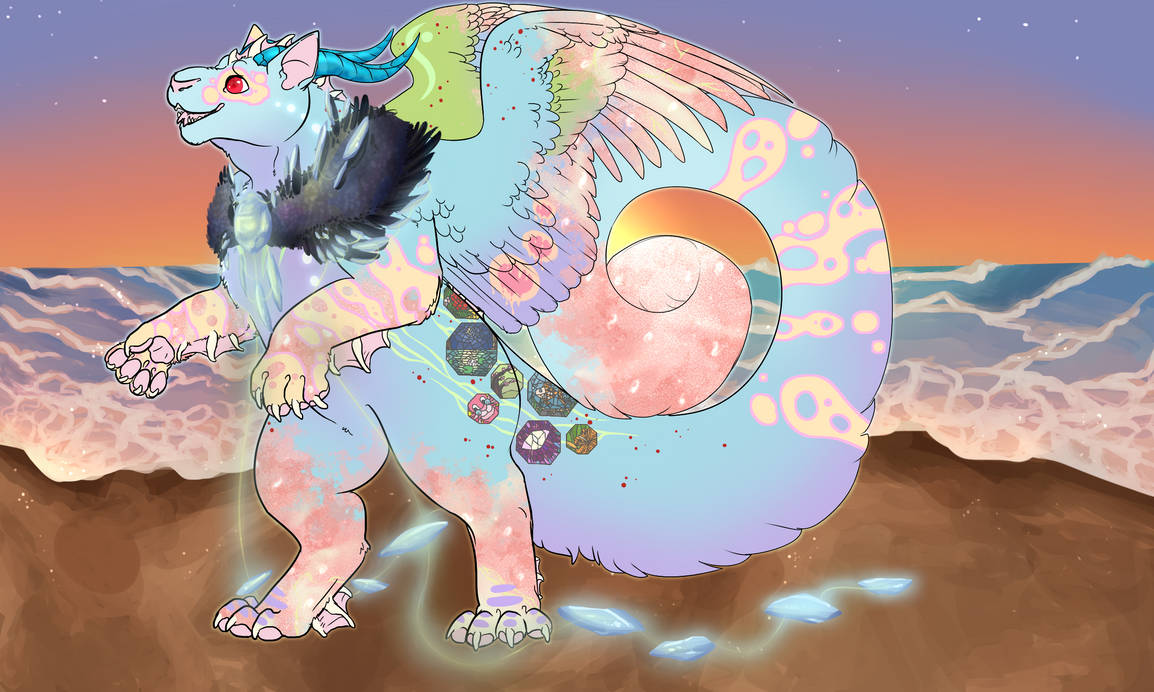
Affecting Eyespots - Two-toned.
Eyespot (nEye/EyeEye) (Uncommon)
Creates spots with rings of color inside. Can be hollow.
- Eyespot can be any color, and can be multicolored - they can have gradients, multicolored rings (multiple if desired), even both.
- The marking can have a cutout if desired, displaying as hollow rings instead of solid spots.
- It should be hard-edged.
- Eyespot has no minimum, and must only appear visibly on the design. It has no maximum, and can appear anywhere on the Rixixi.
Examples:
Accents (nAc/AcAc) (Common)
Range:
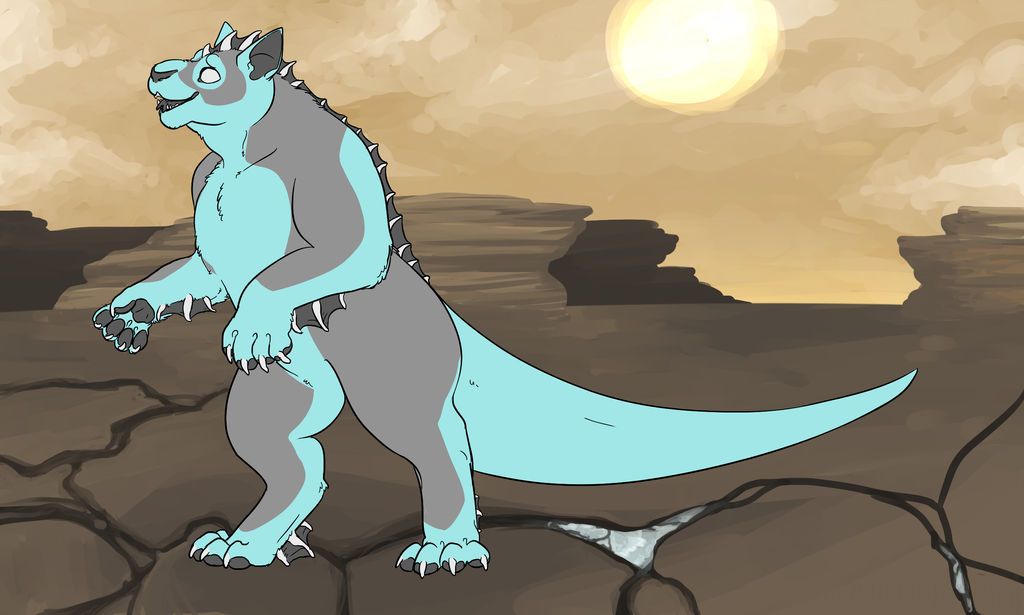

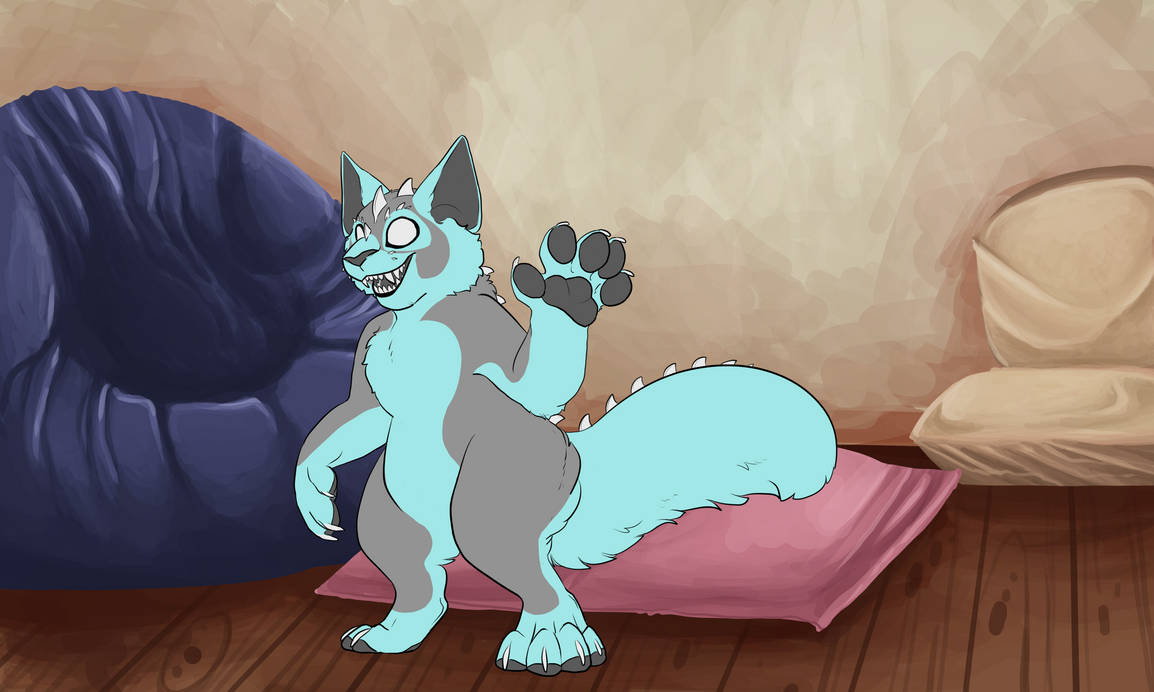
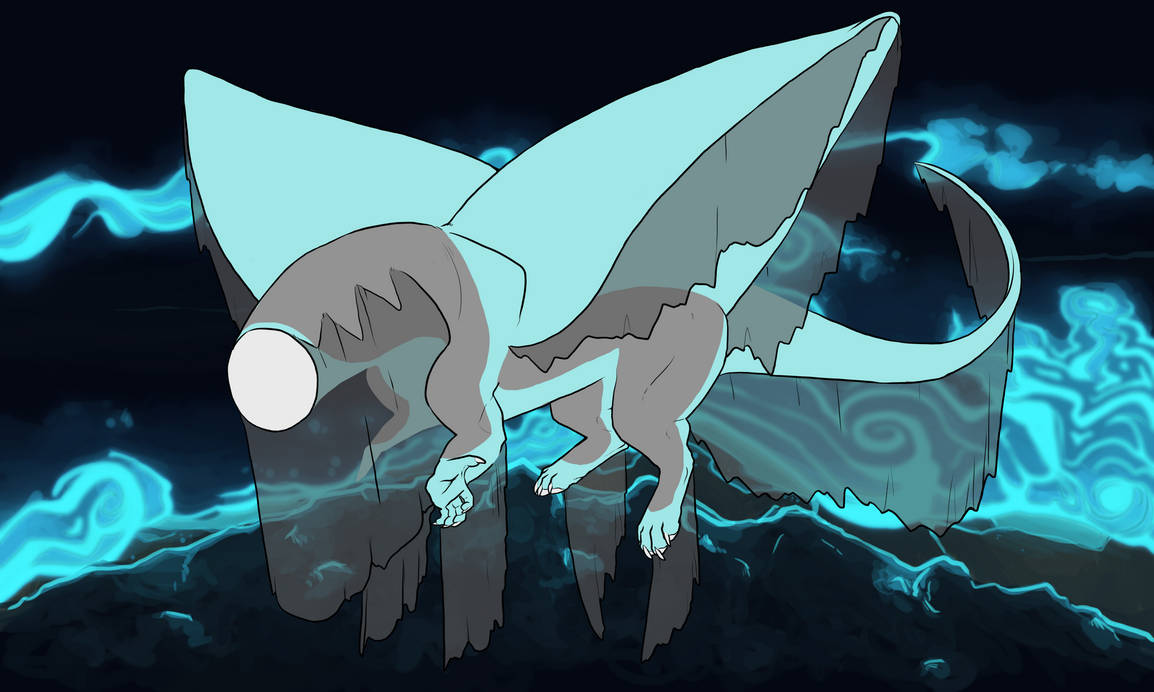
- Accents can be any color, and may display up to two colors within the marking, which may be blended together.
- It has no restriction on edge hardness.
- Accents has no minimum, but should be clearly visible on the Rixixi.
- Accents should not heavily resemble most markings (though being distinctly its own marking with its own rules is typically enough to get it to pass - e.g. a striped, procyonid-like tail can pass if paired with other Accents), however, Accents can resemble Unders, Tan, or Pangare with no issue.
Examples:
Clownfish (nClw/ClwClw) (Common)
Thick bands, lighter than base coat, that wrap around the body. Can have a dark border around them.
- Clownfish presents as thick, pale bands that wraps around various parts of the body. Unlike Hood, the bands can be broken, but take care to not break them up so much that they begin to resemble spots!
- Clownfish must be a lighter shade of the base coat, including white. Optionally, it can have a dark border around the marking. It may have a gradient, but it must be within a similar hue, not heavily two-toned.
- Edge may be hard, textured, or somewhat soft. It should not be fully blended out.
Examples:
Dapple (nDpl/DplDpl) (Common)
A cluster of pale, soft spots on the body, often shaped like stars.
- Edges should be soft, and can be textured. They can be simple spots, or can be shaped more like 'stars'.
- Must be lighter than the base color.
- Can be fullbody or in clusters covering partial sections of the body.
- At minimum, the marking should at least cover part of the torso, and can expand out from there.
Examples:
Dun (nDn/DnDn) (Common)
Range:
- Edges should be hard or soft. They should not be fully blurred out.
- Must be a darker shade of the base color.
- Dorsal stripe is mandatory, but additional striping on the shoulders/tail/wrists/ankles/forehead is an optional design choice! Feel free to add that or leave it out as you please!
- There is no minimum range (other than the dorsal stripe being mandatory), but it should appear visibly on the design.
Examples:
Fawn (nFw/FwFw) (Common)
Causes spots lighter than base coat, should be somewhat uniform in sizes/shapes.
- Fawn causes spots in a small-medium size, typically clustered together in a few separate areas. All fawn spots should be around the same size range - some minor size discrepancy is fine, and most often occurs on the outside of a cluster. They should be in a somewhat uniform pattern, the uniformity ranging from the spots on a fawn's back to more scale-like patterns.
- Must be lighter than the base coat.
- Edges should be hard, and not heavily textured. Light texturing is okay, but take care not to go overboard.
- Fawn can appear anywhere on the ixi. It is most commonly found on the back, but this is not mandatory!
Examples:
Fissure (nFssr/FssrFssr) (Common)
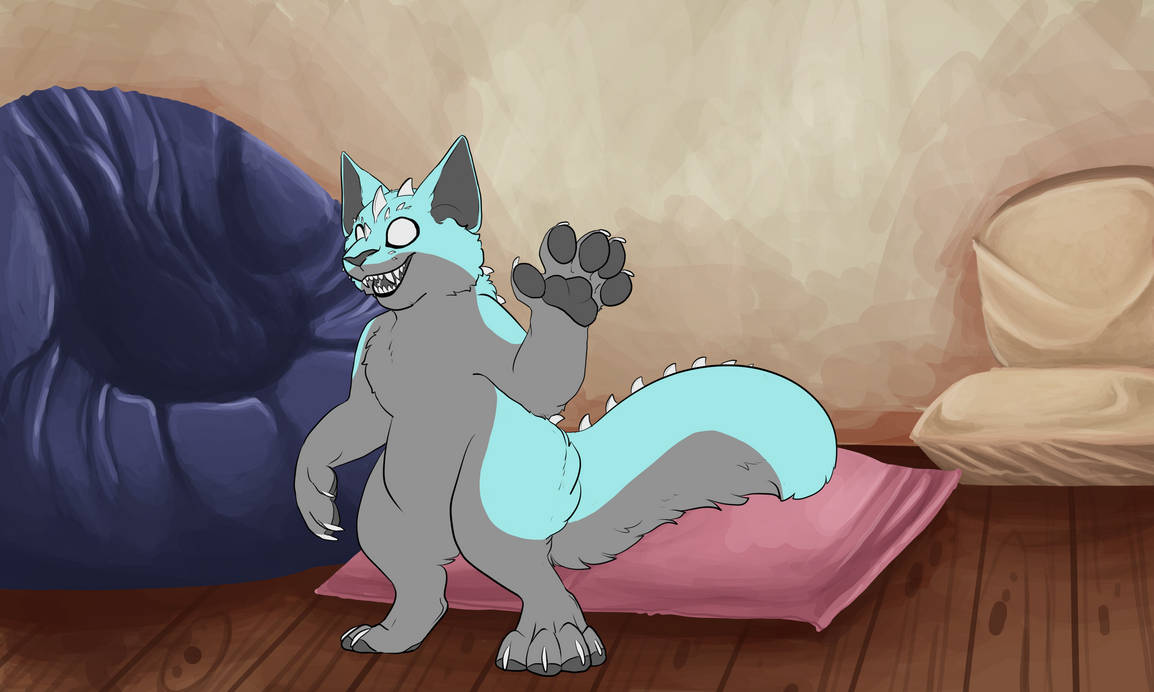
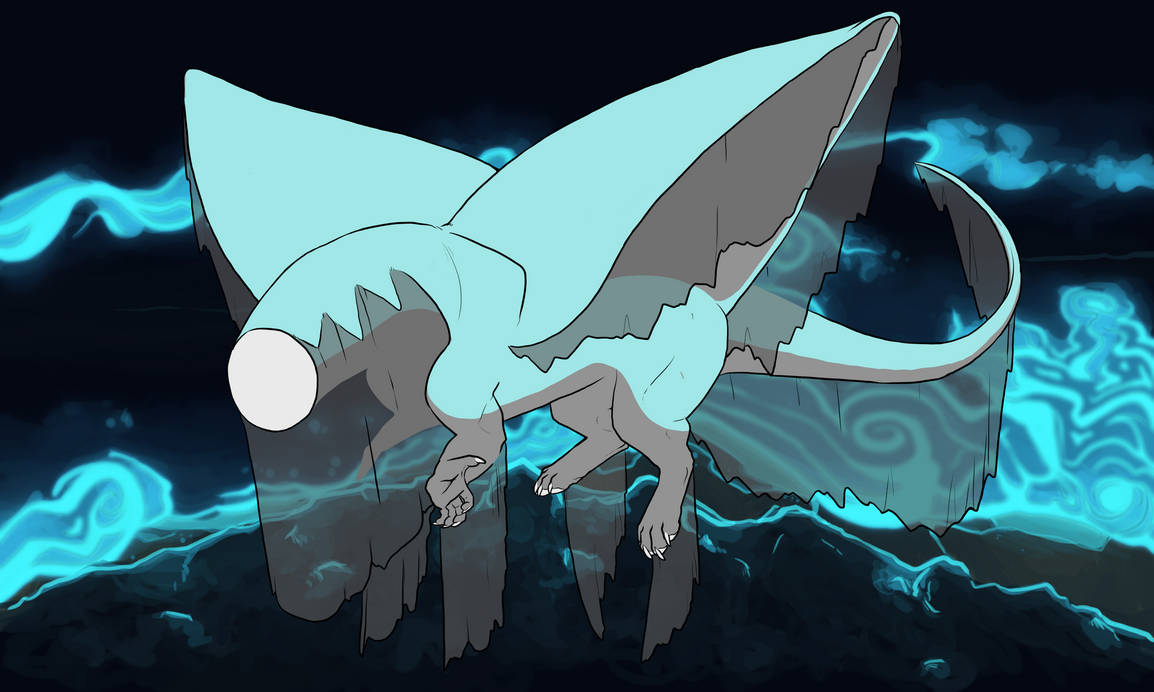
- Fissure shares a range with Skunk nSku/SkuSku, with some changes to how the rules work - Fissure must display in the middle of the back, with stripes on the side being optional. Side stripes can travel down 50% of the body maximum, and can start and end at any point.
- If Fissure only displays along the back, it should not be a thick enough stripe to cover the entire range. Side and back stripes should have a noticeable gap between them, but can meet at the ends if desired.
- Fissure may be any color, and may display up to two colors within the marking, which may be blended together.
- Edge may be hard, textured, or somewhat soft. It should not be fully blended out.
Examples:
Flourish (nFlr/FlrFlr) (Common)
Range:
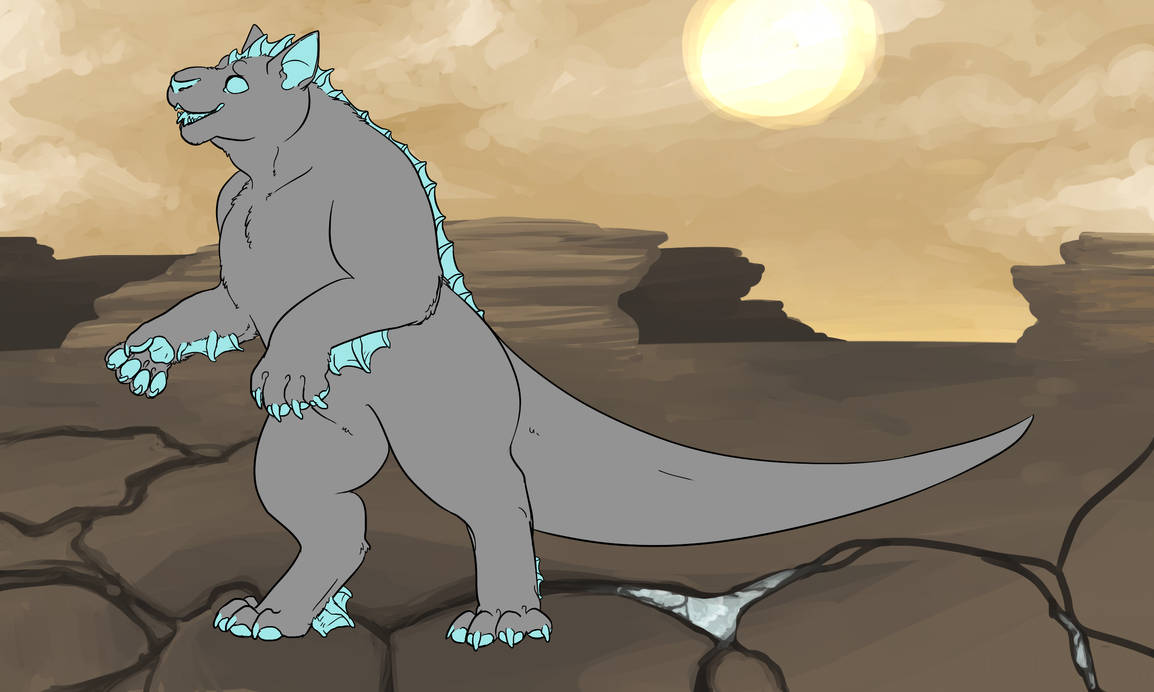
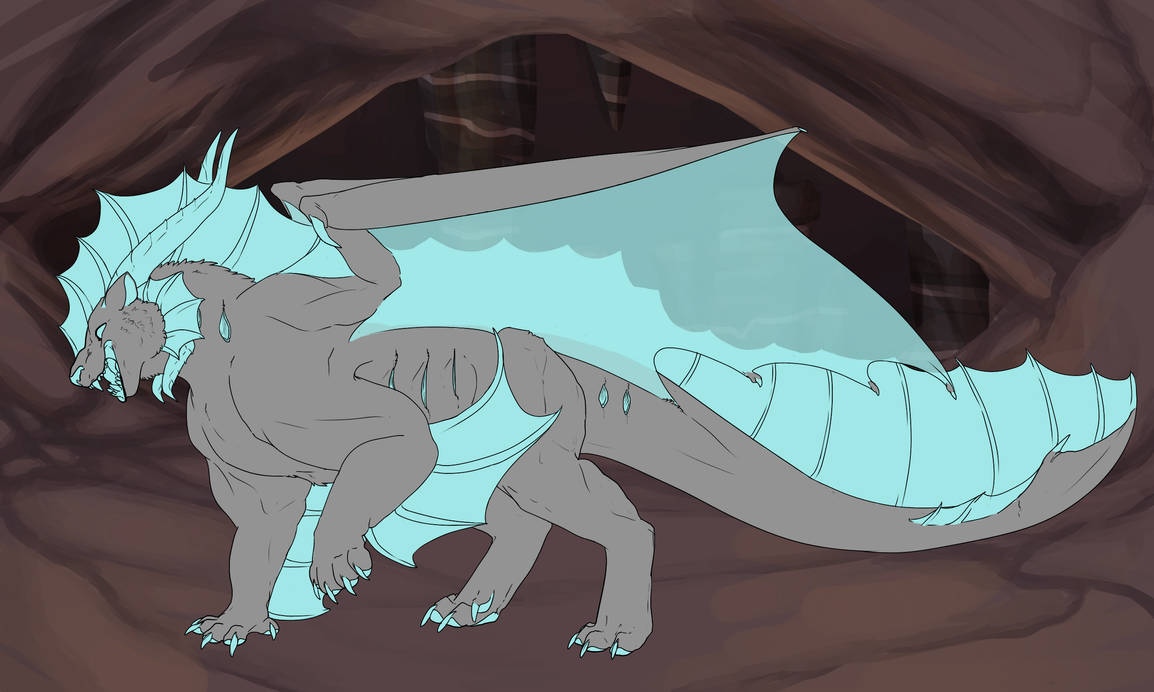
- Flourish can be any color, and may display up to two colors within the marking, which may be blended together.
- It has no restriction on edge hardness.
- Flourish has no minimum, but should be clearly visible on the Rixixi. It has no maximum, and can appear on any and all skin and 'extras' layers.
- Flourish does allow for markings on teeth without cosmetics!
- Flourish can present on all non-color mutations. Combination mutations that hybridize with color mutations and non-color mutations (such as Translucent) can be affected by Flourish. Fur Length mutations can show Flourish on the skin - for example, the entirety of Sphynx and the bald patches of Lykoi; however, Flourish cannot present on Long Fur.
- Flourish can resemble any common or uncommon marking, and still follows its own color rules. It can also make unique combinations of existing markings - for instance, Laouto's hooves are a combination of Ripple and Ticked intended to look like grass and vines.
Examples:
Gradient (nGr/GrGr) (Common)
Allows the base coat to show as a gradient. Gradient must be between colors that exist on the assigned base coat's sliders. Dominant Gradient can alter markings as well.
- Recessive Gradient appears only on the base coat, and should appear somewhere on the base coat - amount does not matter so long as it is visible.
- Gradient can between any colors from either of the swatches from the Rixixi's associated base coat. For instance, if your Rixixi is Skyburn with Gradient, you are allowed to take the hot pink from the bottom swatch and the orange-red from the top swatch and blend them together! You can also go for a subtler gradient and choose colors on the sliders that are closer together.
- Take care not to make Gradient too closely resemble pangare, sable, or other similar markings!
- Recessive Gradient must be locked to the base coat, but Dominant Gradient can also alter markings to have a gradient in them, either using the Rixixi's base coat swatches for gradient colors, or basing the gradient colors off the marking color rules (such as 'lighter or darker than base coat' or 'any colors').
Examples:
Groundbreaking (nGbk/GbkGbk) (Common)
Creates crackles across the body of the Rixixi, in any color, including bright ones. Can be two-toned.
- Groundbreaking can be any color, and may display up to two colors within the marking, which may be blended together.
- It should appear as a streak of color that branches off, as if making a "crack" or "lightning bolt" shape.
- It should be hard or textured-edged.
- Groundbreaking has no minimum, and can appear on multiple places on the Rixixi's body. It should not cover more than roughly 50% of the Rixixi.
Examples:
Hexagon (nHex/HexHex) (Common)
- Hexagon can be any color, including bright ones, and may be three-toned.
- It should be shaped like a pattern of hexagons, octagons, pentagons, or similar geometrical shapes. It can be rough and "natural" looking, like a giraffe's spots.
- It can be hard-edged, lightly soft-edged, or lightly textured. It should not be blurred out or heavily textured.
- It has no minimum, but should be noticeable on the design.
Examples:
Hood (nHd/HdHd) (Common)
Range:
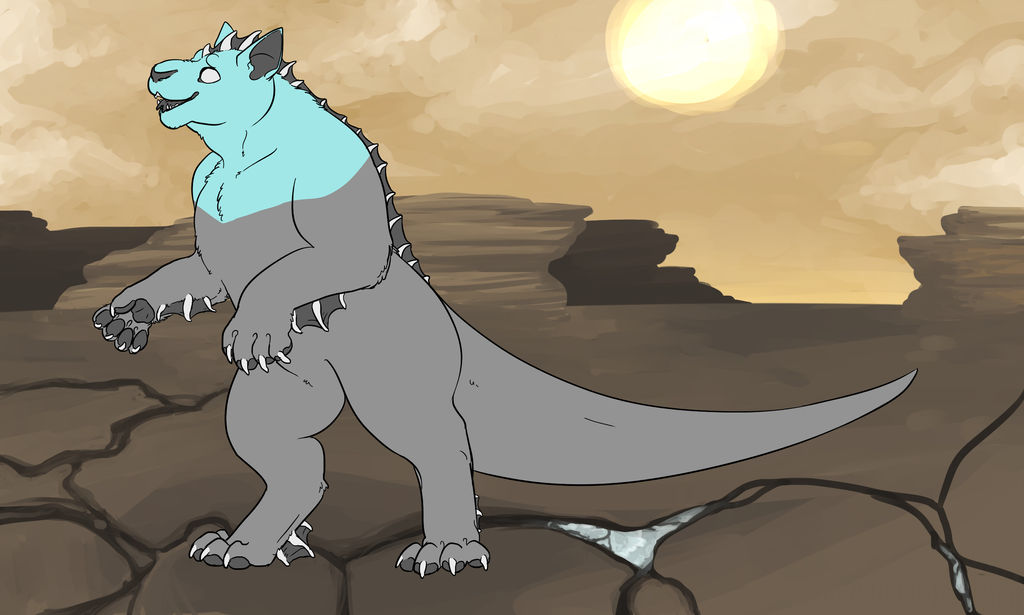
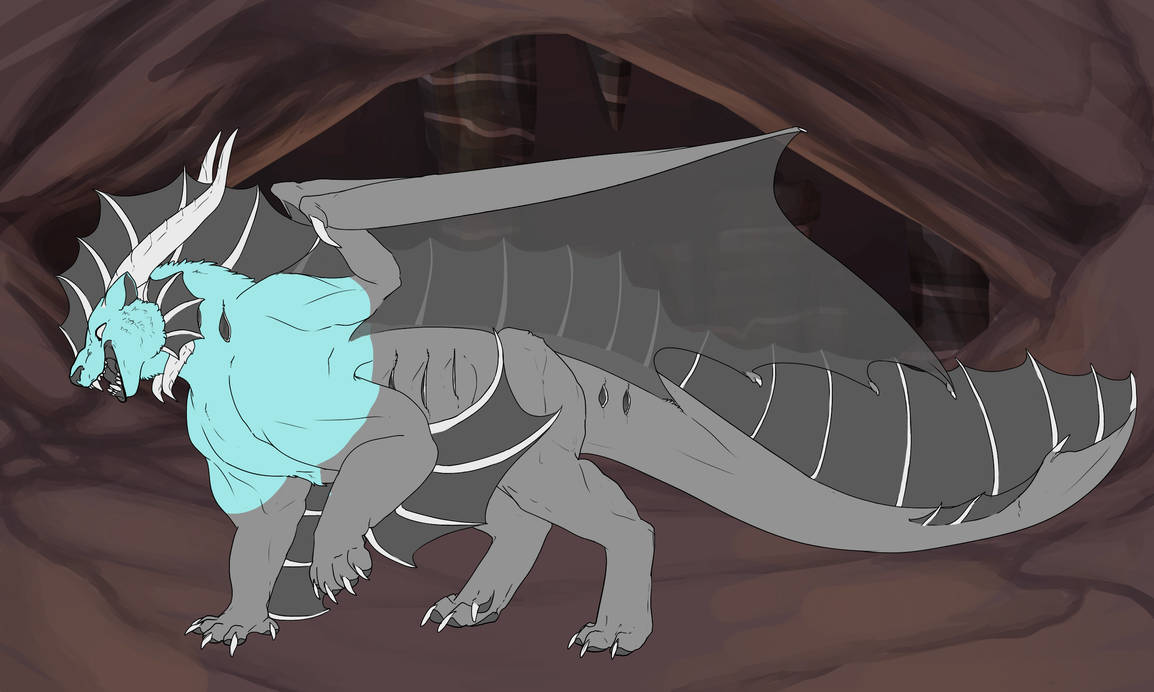
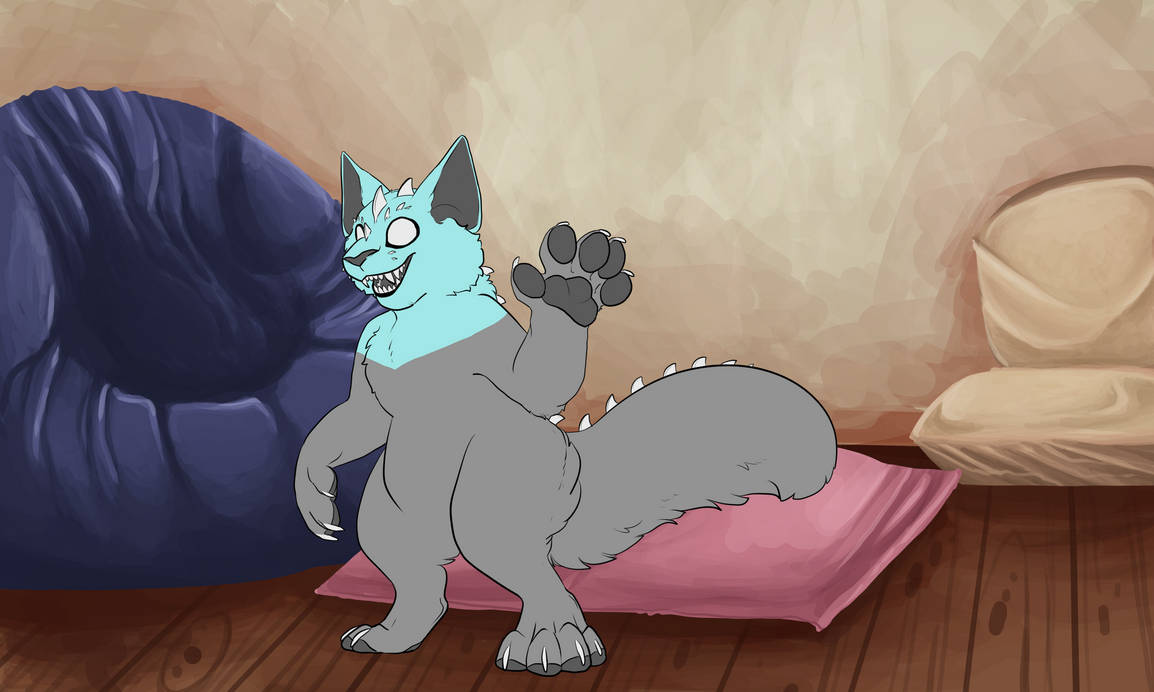
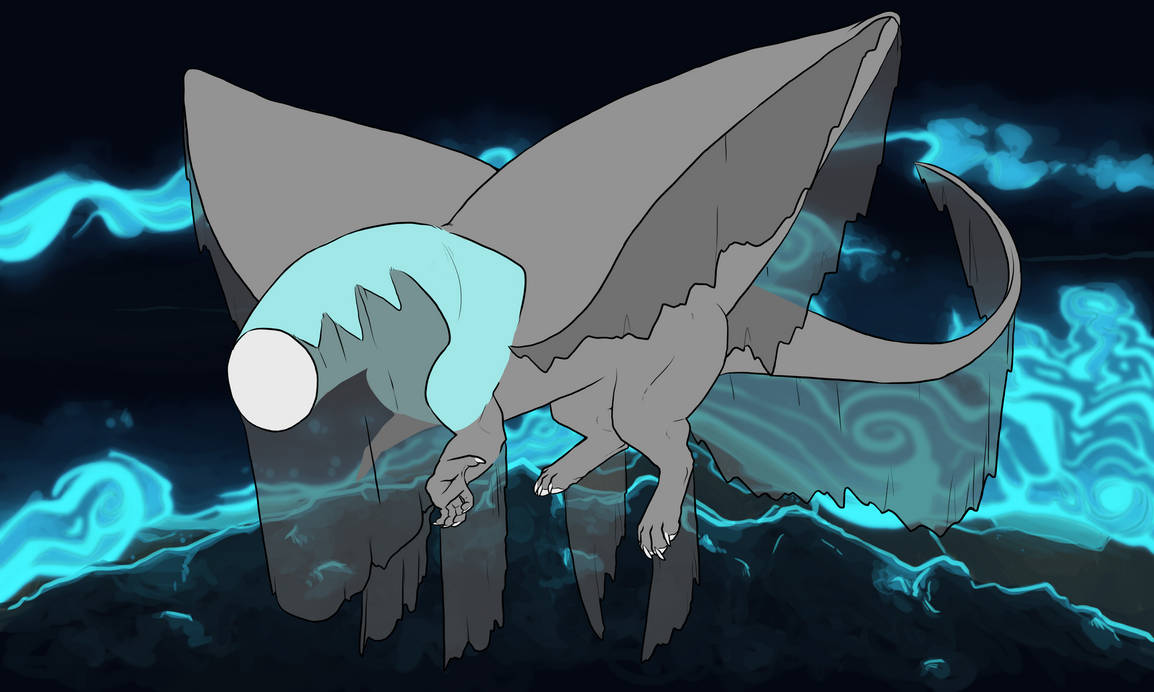
- Hood may be a lighter or darker shade of the base coat, including black and white.
- Hood does not have a restriction on edge hardness.
- Hood should, at minimum, create a visible ring around the neck.
- There can only be breaks in the marking if it's creating multiple rings around the neck. The shoulder and/or head region, if present, must consist of a single unbroken marking.
Examples:
Inkblot (nIn/InIn) (Common)
Causes spots darker than base coat, can be asymmetrical and of multiple sizes.
- Inkblot must be darker than the base coat.
- The spots should be of multiple sizes throughout, and may be irregular and asymmetrical.
- It is typically hard or soft-edged.
- It has no maximum and can cover the full body if desired. It has no minimum, but should be noticeable on the design.
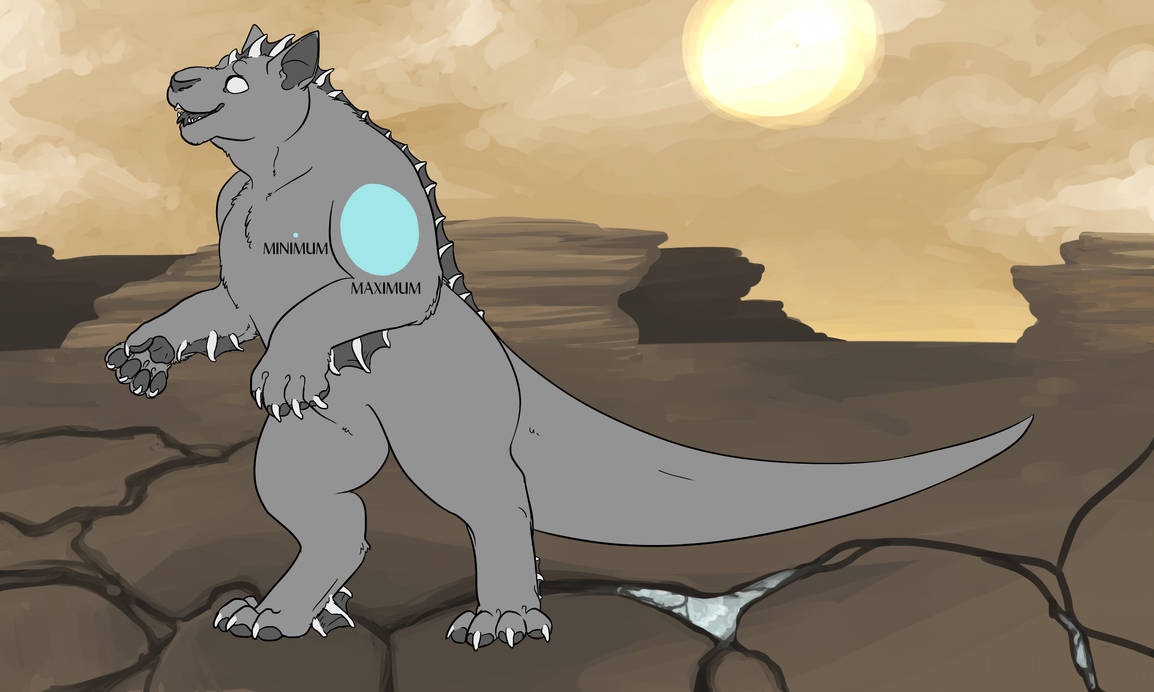
The above image displays the minimum and maximum size for Inkblot spots. Please note that Inkblot should not solely be made up of spots at the maximum or minimum, but these sizes may be scattered about as accents.
Examples:
Merle (nMer/MerMer) (Common)
Large, desaturated patches on the Rixixi's body, often containing dappled patches of the original base coat within.
- Can be translucent to show the markings underneath! Markings dislaying on top of Merle can be desaturated or display normally.
- Edges can be textured, soft, or blended. If blended, the entire marking should not be blended out and should still have a section that registers as a solid patch.
- Must be more desaturated and/or lighter than the base coat.
- Can be fullbody or covering partial sections of the body. Should contain holes in the marking or spots of the base coat.
- Should appear, at minimum, on 30% of the design. Can appear in multiple patches.
Unlike in Earth dogs, there are no known health problems for Rixixi caused by homozygous Merle.
You can go against this if you like for your own personal characters' lore, this note is just here to let folks know that it won't result in negative effects and rad sicknesses when bred for.
Examples:
Okapi (nOkp/OkpOkp) (Common)
Range:
- Okapi should be hard-edged.
- It must be lighter than base, and can be white.
- Okapi must at least visibly appear on one pair of limbs. It does not have to appear on the face.
- All points should be striped, including the face. There can be solid patches, especially near the ankles and wrists. The face marking can be a solid patch with stripes cut into it.
Examples:
Points (nPt/PtPt) (Common)
- Points must be darker or lighter than the base coat.
- It has no restriction on edge hardness.
- Points should cover two specific points at minimum - the points include the head, the tail, the front legs, and the back legs.
- The points should touch the very end of whatever zone they're in. They should at least reach up to the ankles if covering the legs.
Examples:
Daggerstabbed (nDs/DsDs) (Uncommon)
Range:
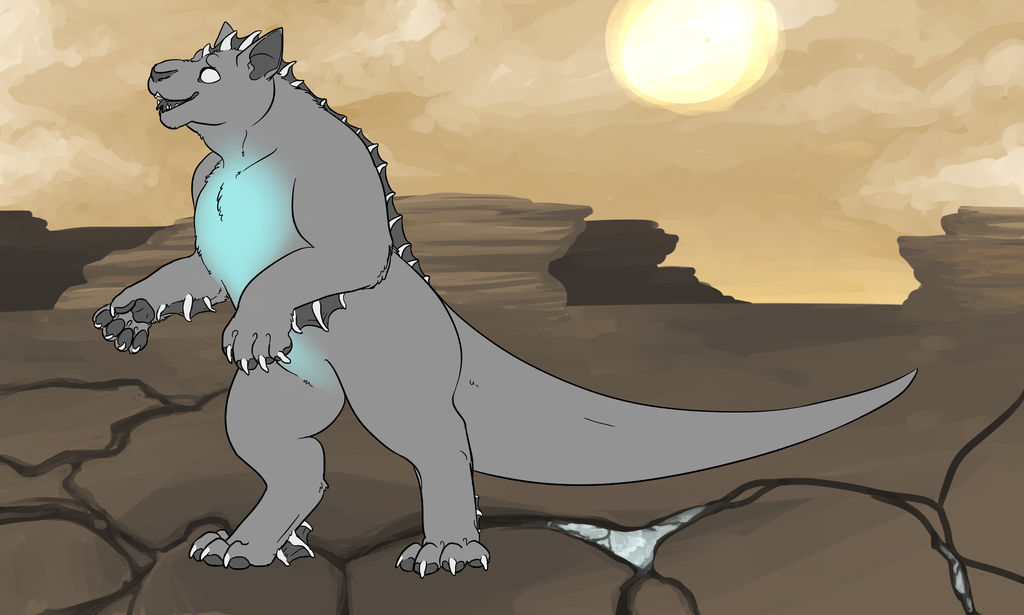
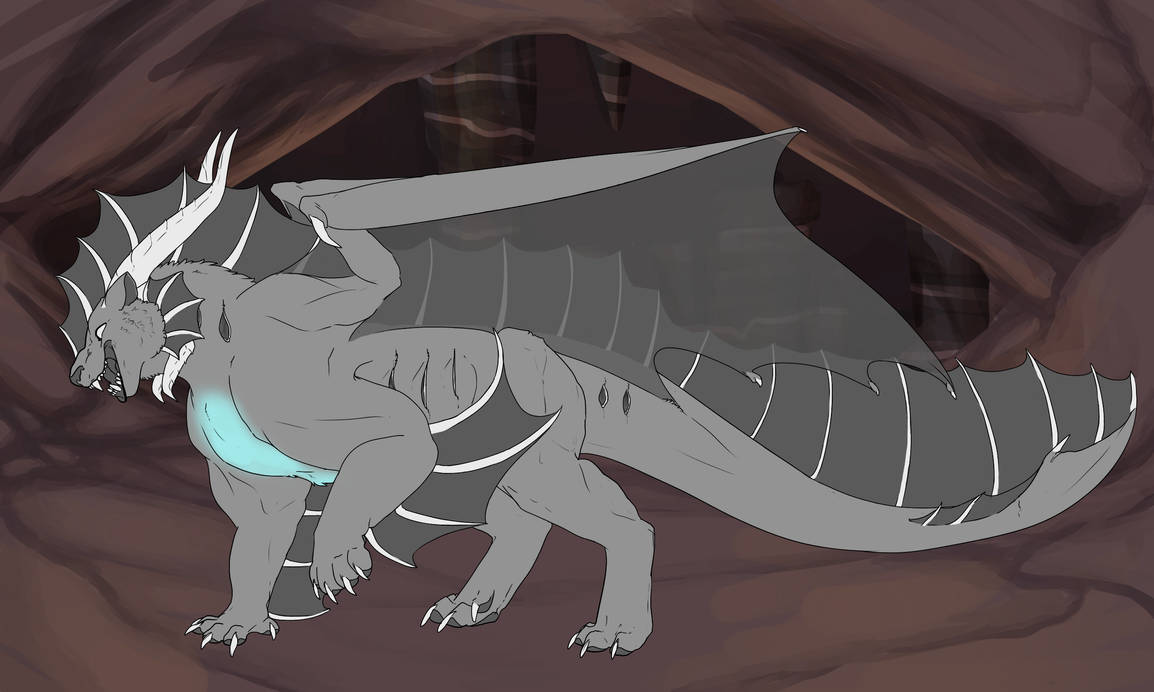
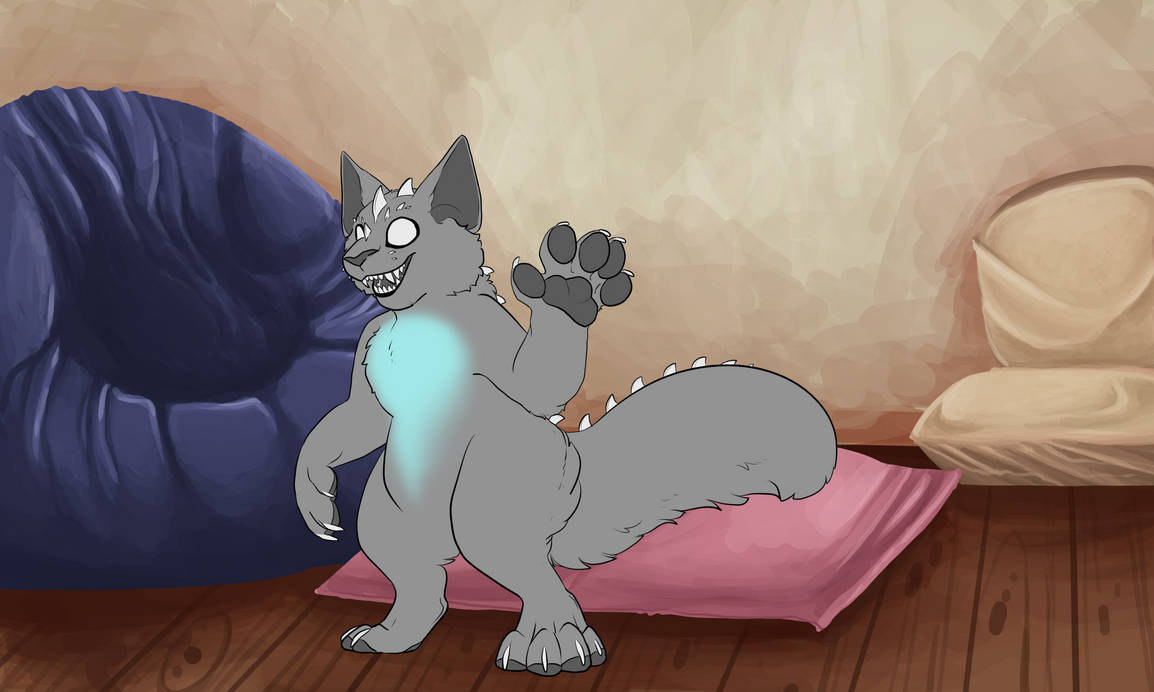

- Must be a shade of red - bright red, blood red, pale red, or red-brown recommended. Can contain a more saturated color in the center and blend out to a desaturated color.
- Daggerstabbed's color can be overridden by the Rixixi's blood color if applicable.
- Edges should be fully blended out.
- The marking should be similar to the chest marking of a bleeding-heart dove.
- At minimum, Daggerstabbed should appear on the chest. The trail down the belly is optional.
